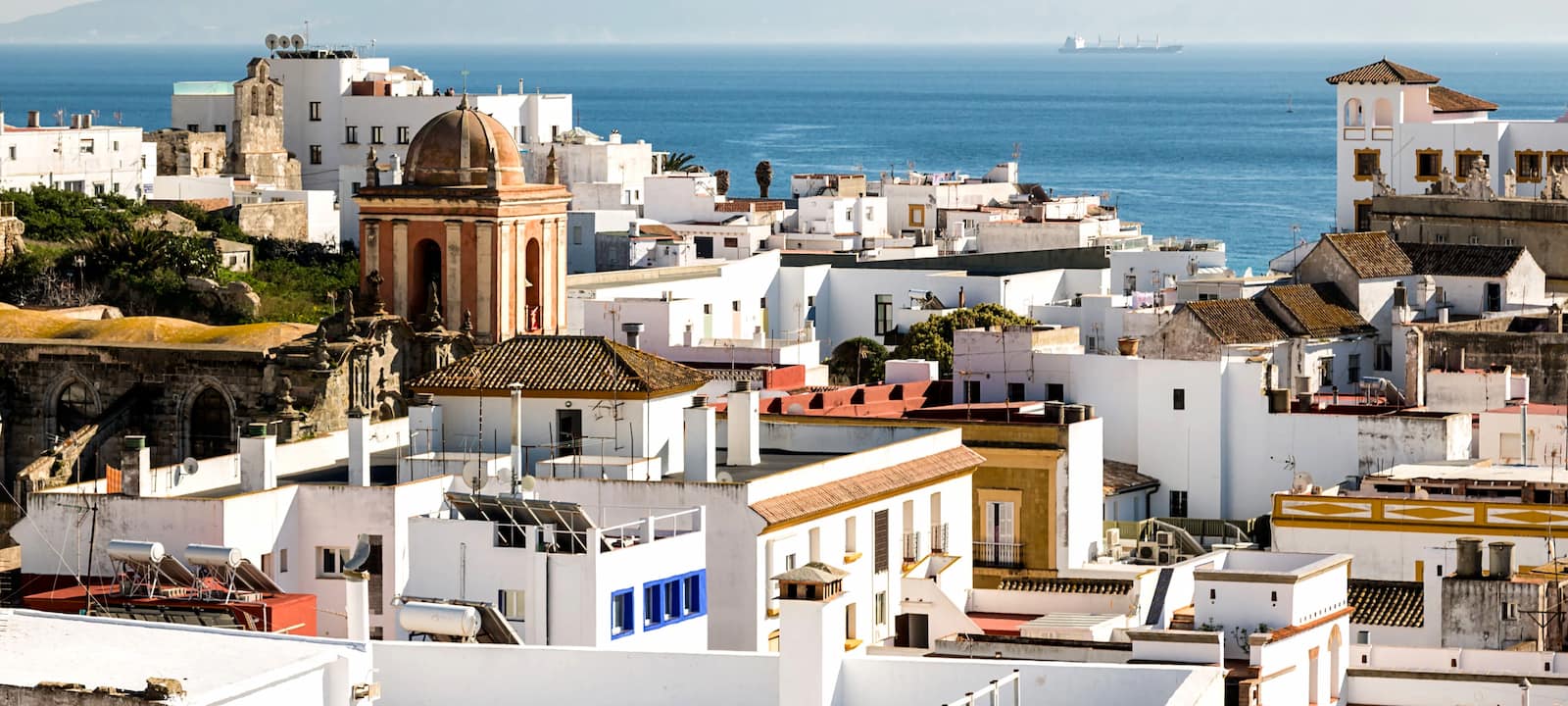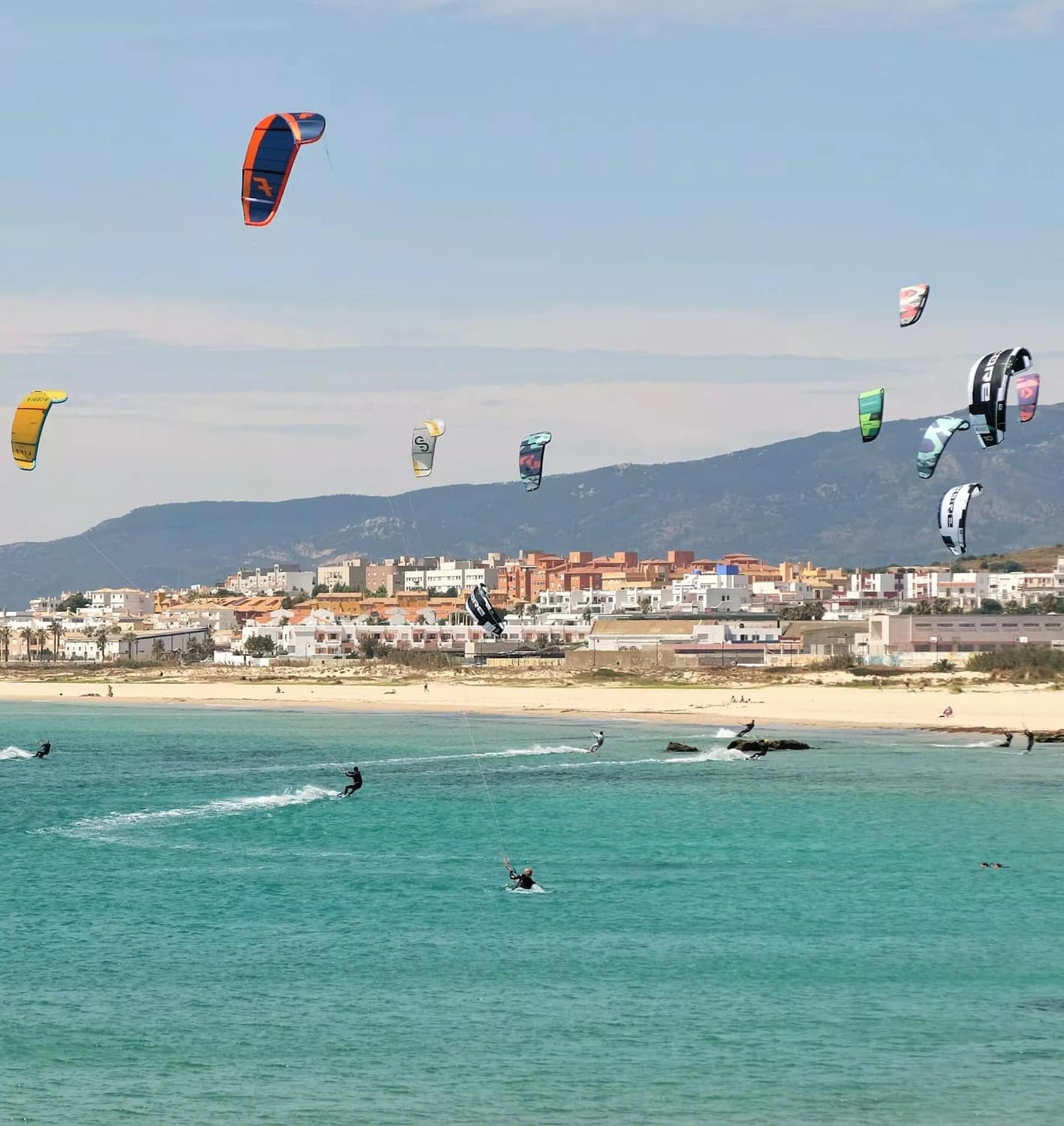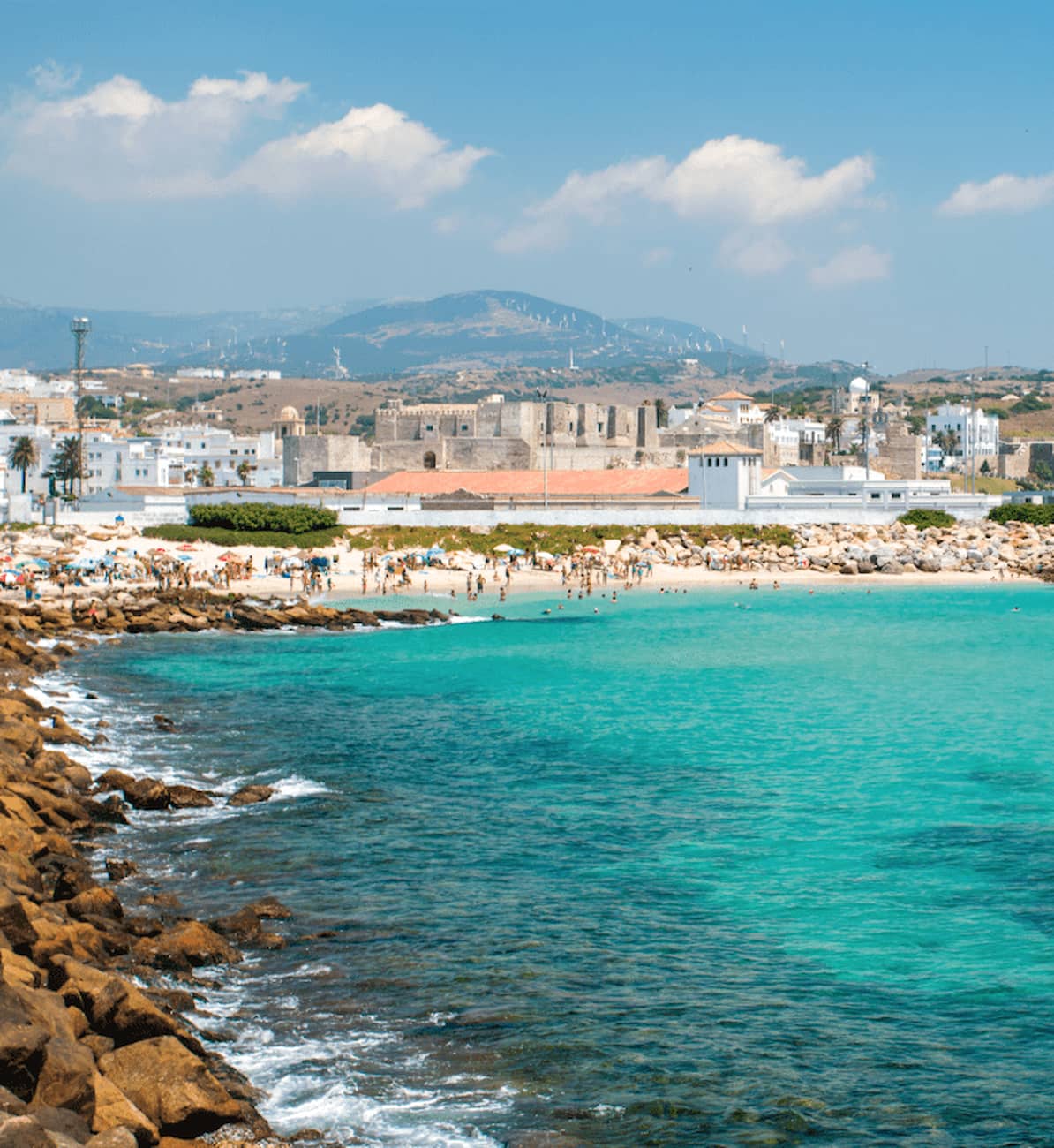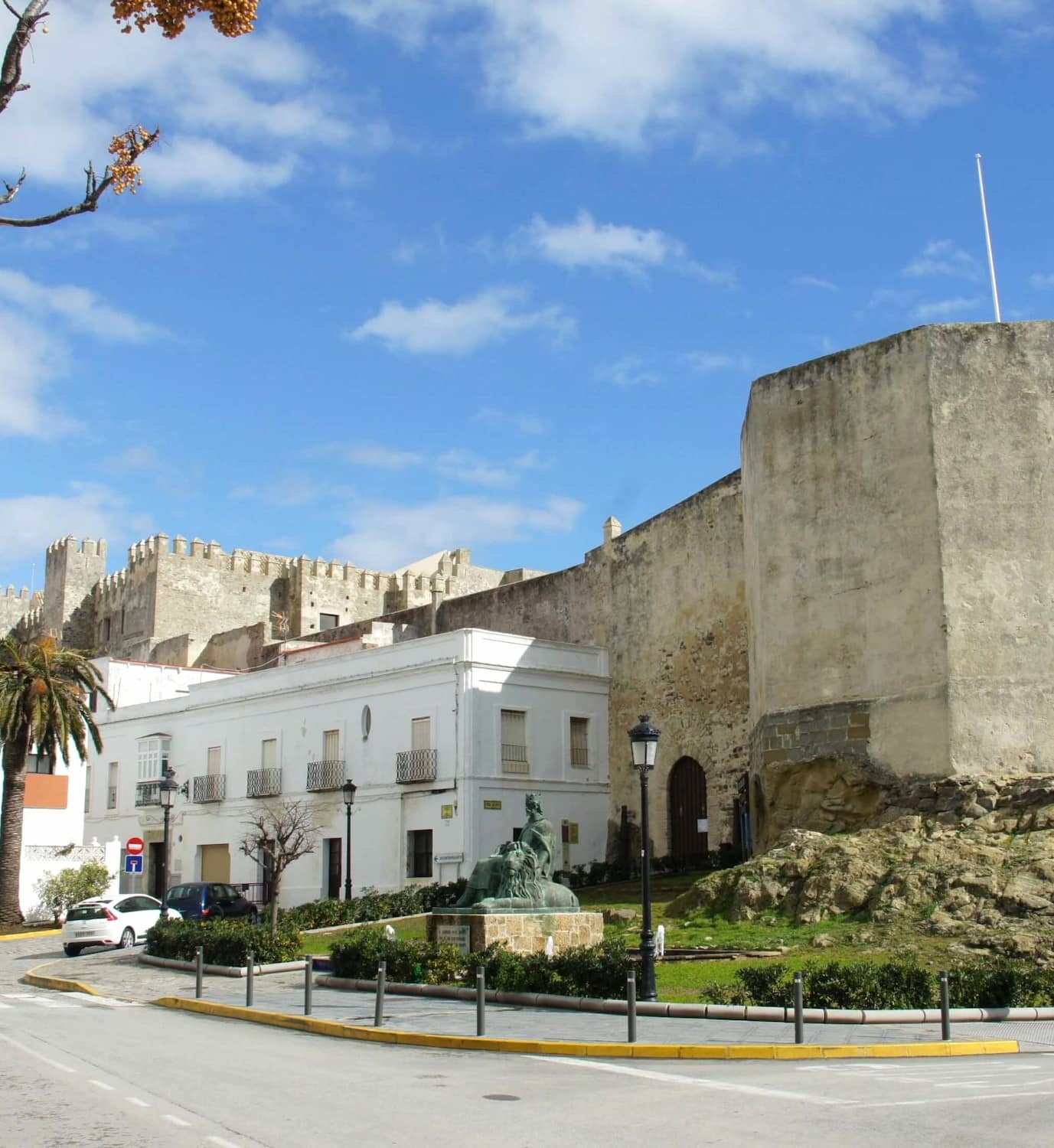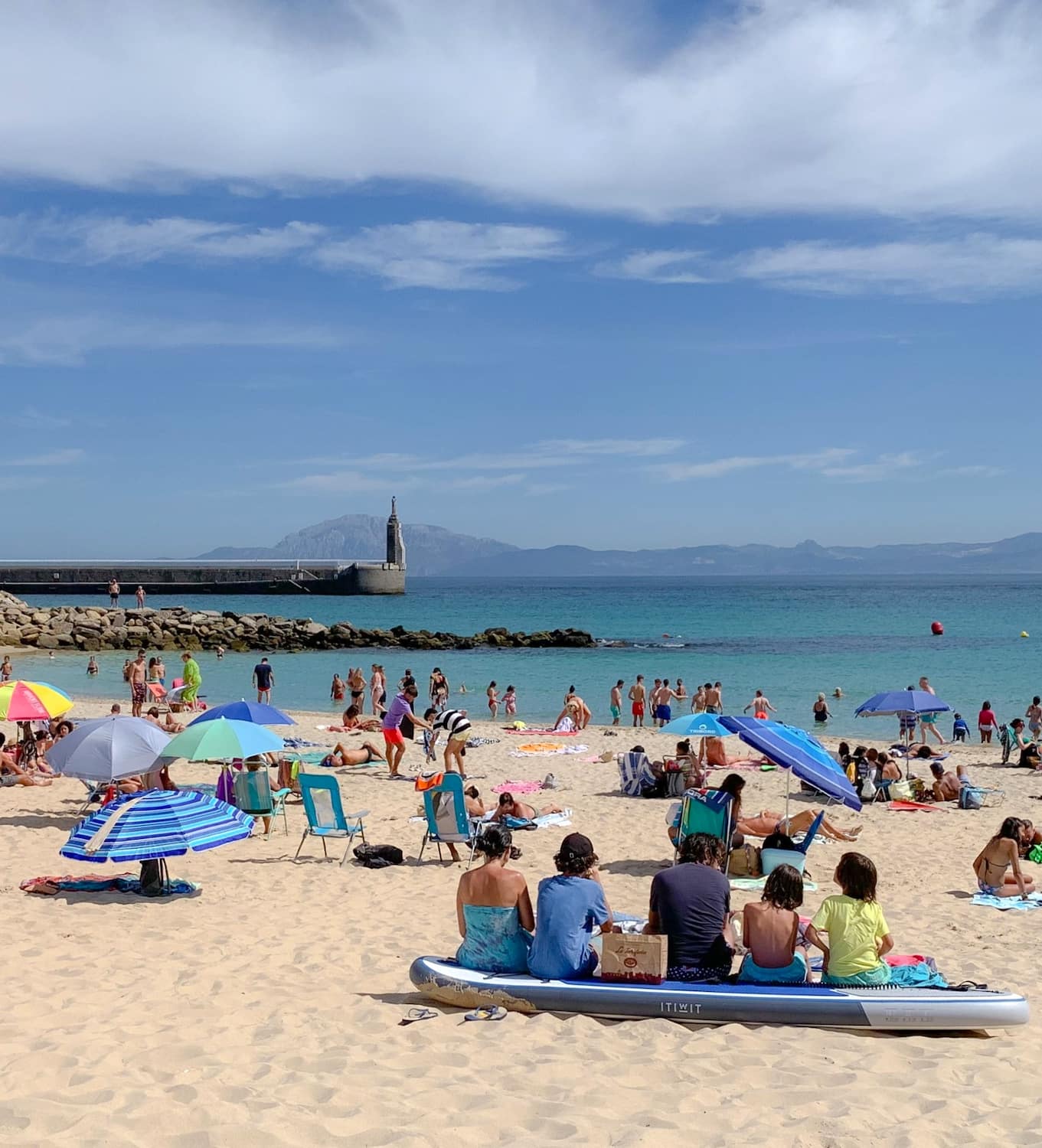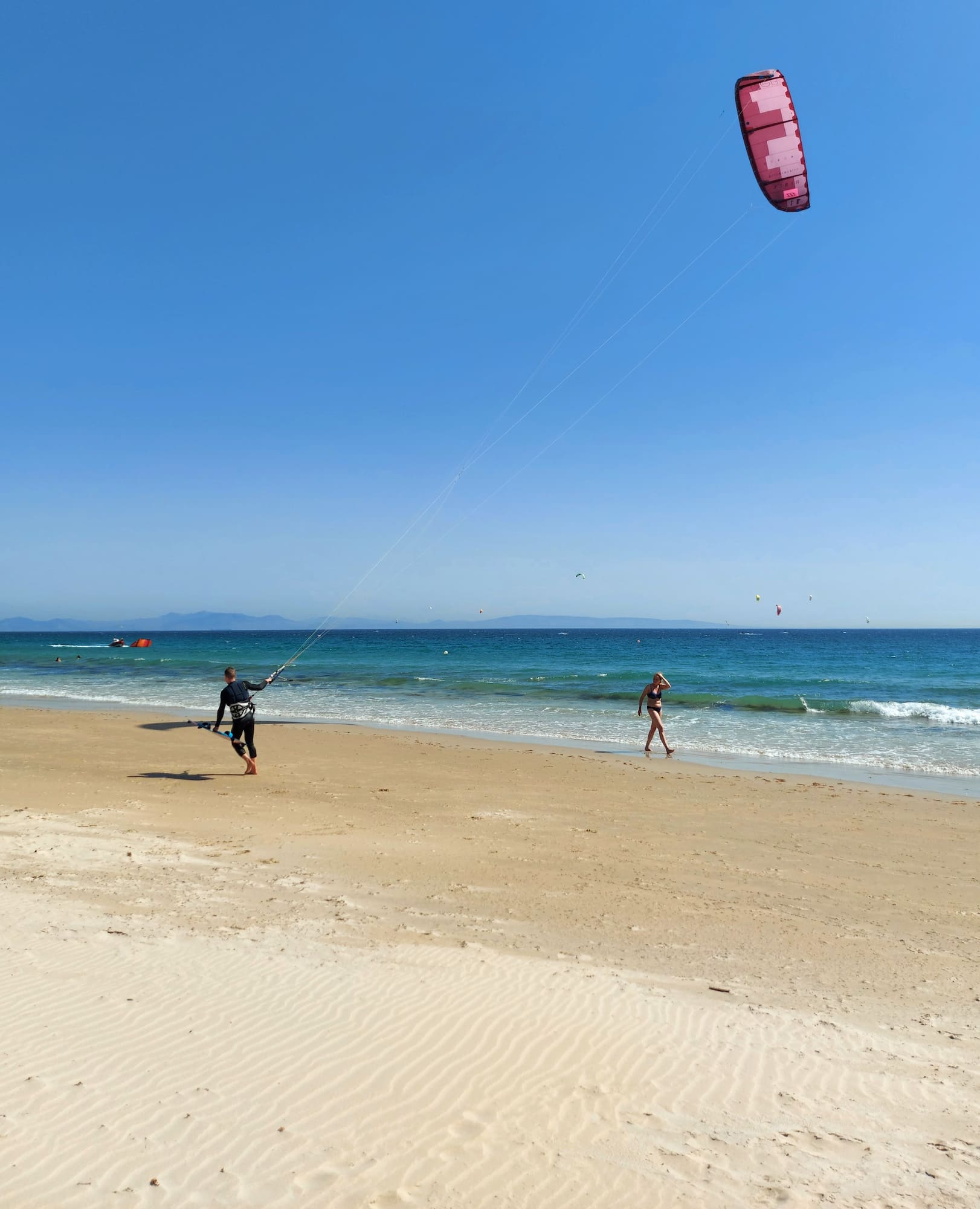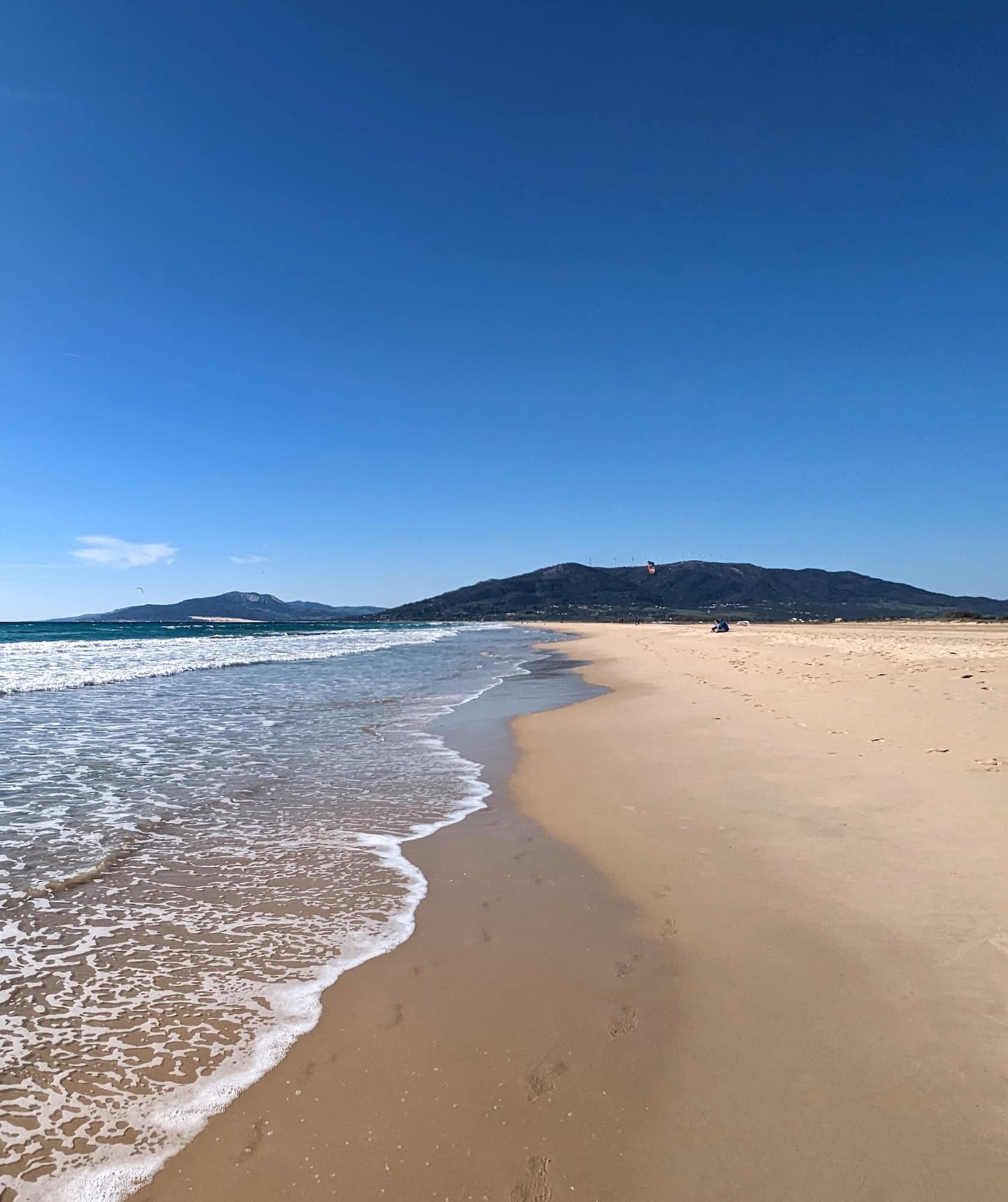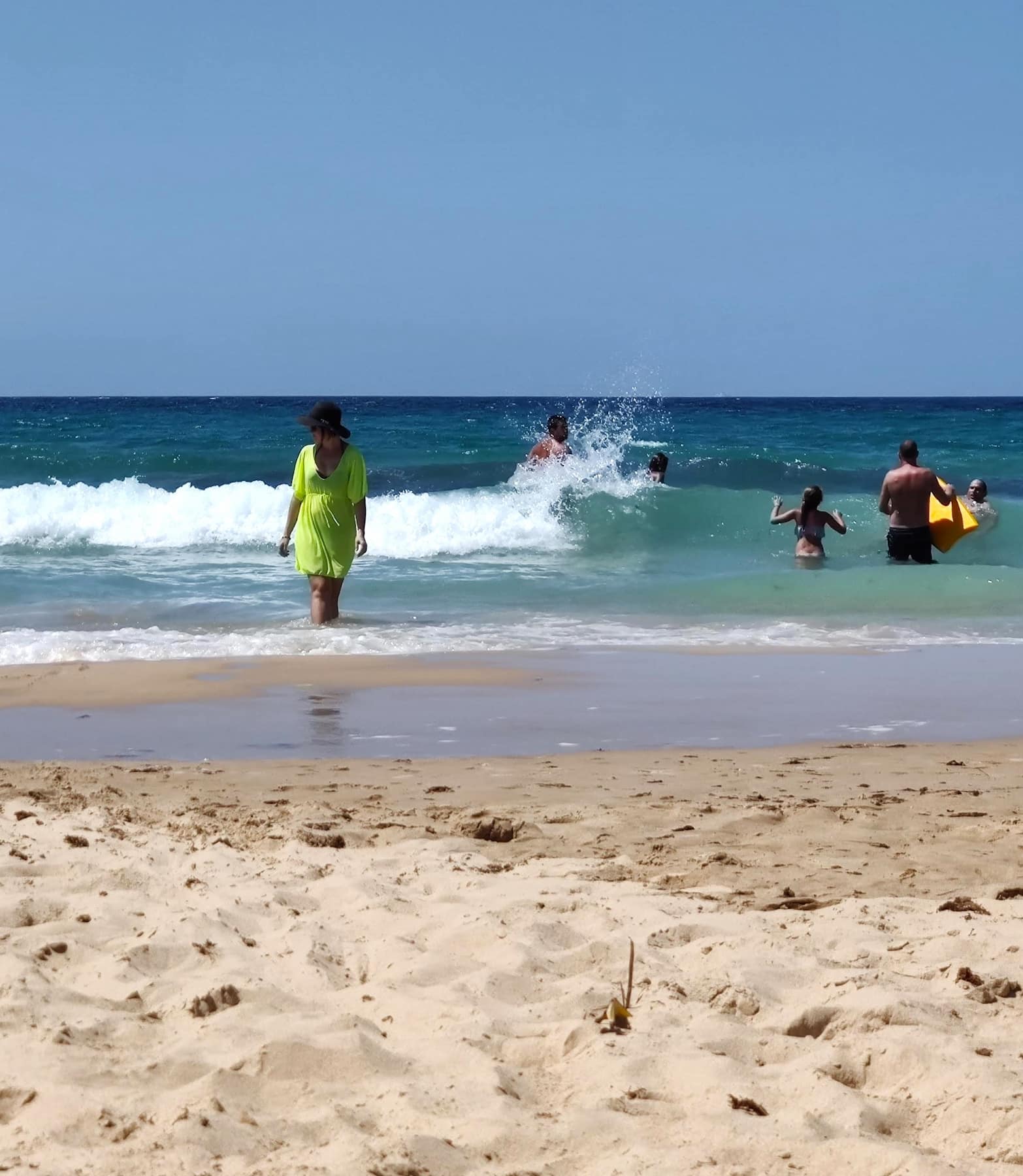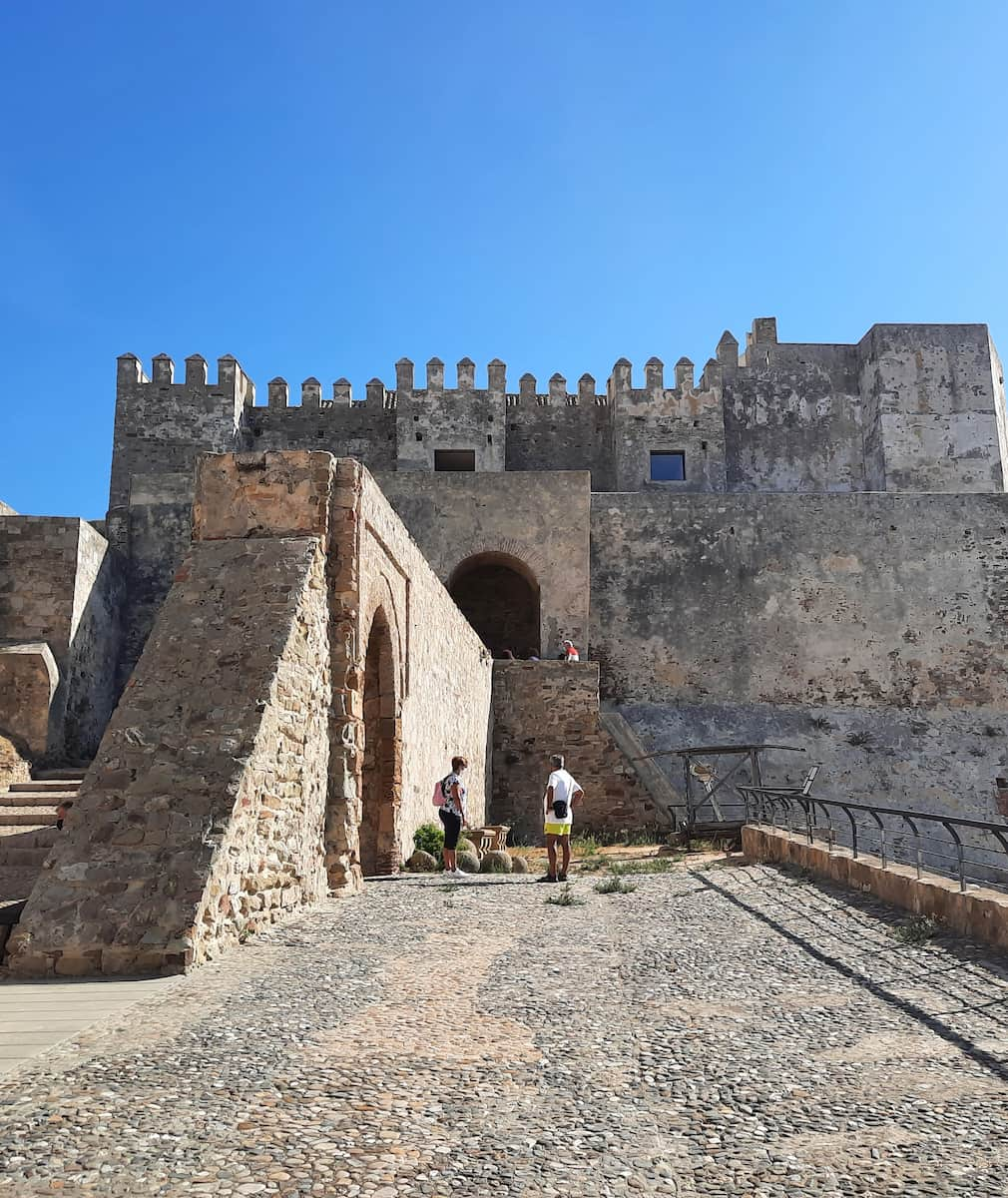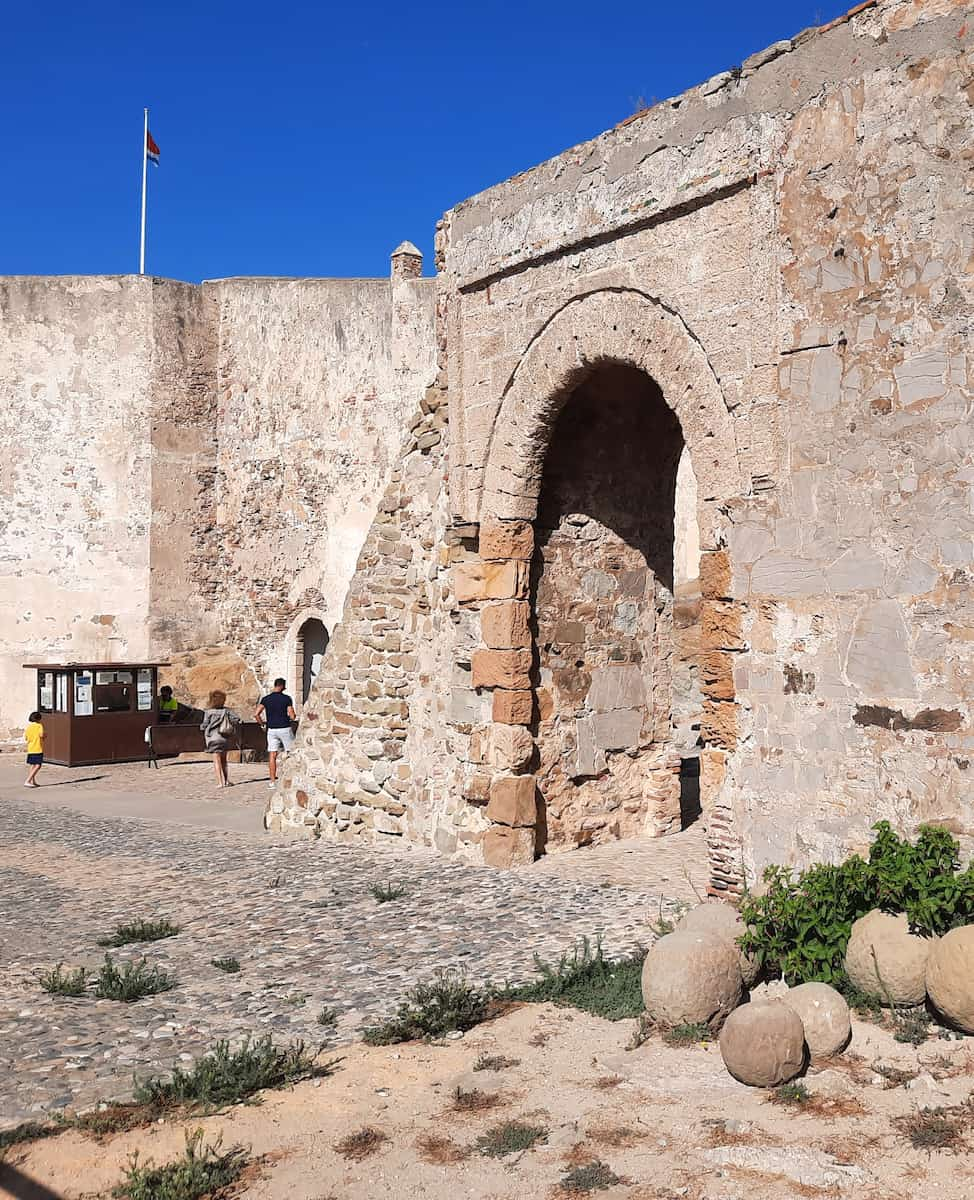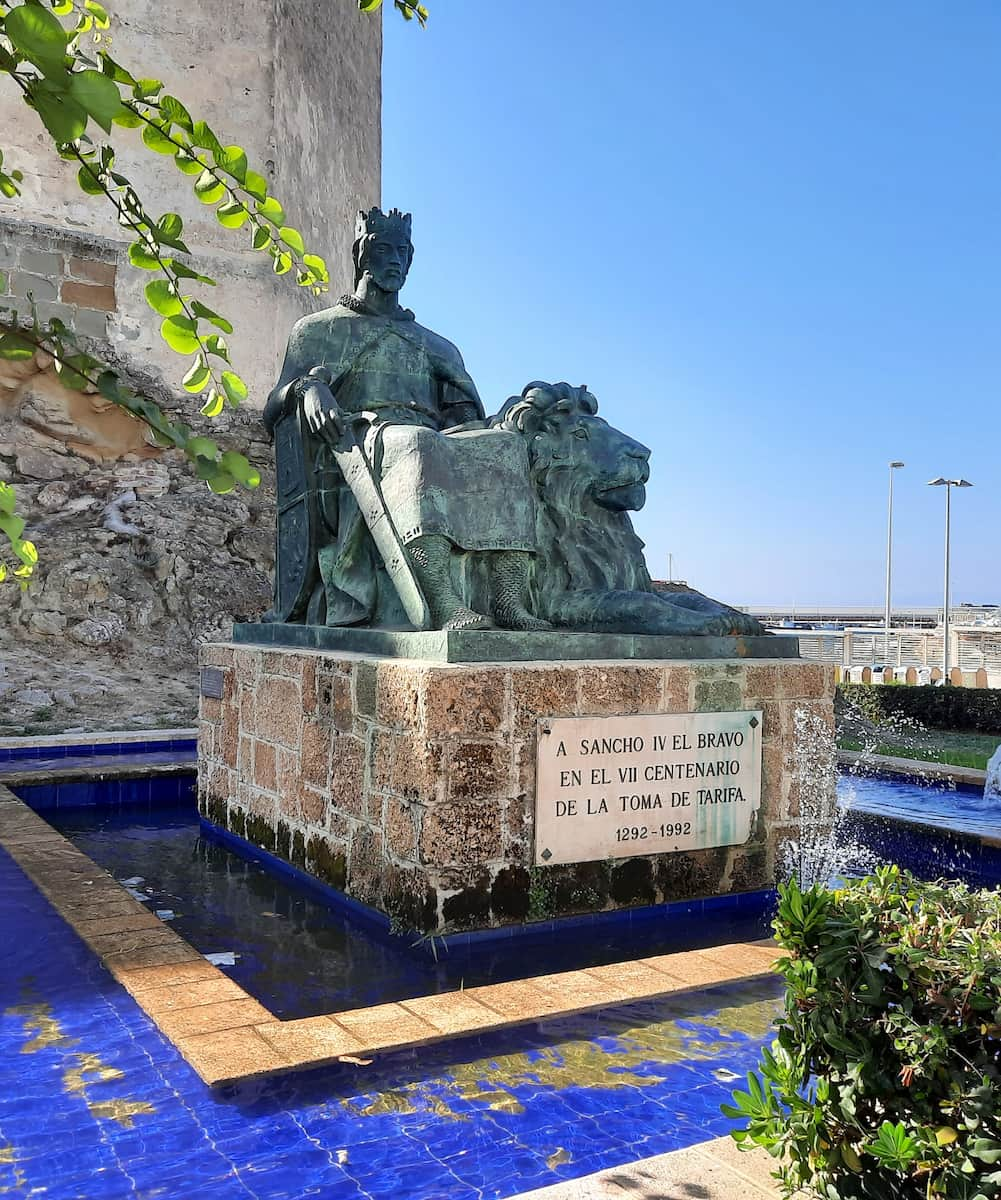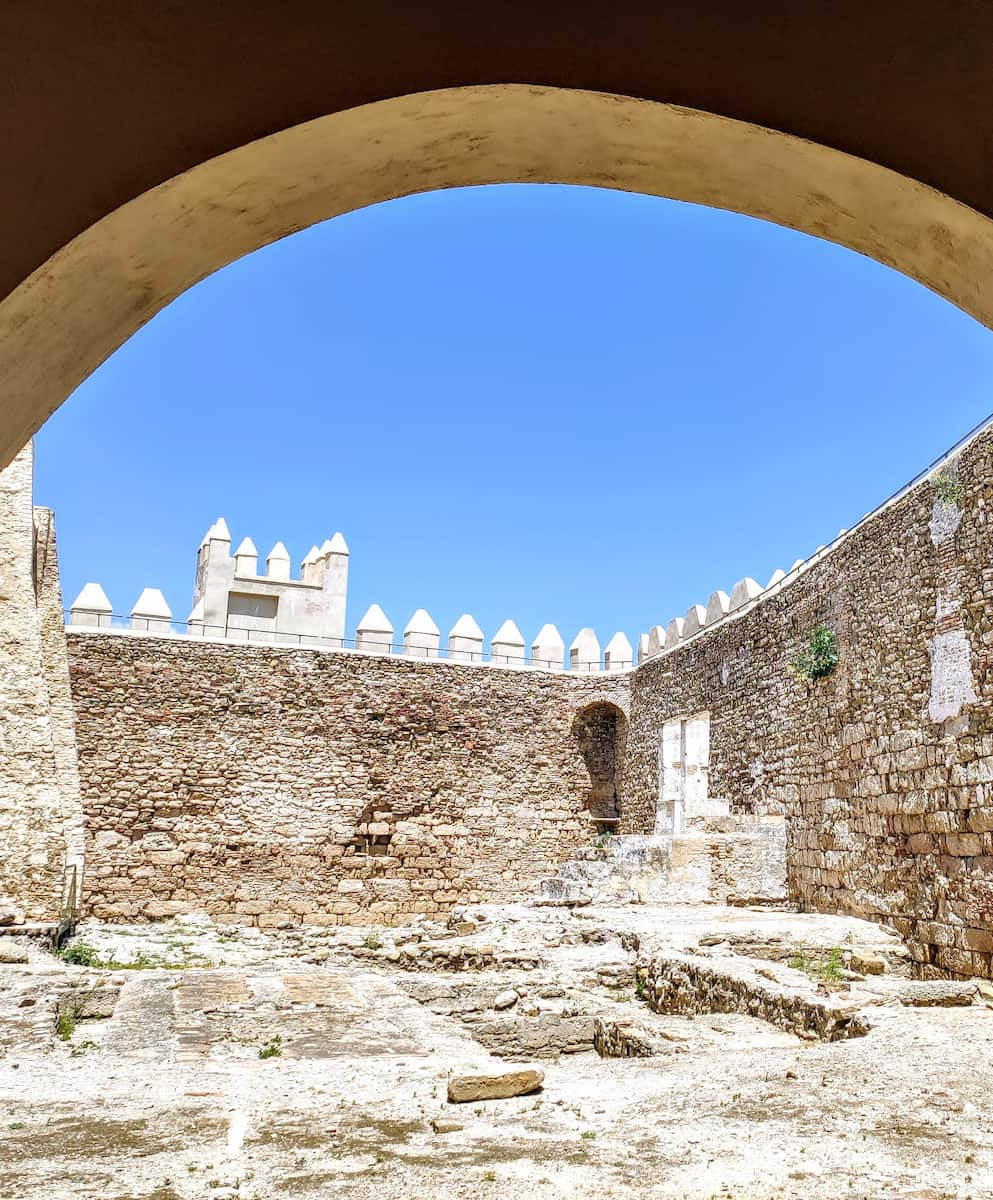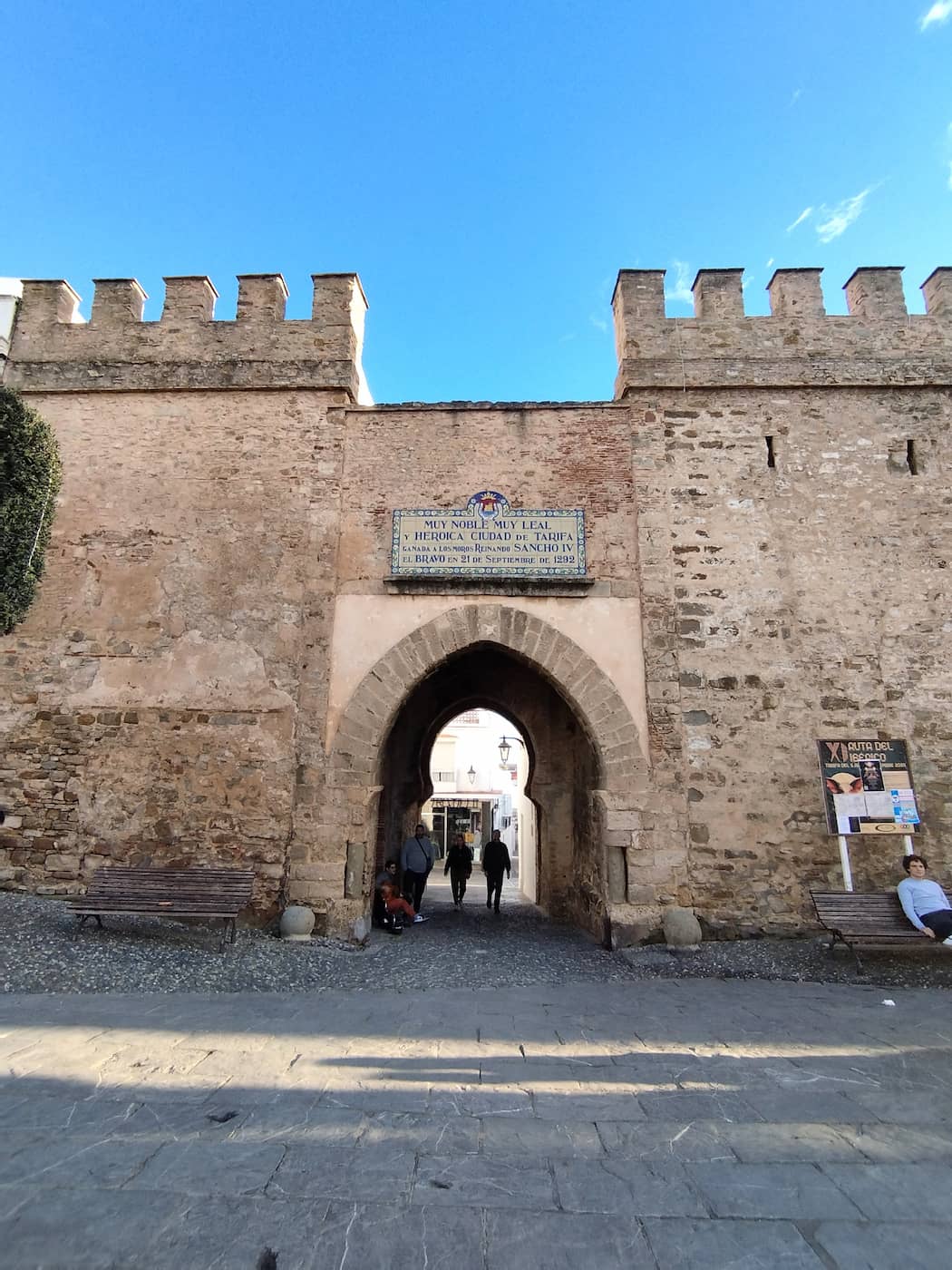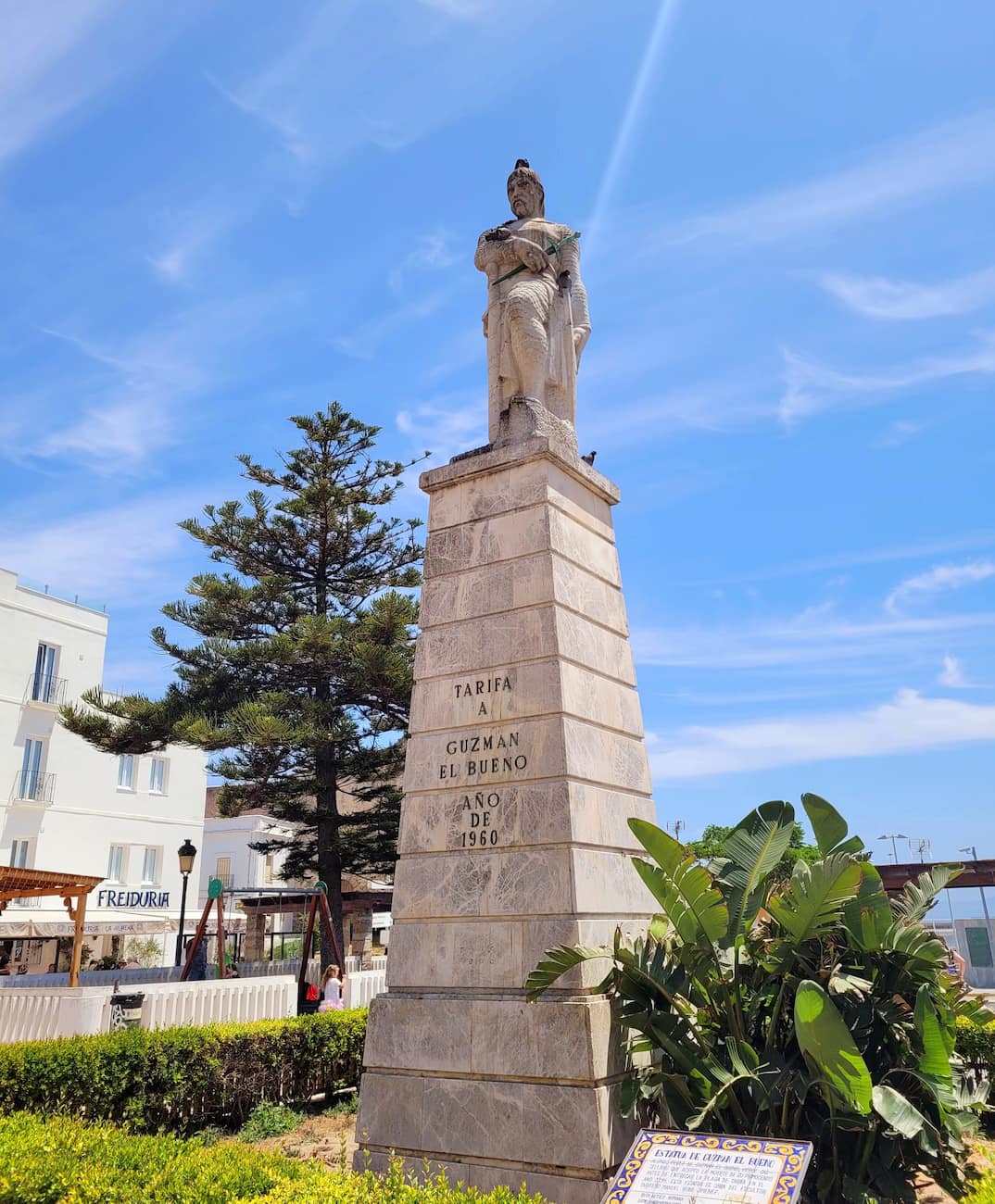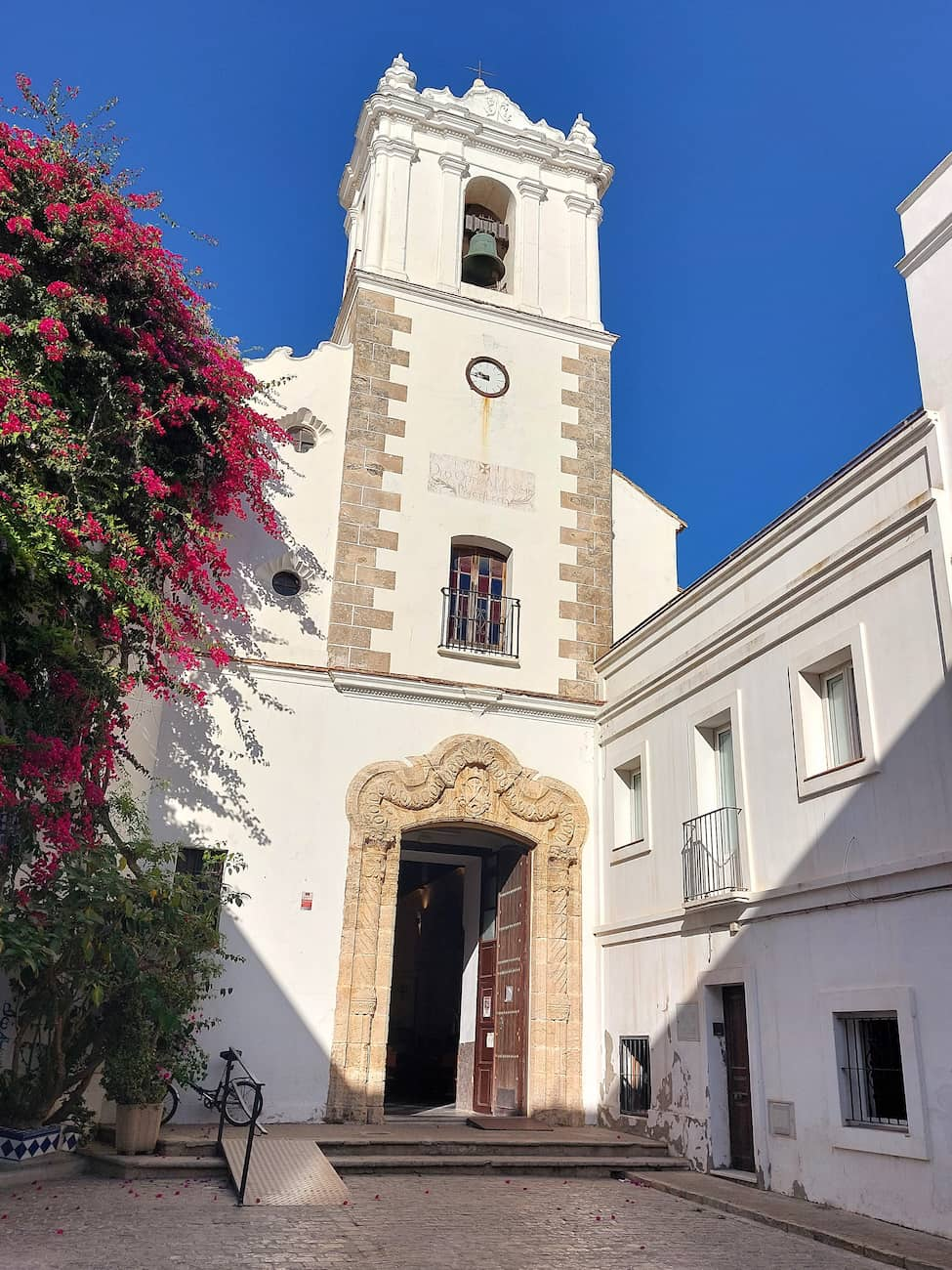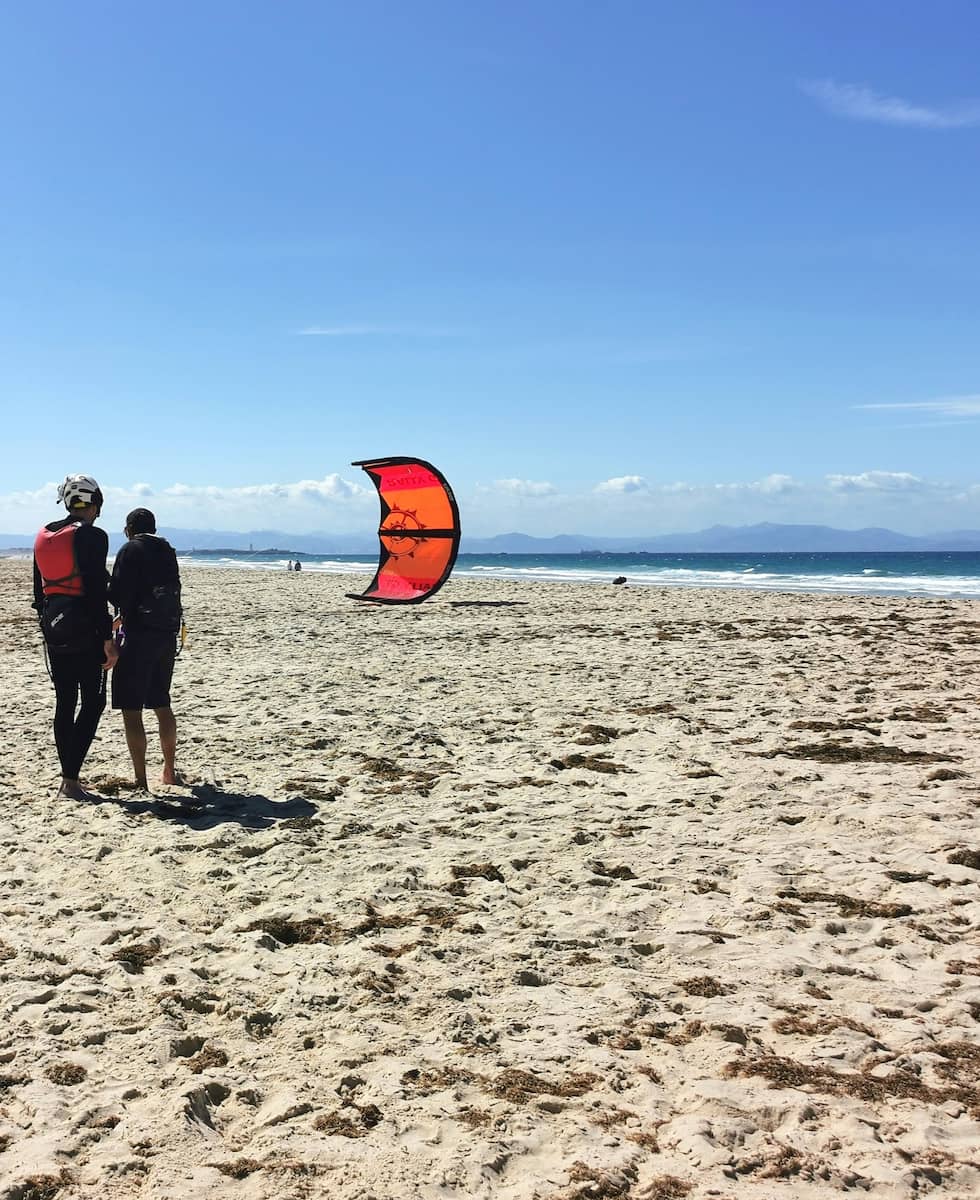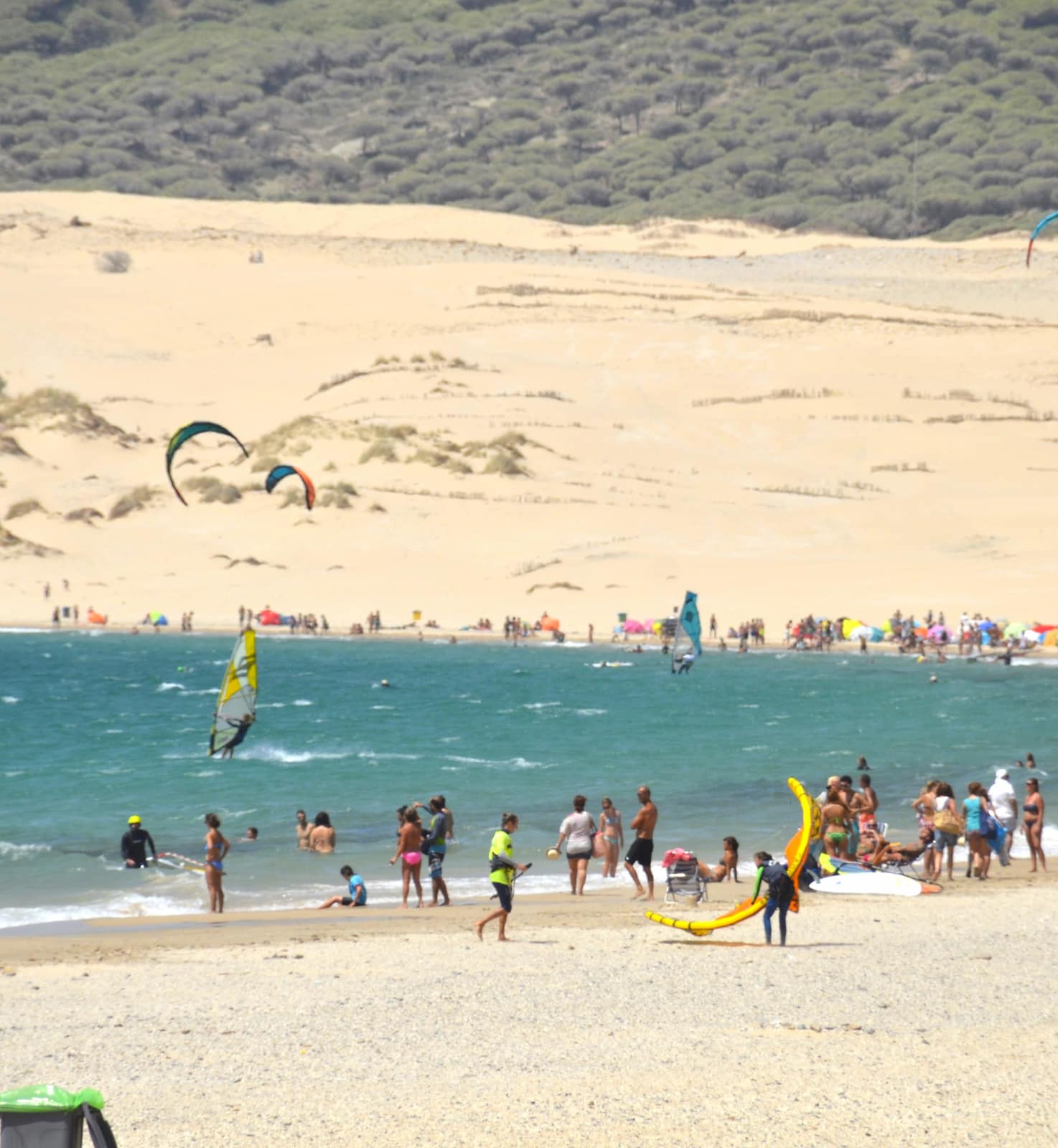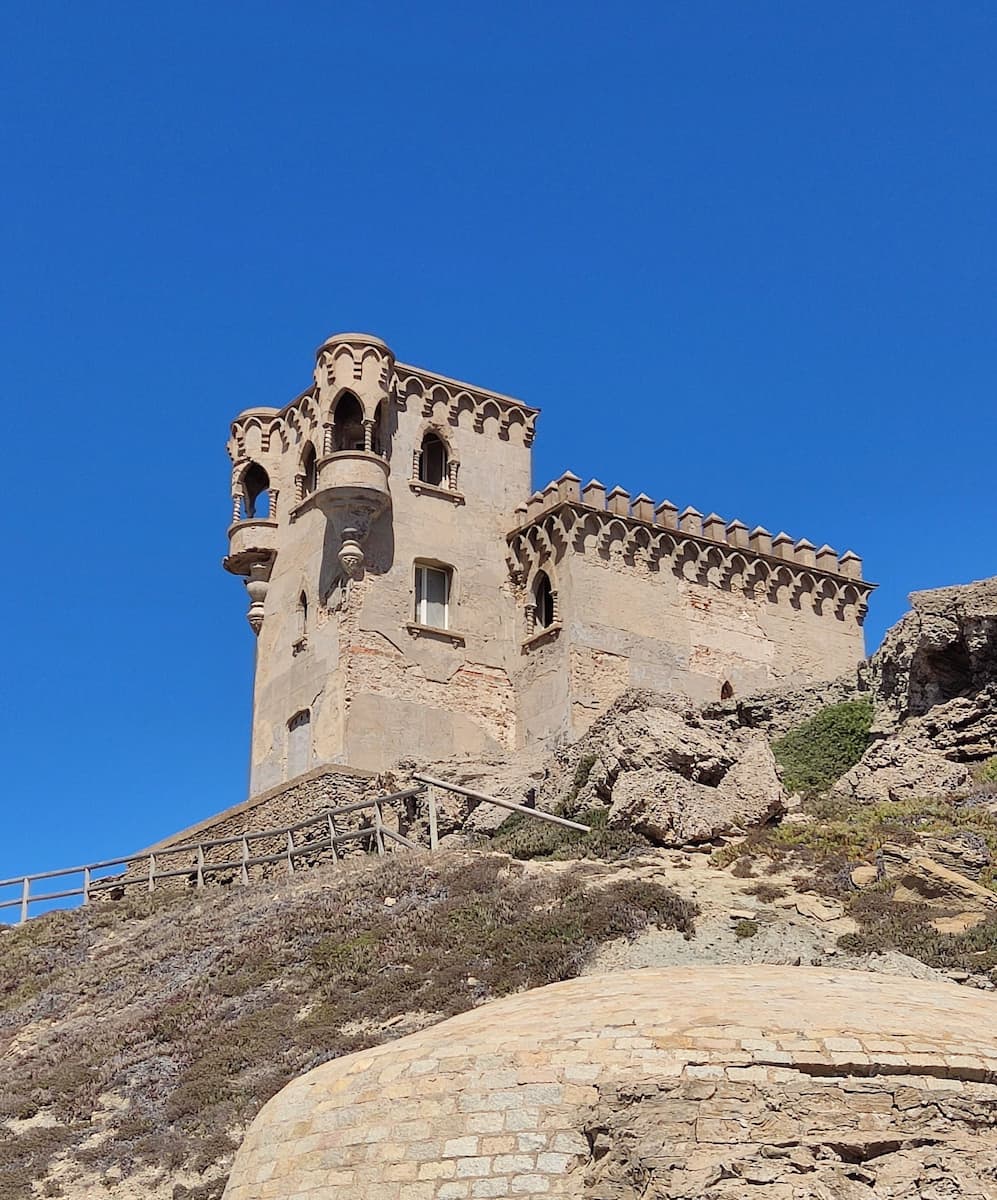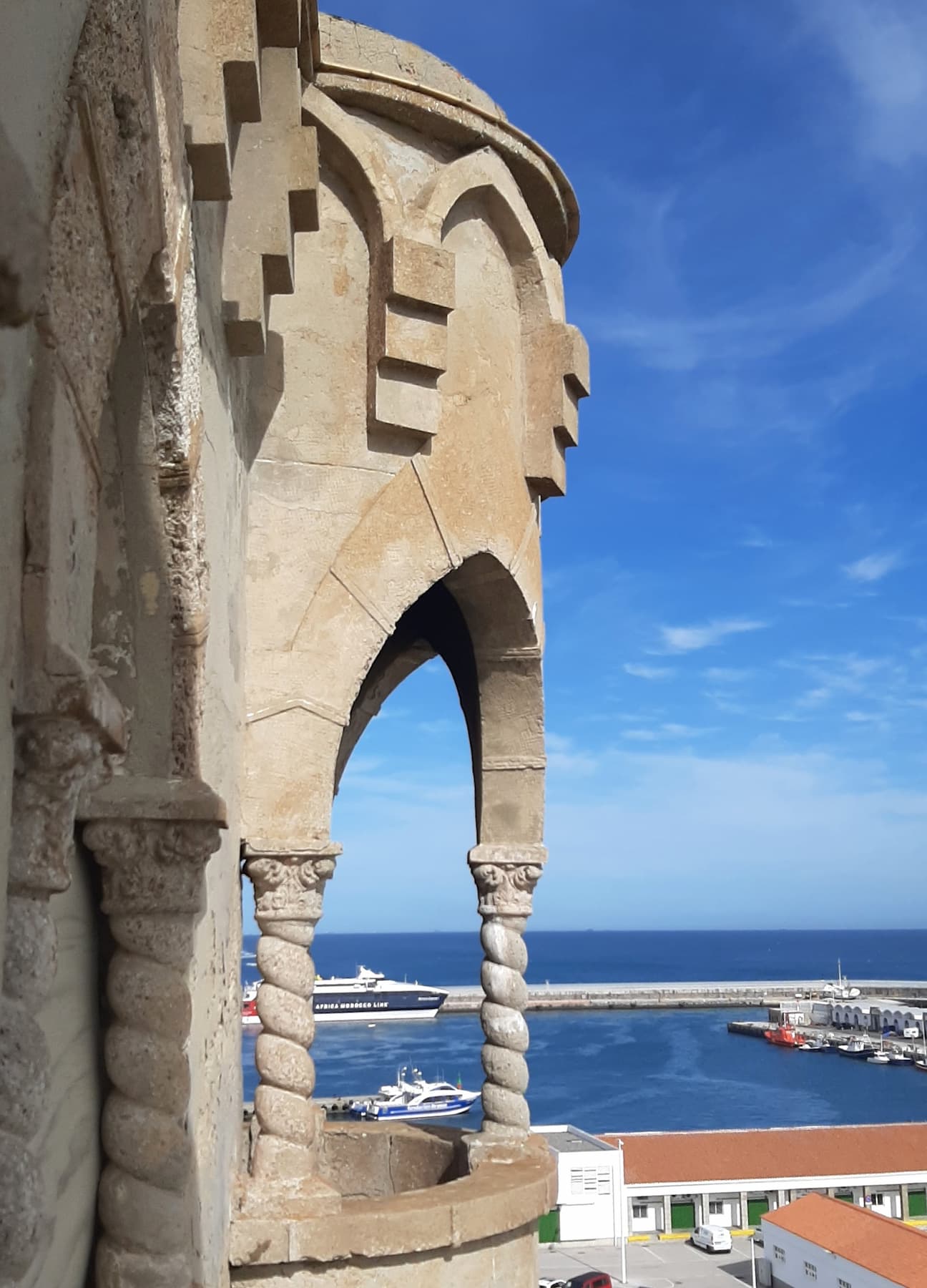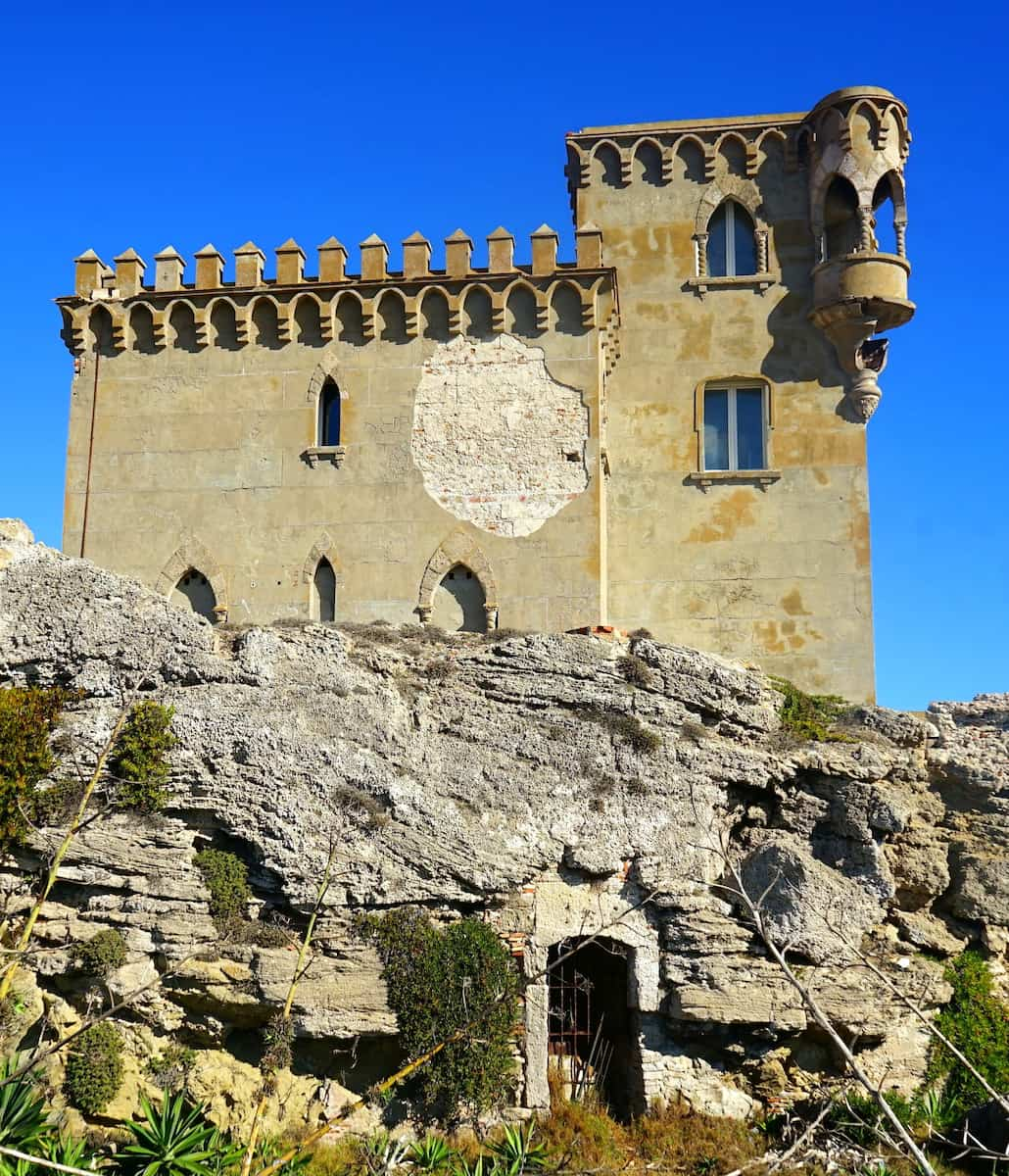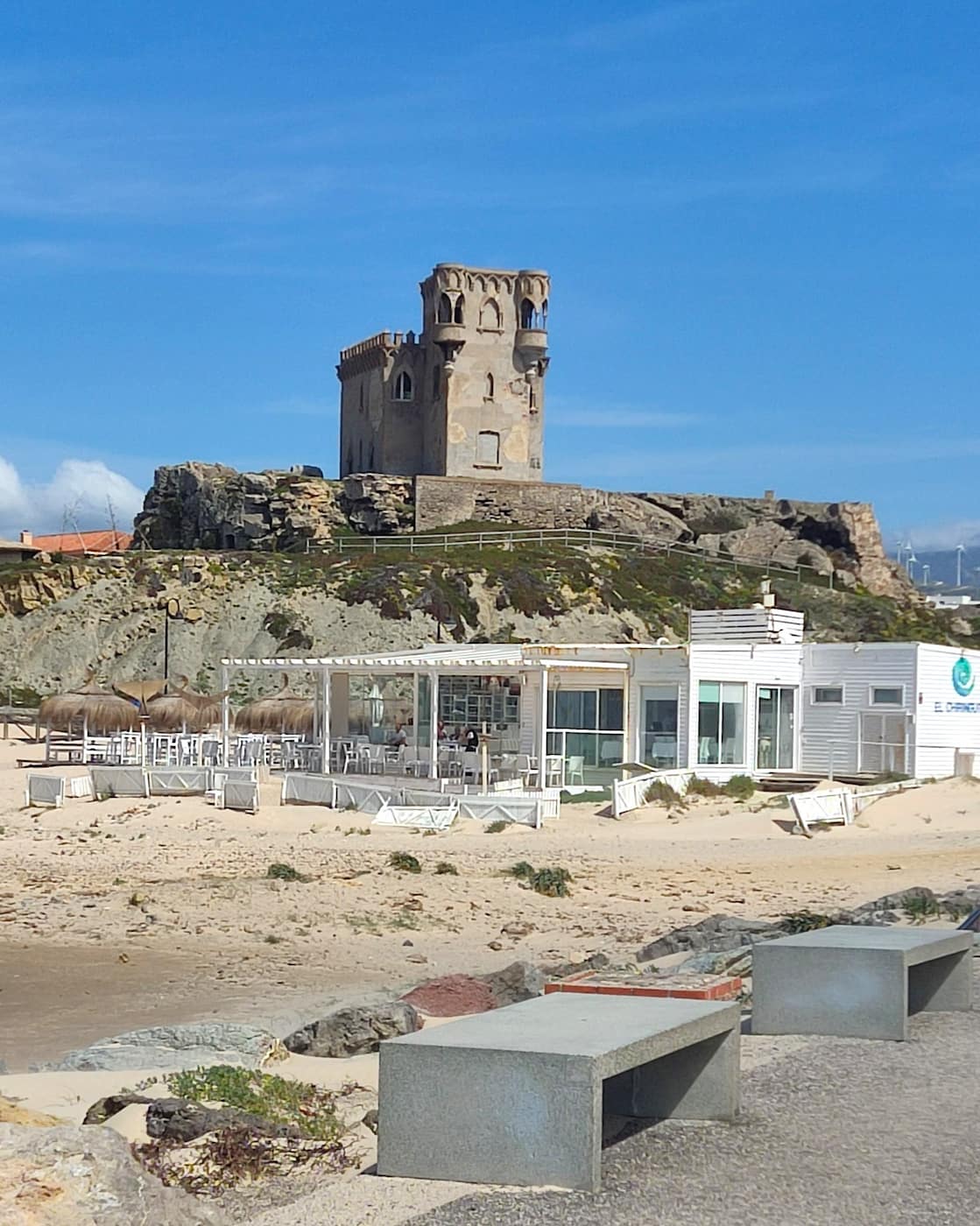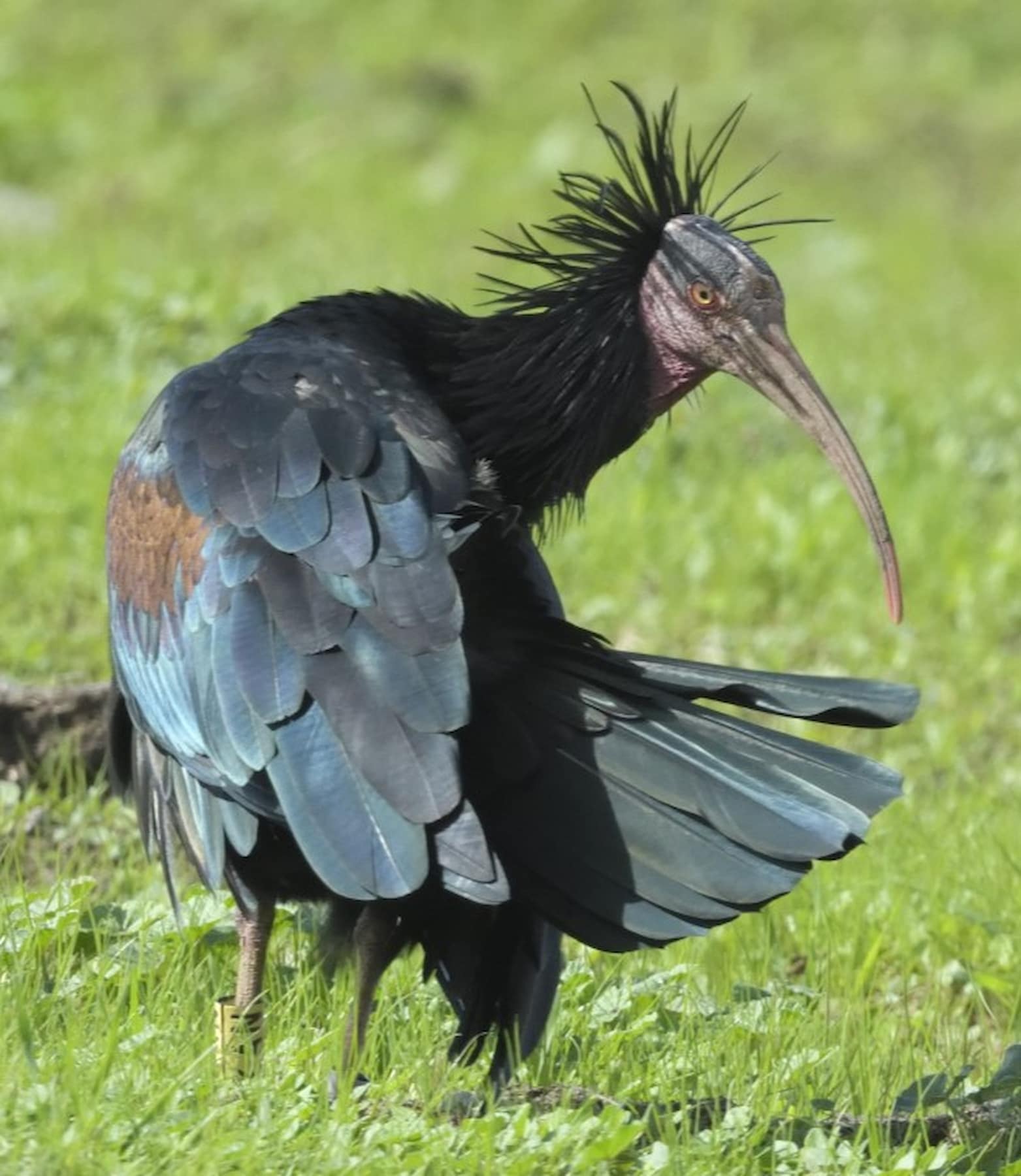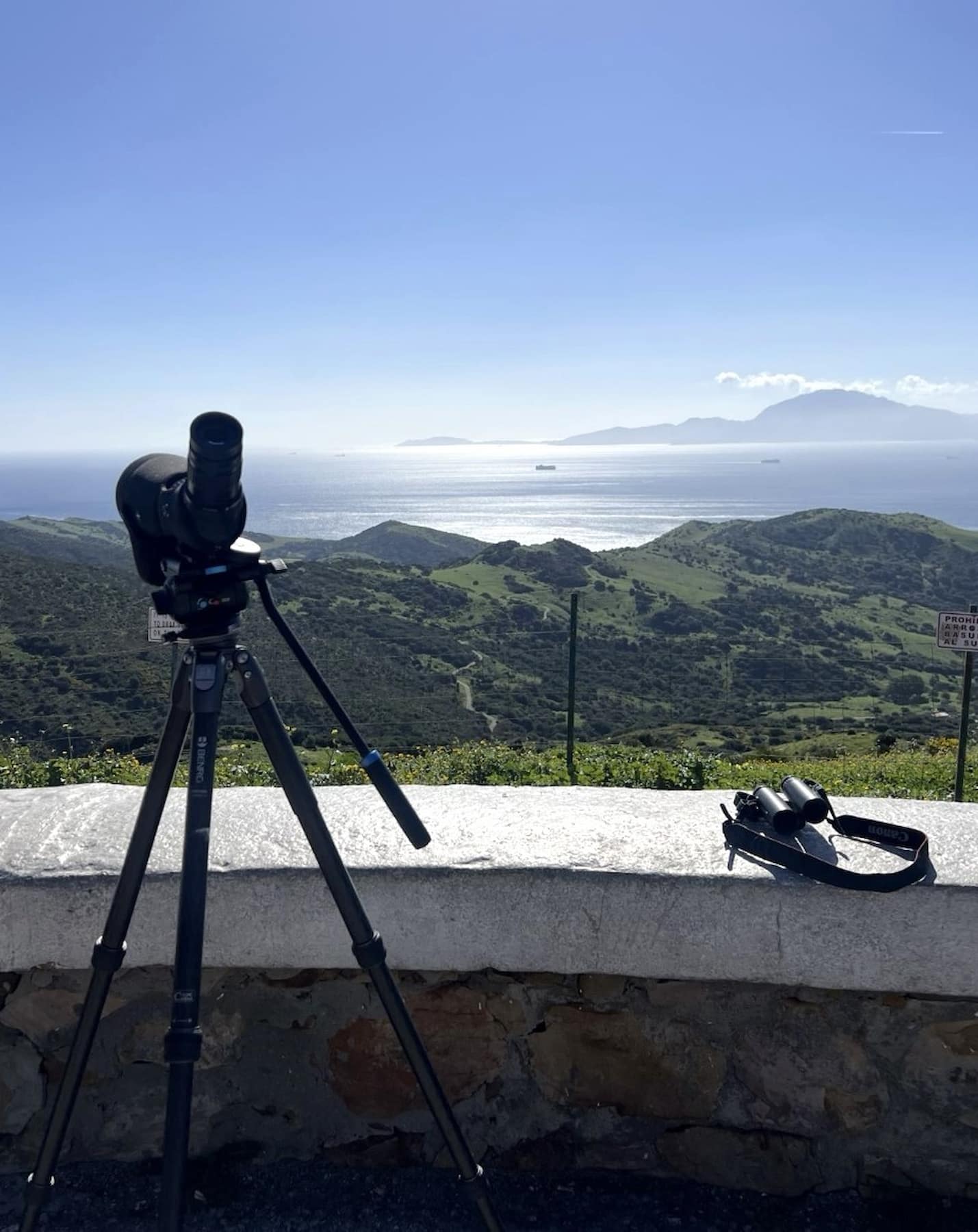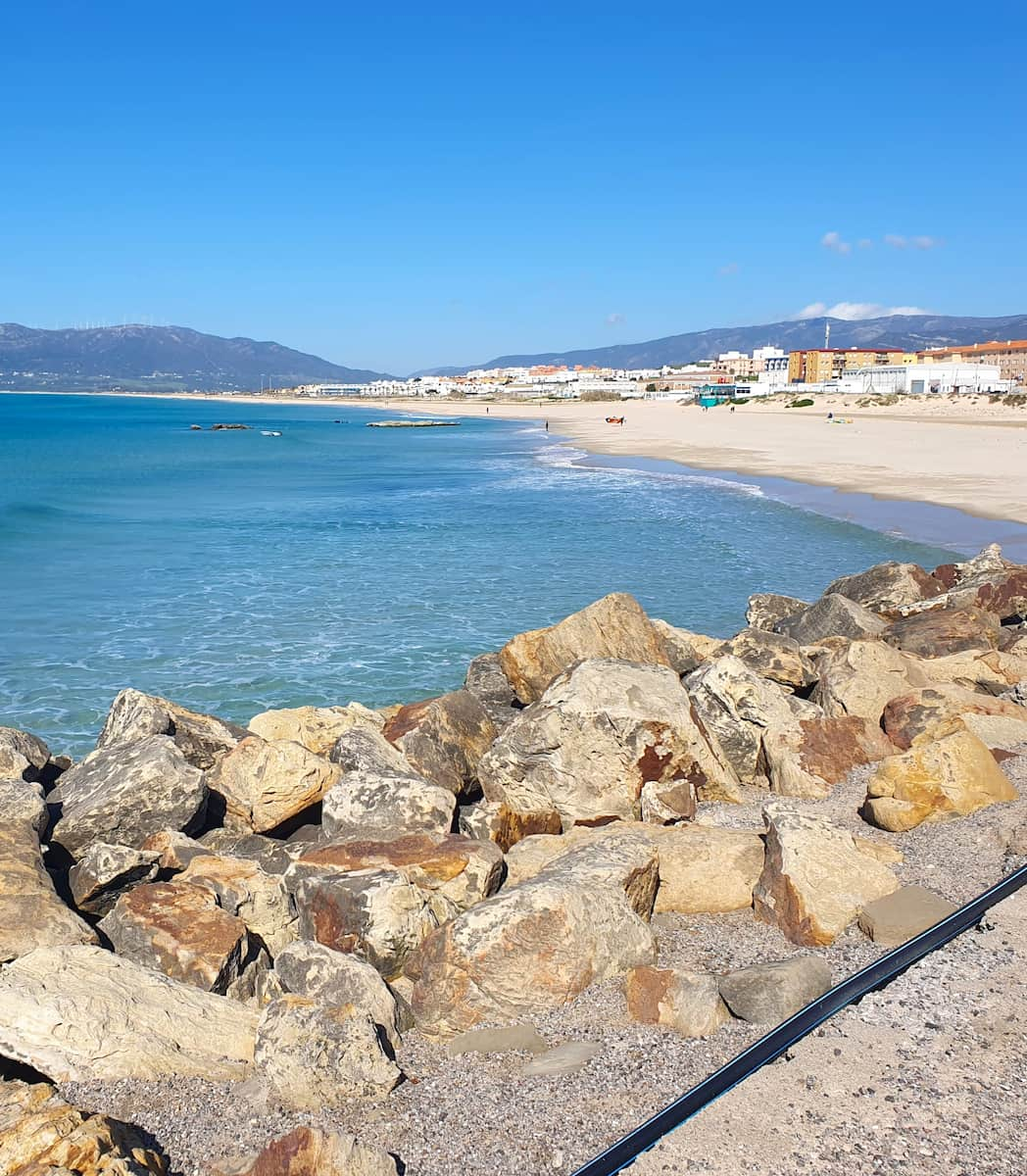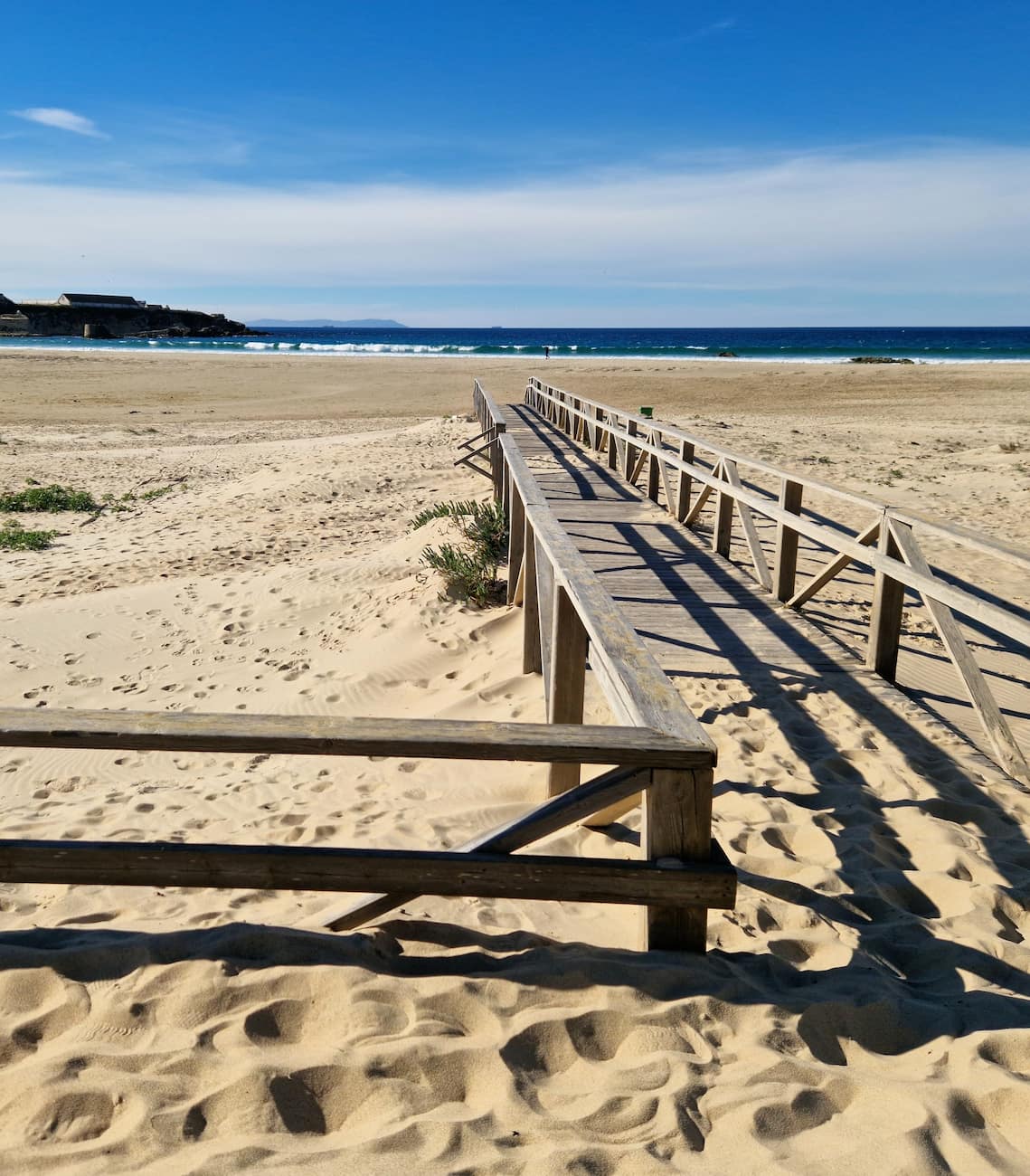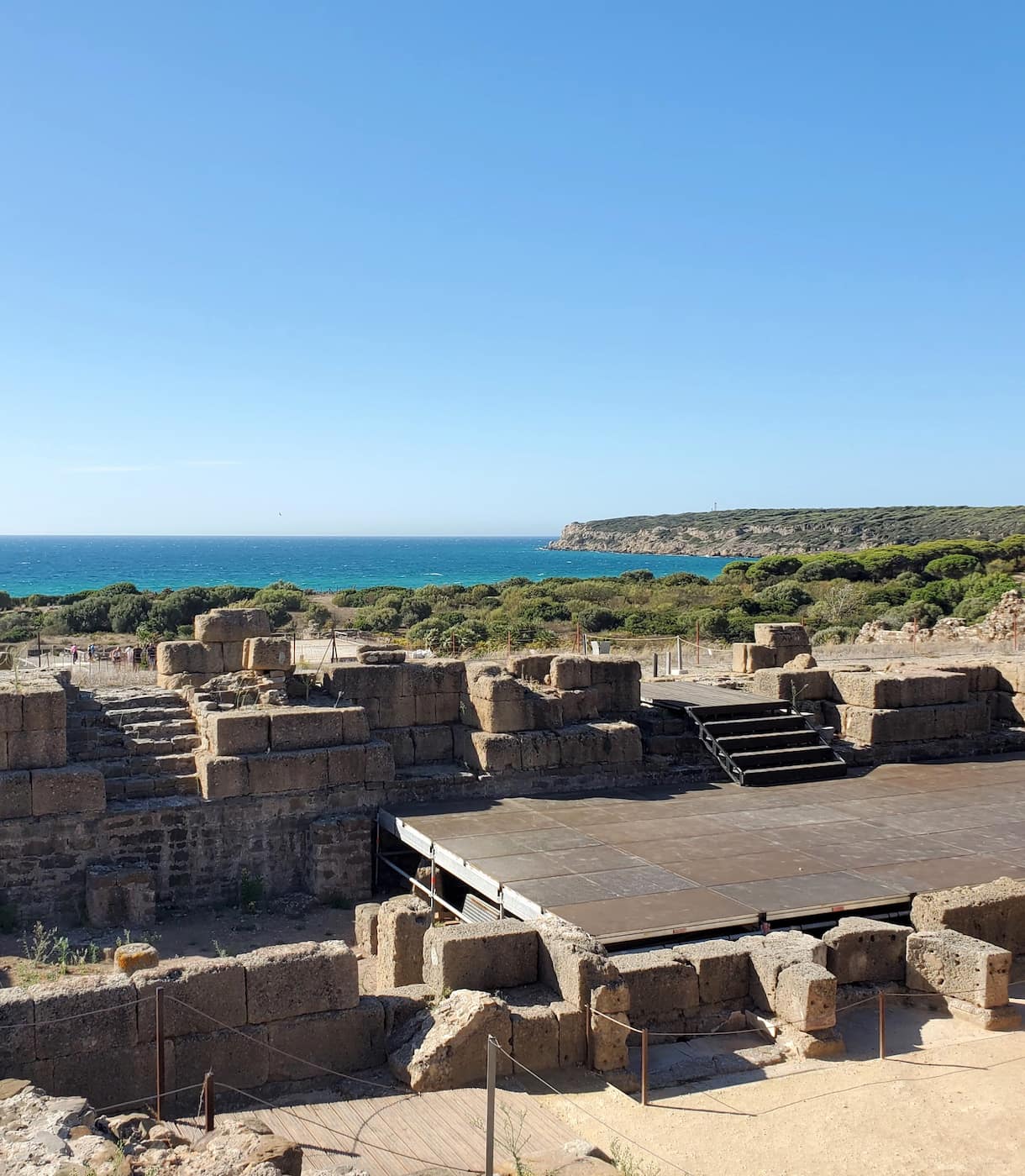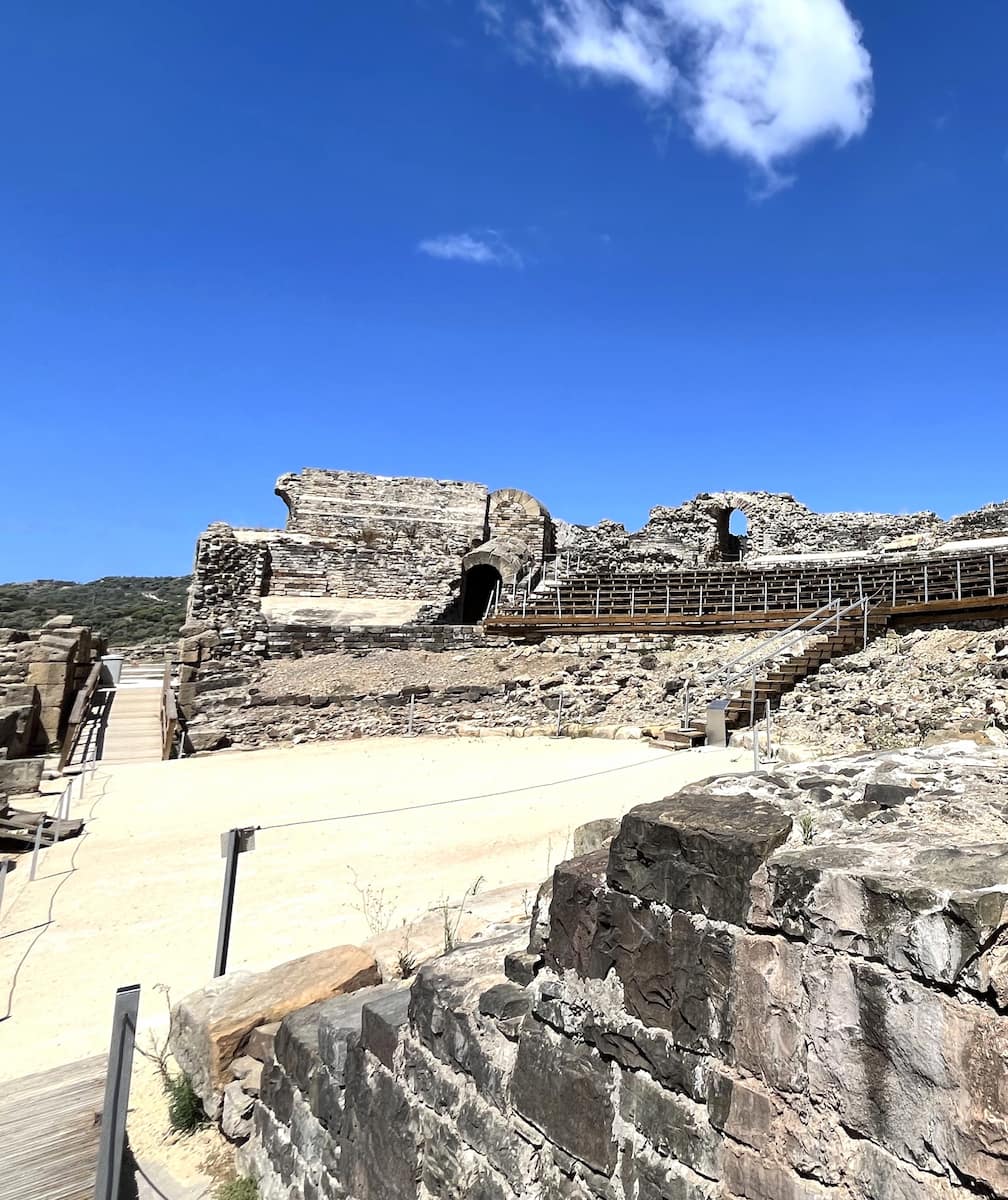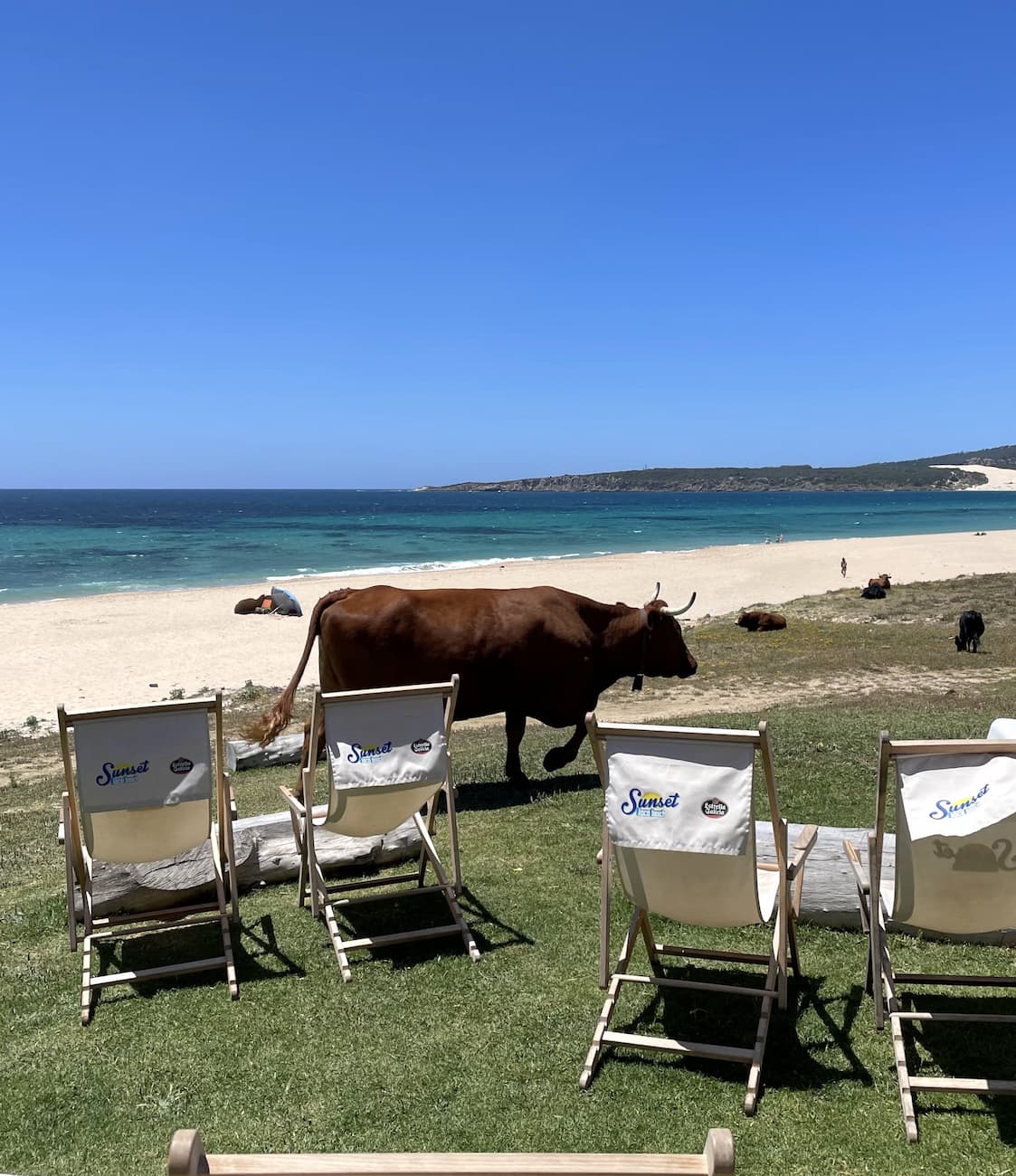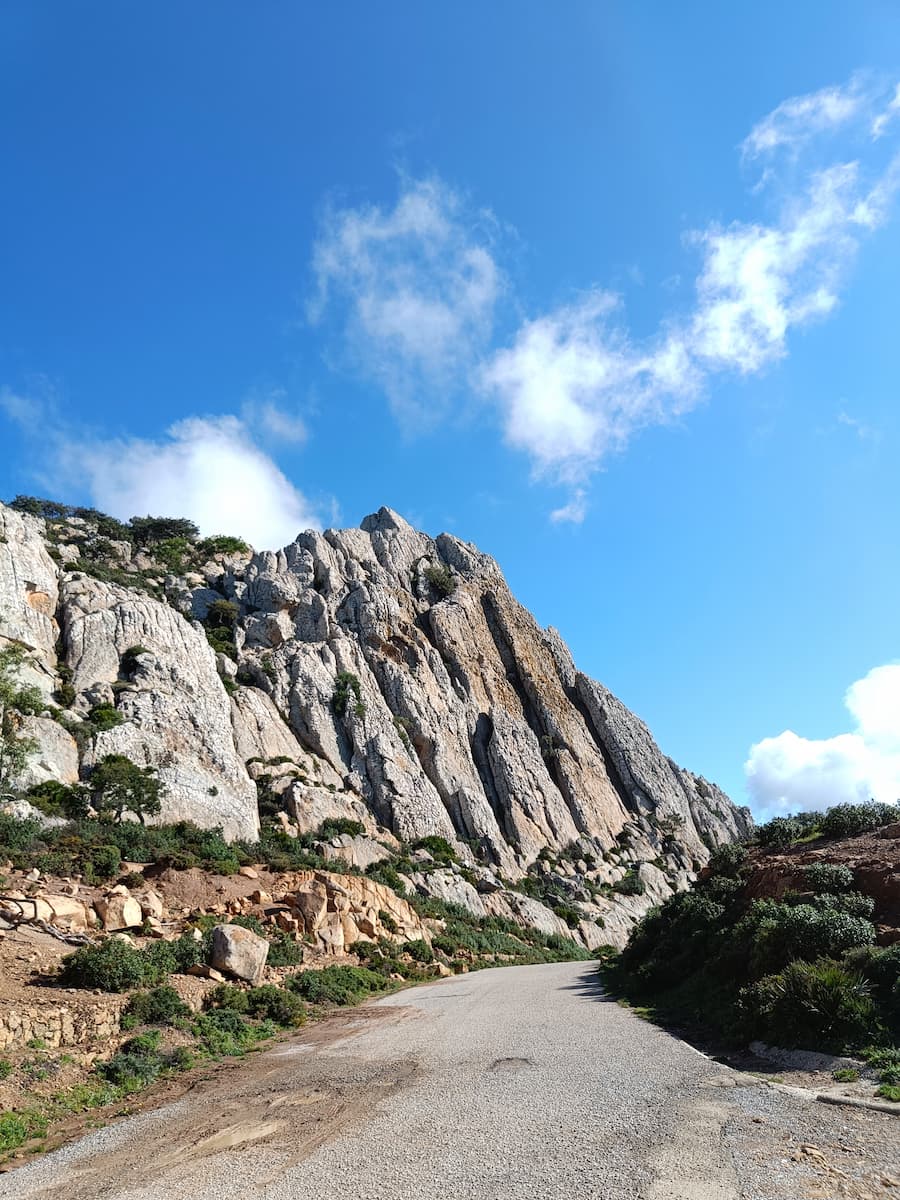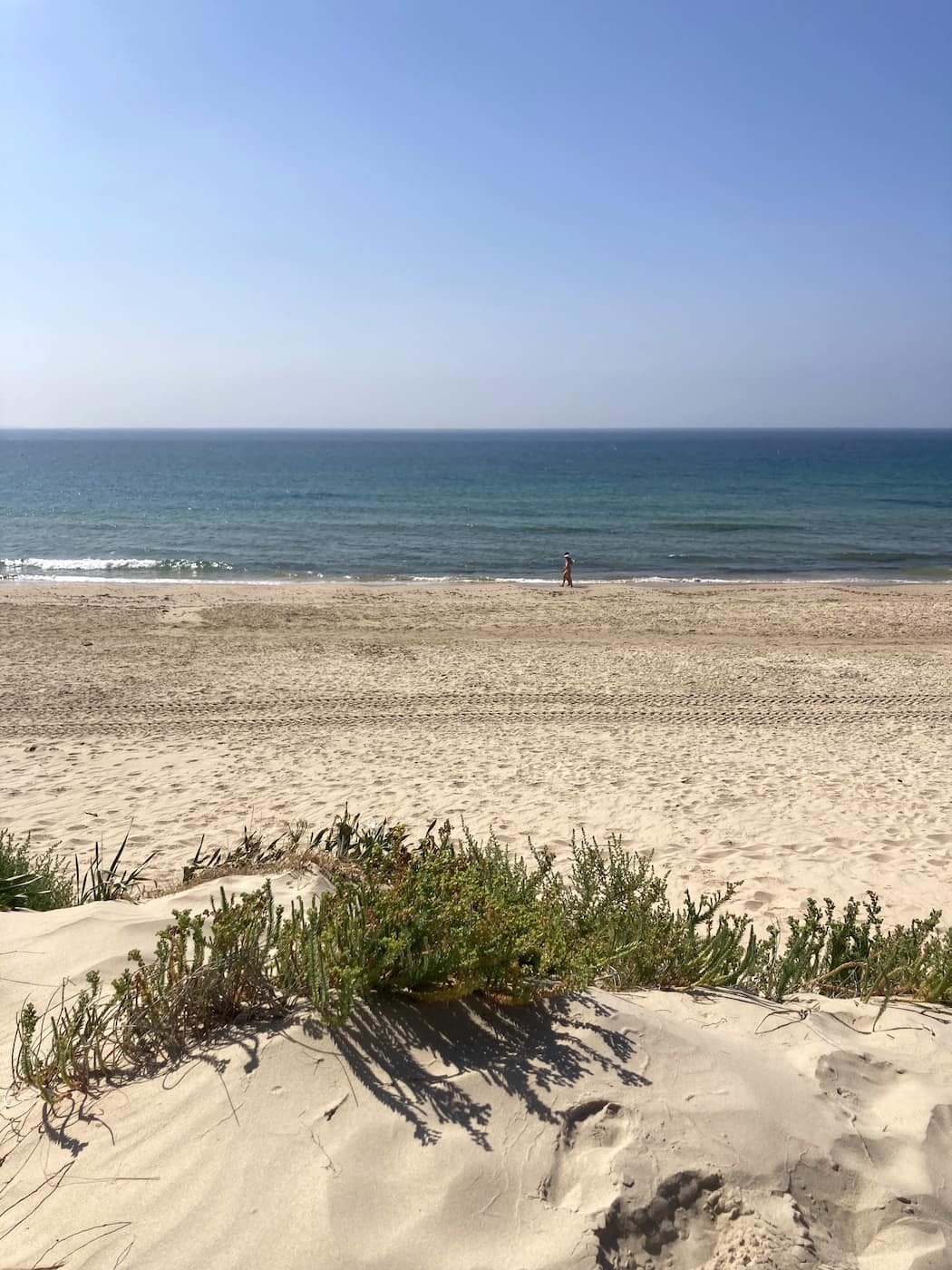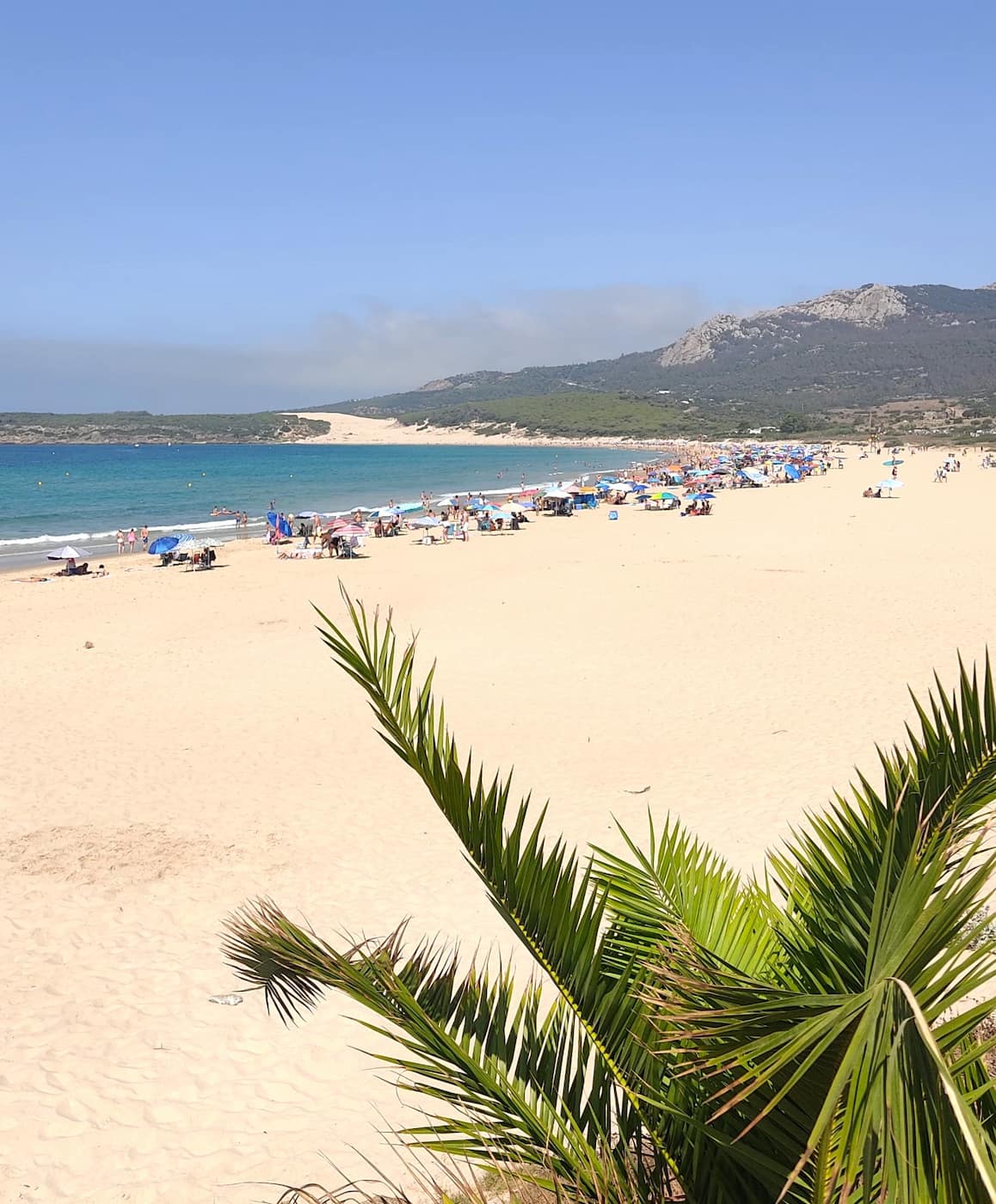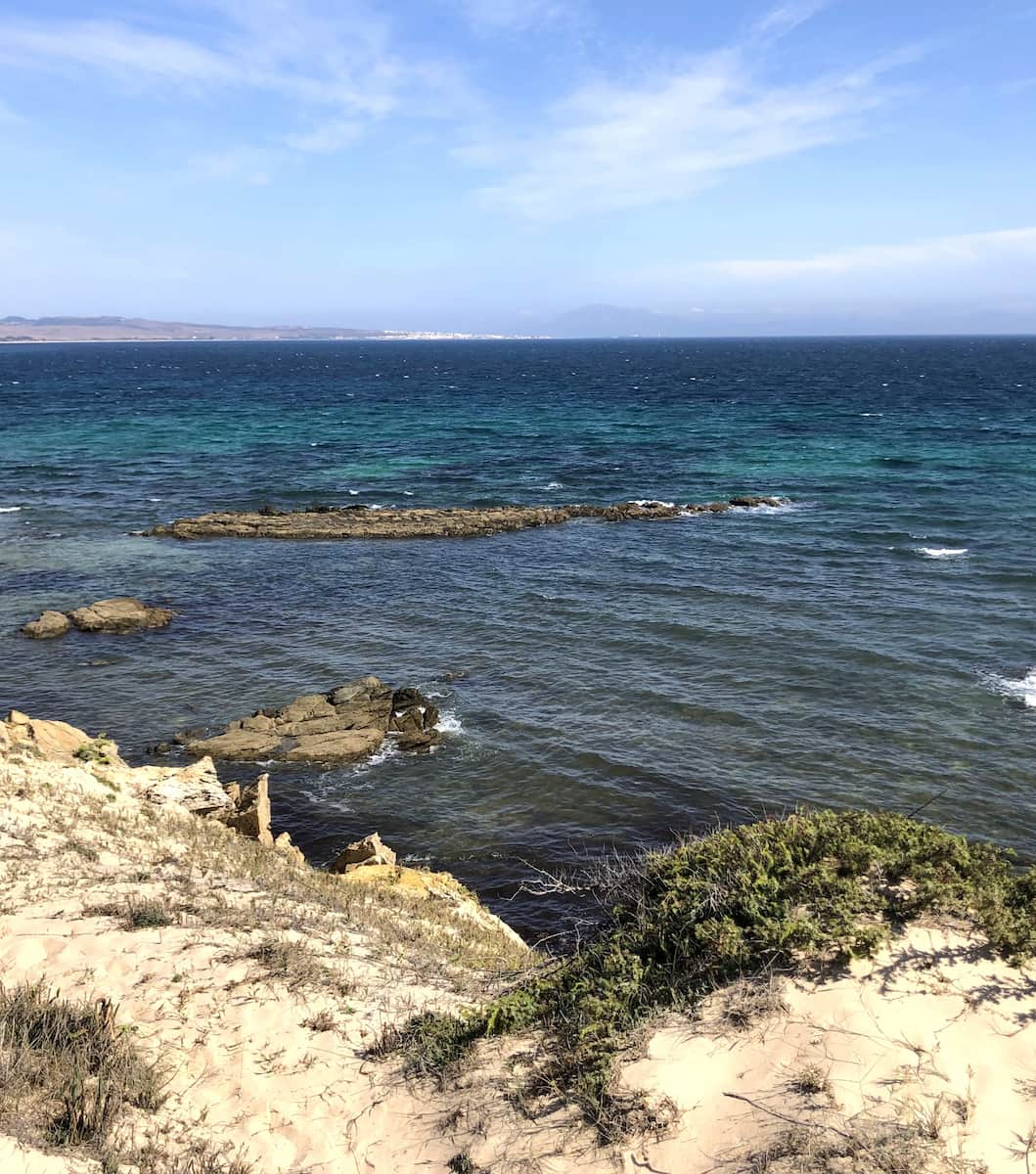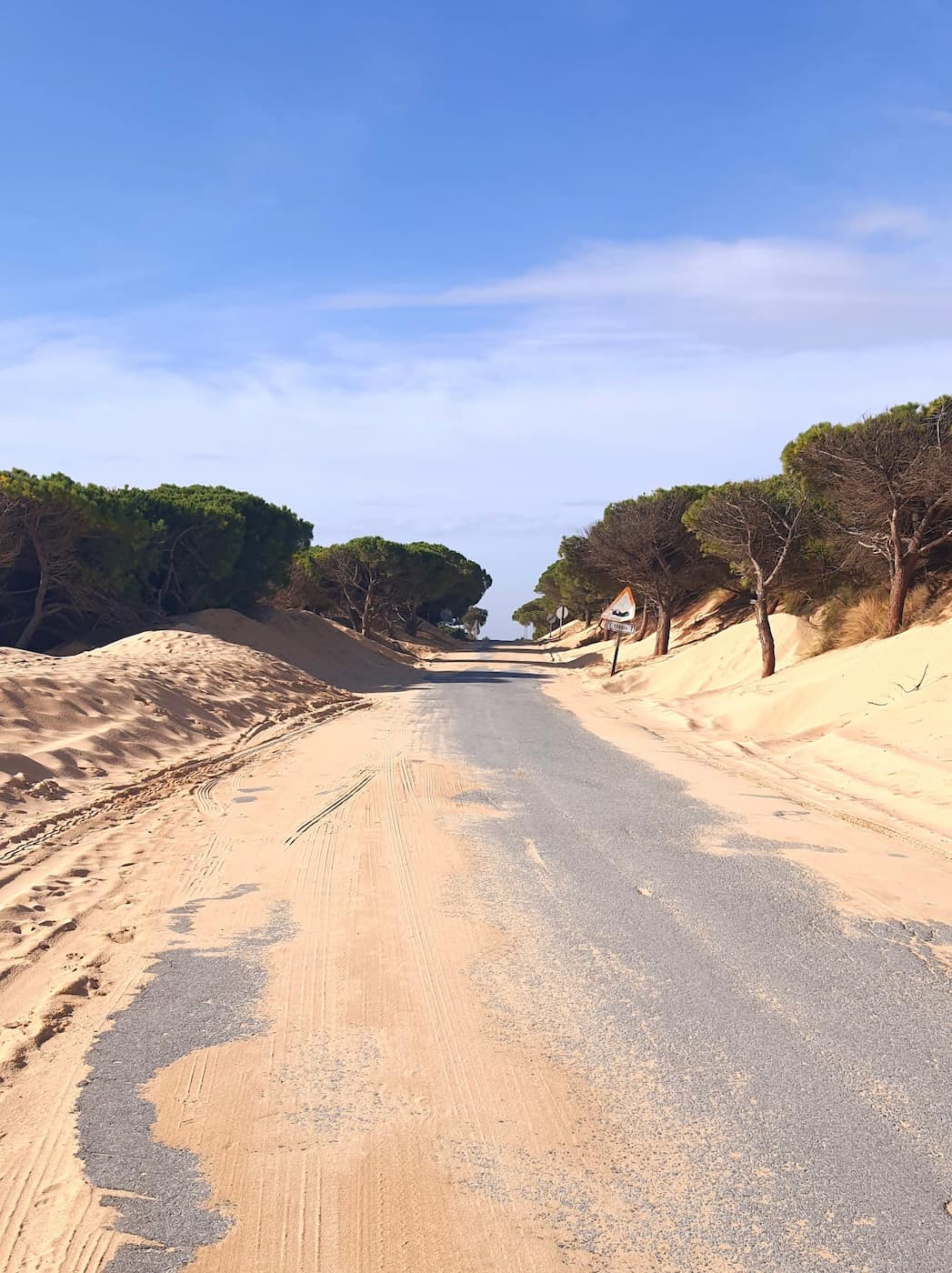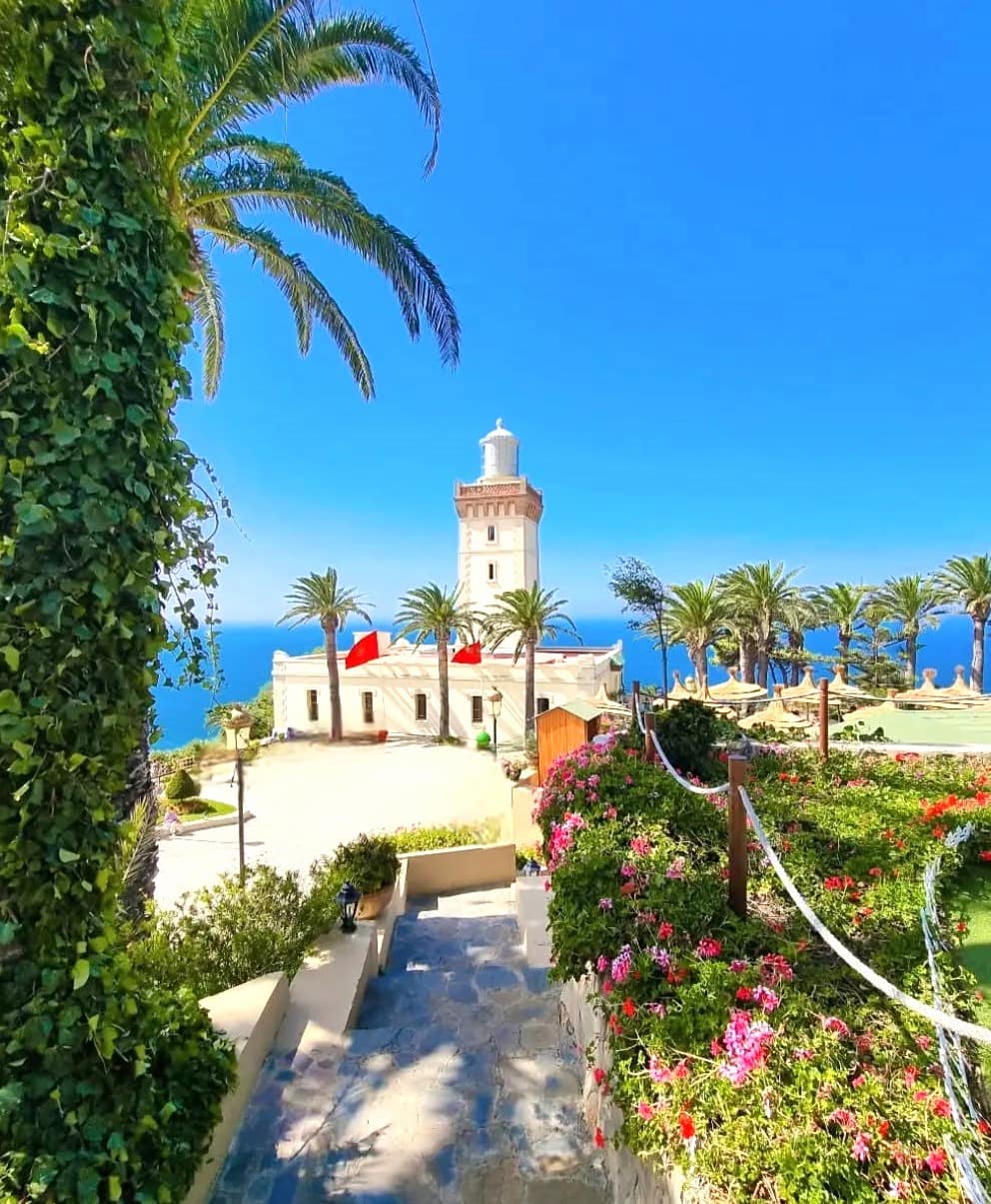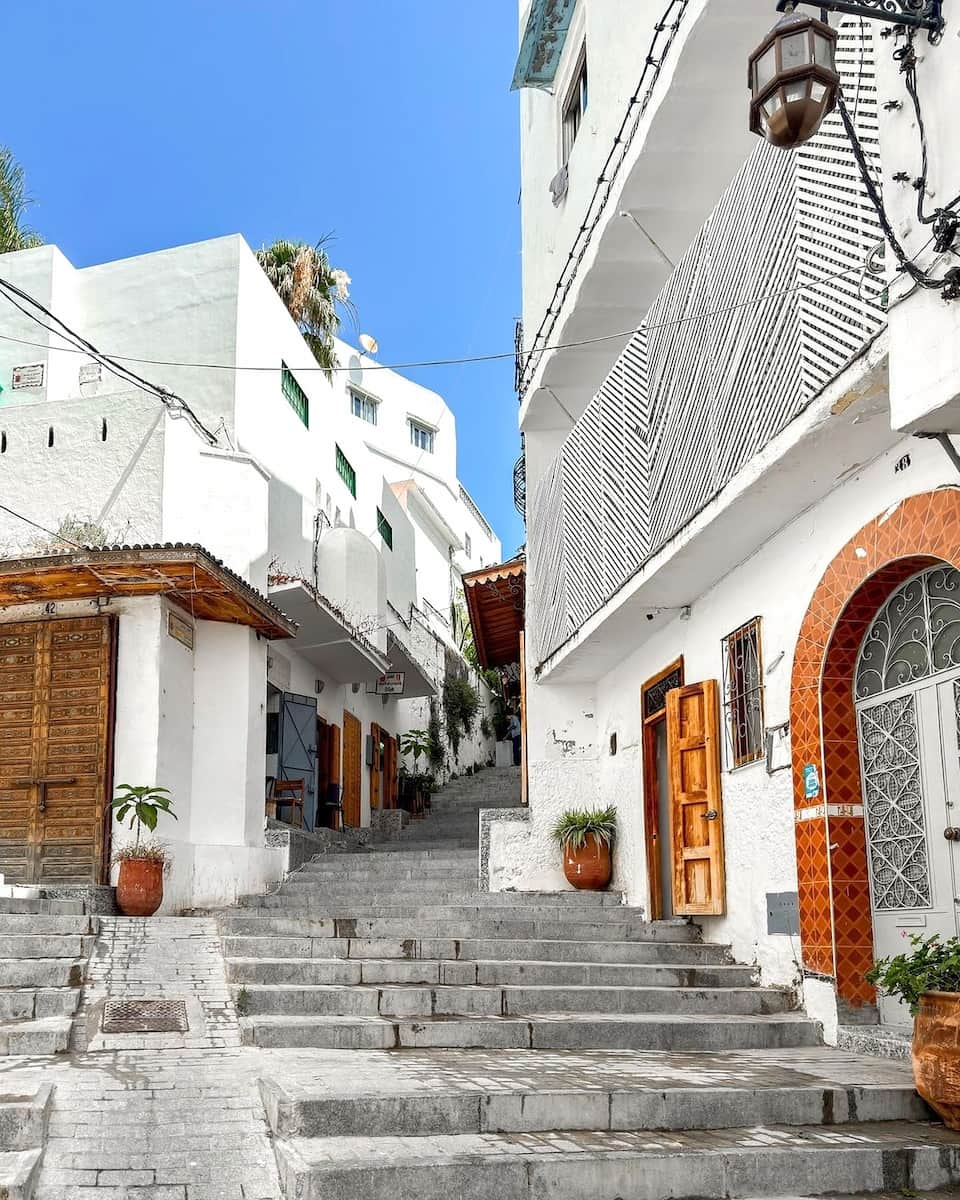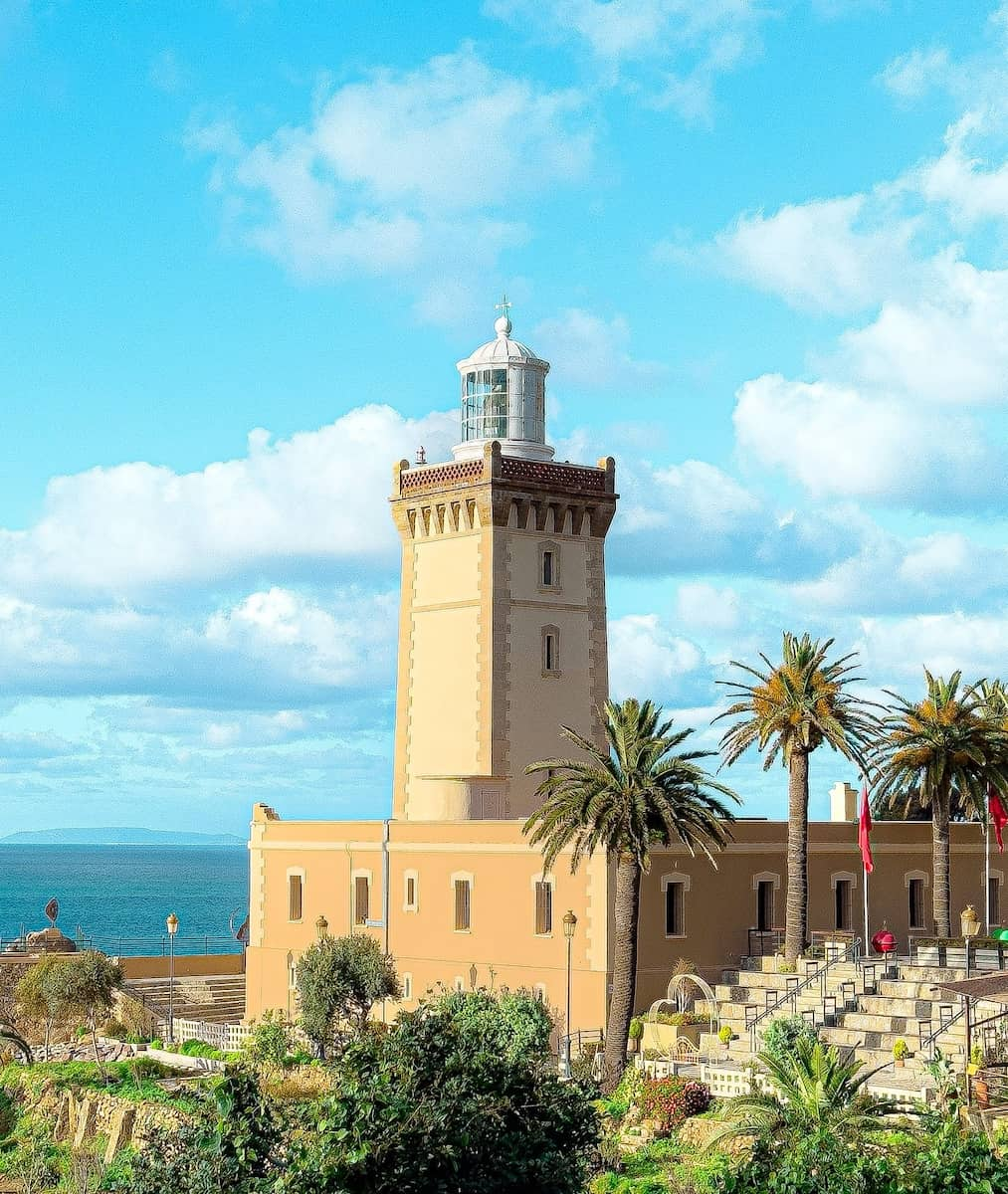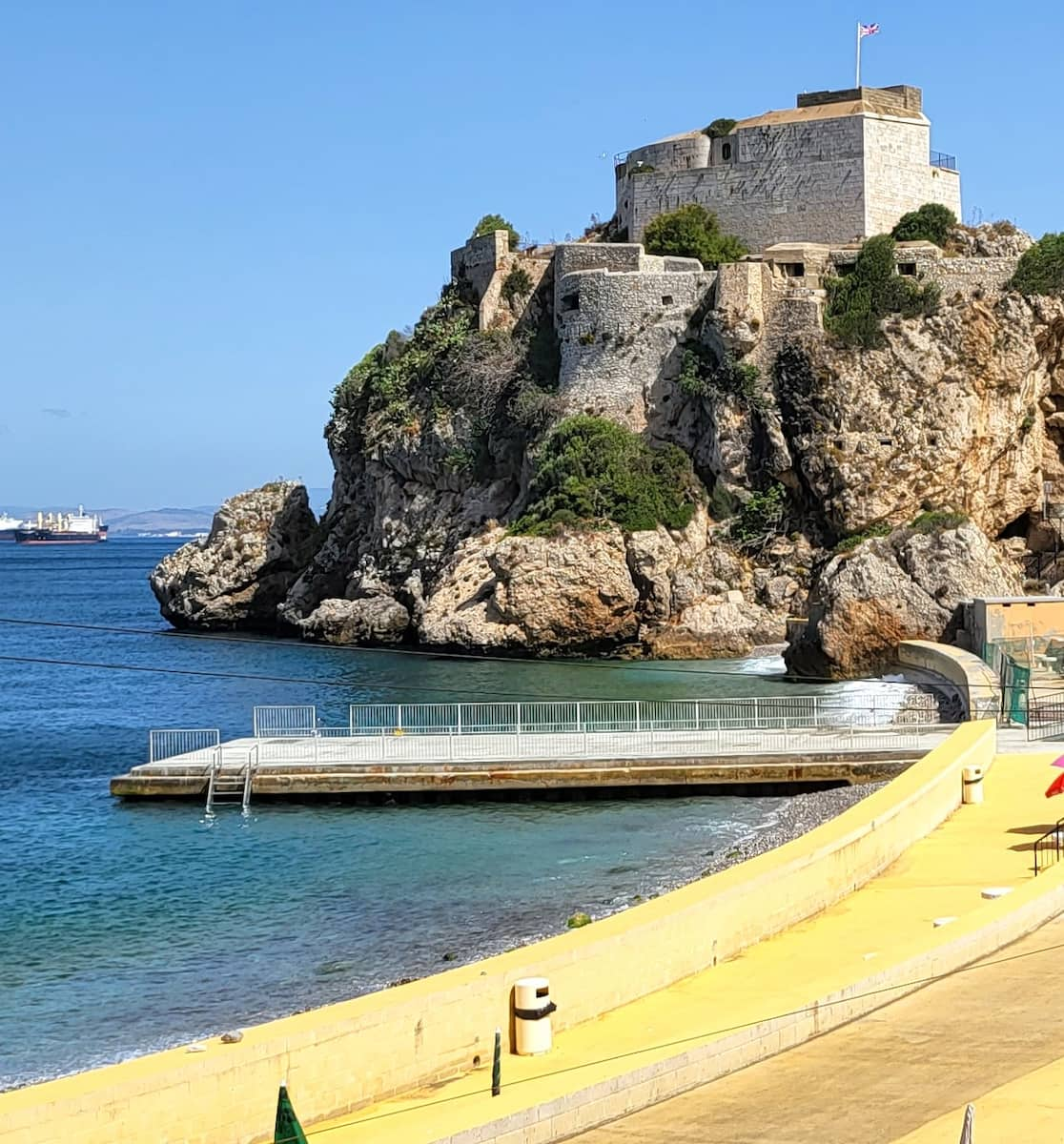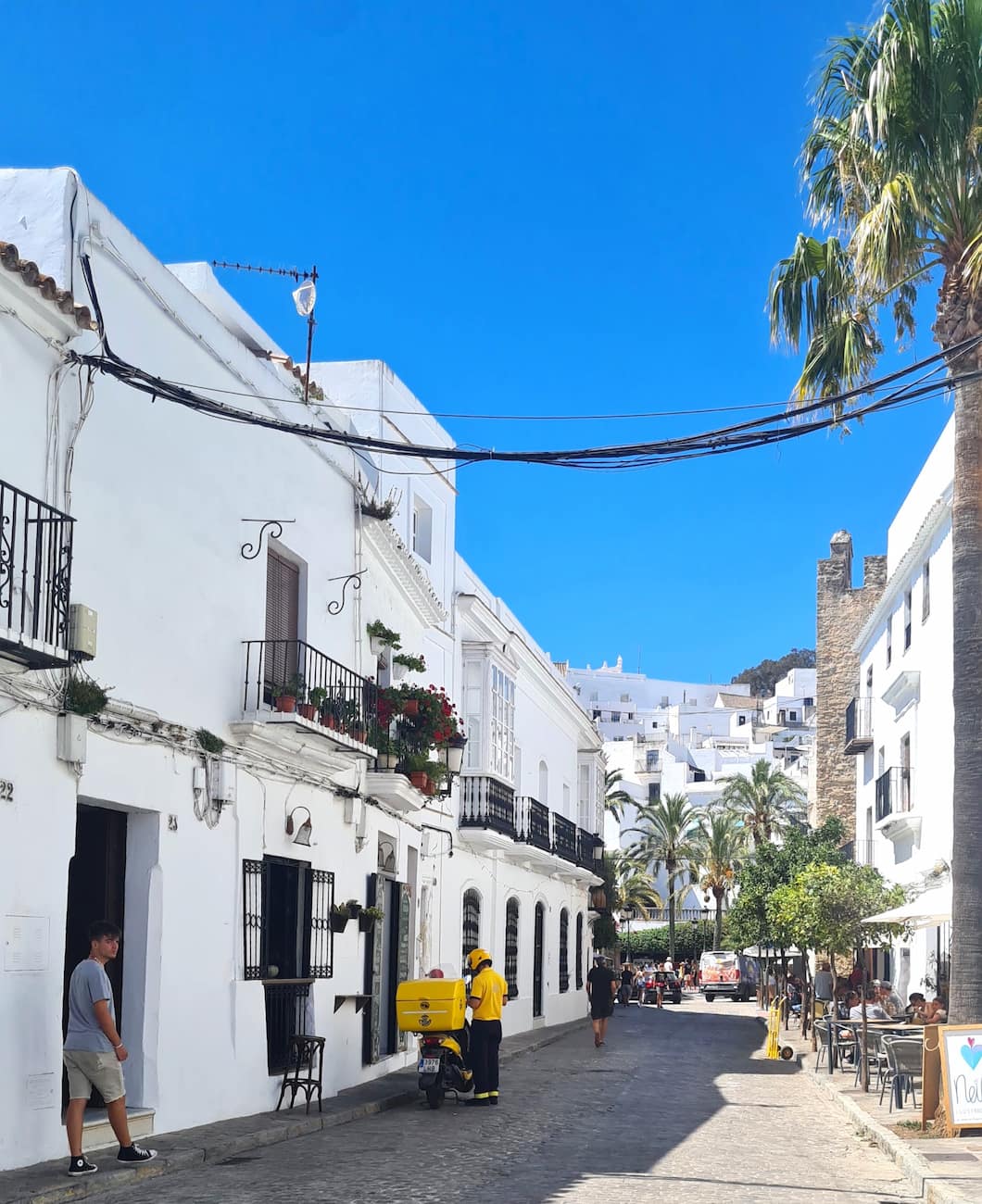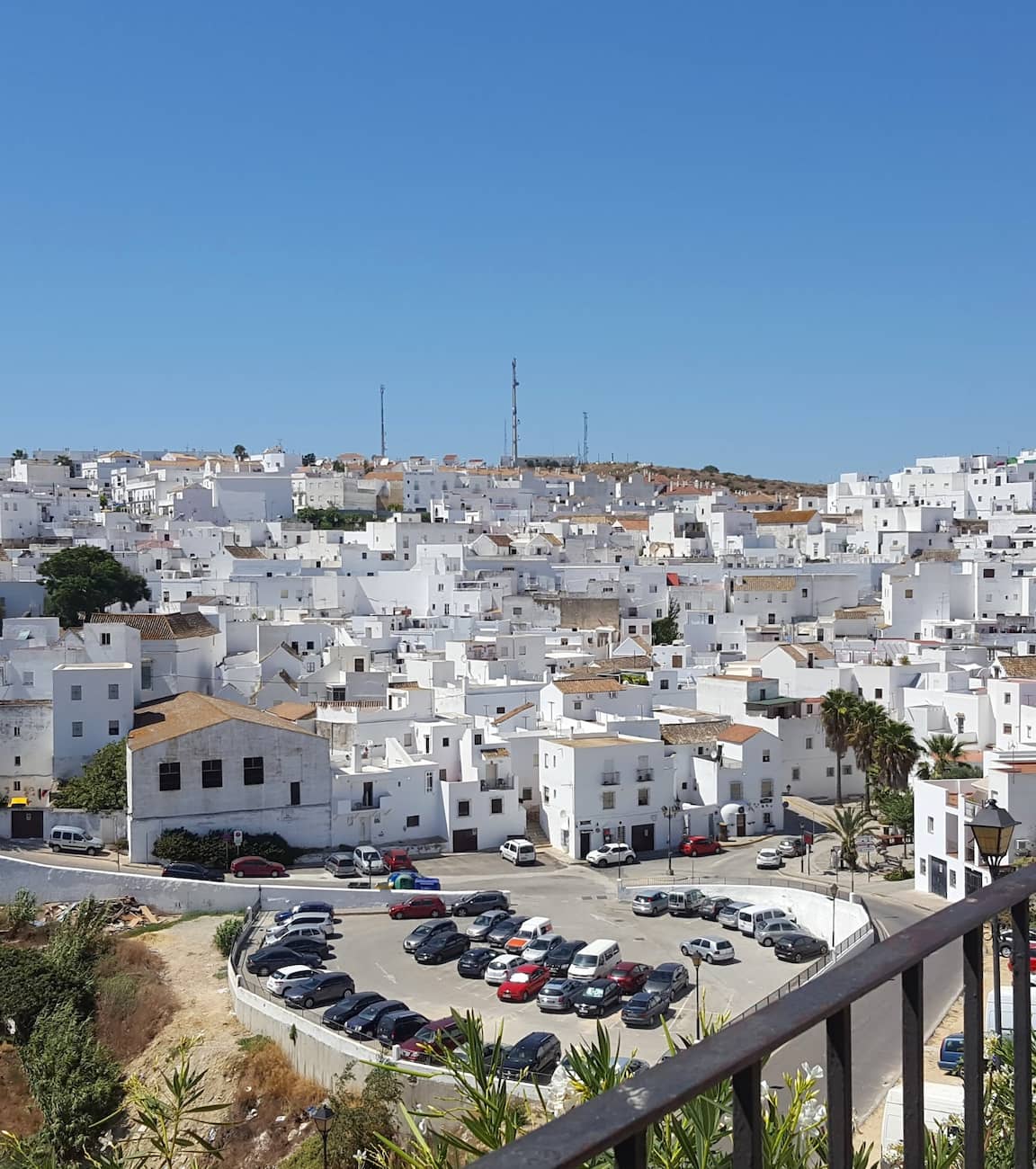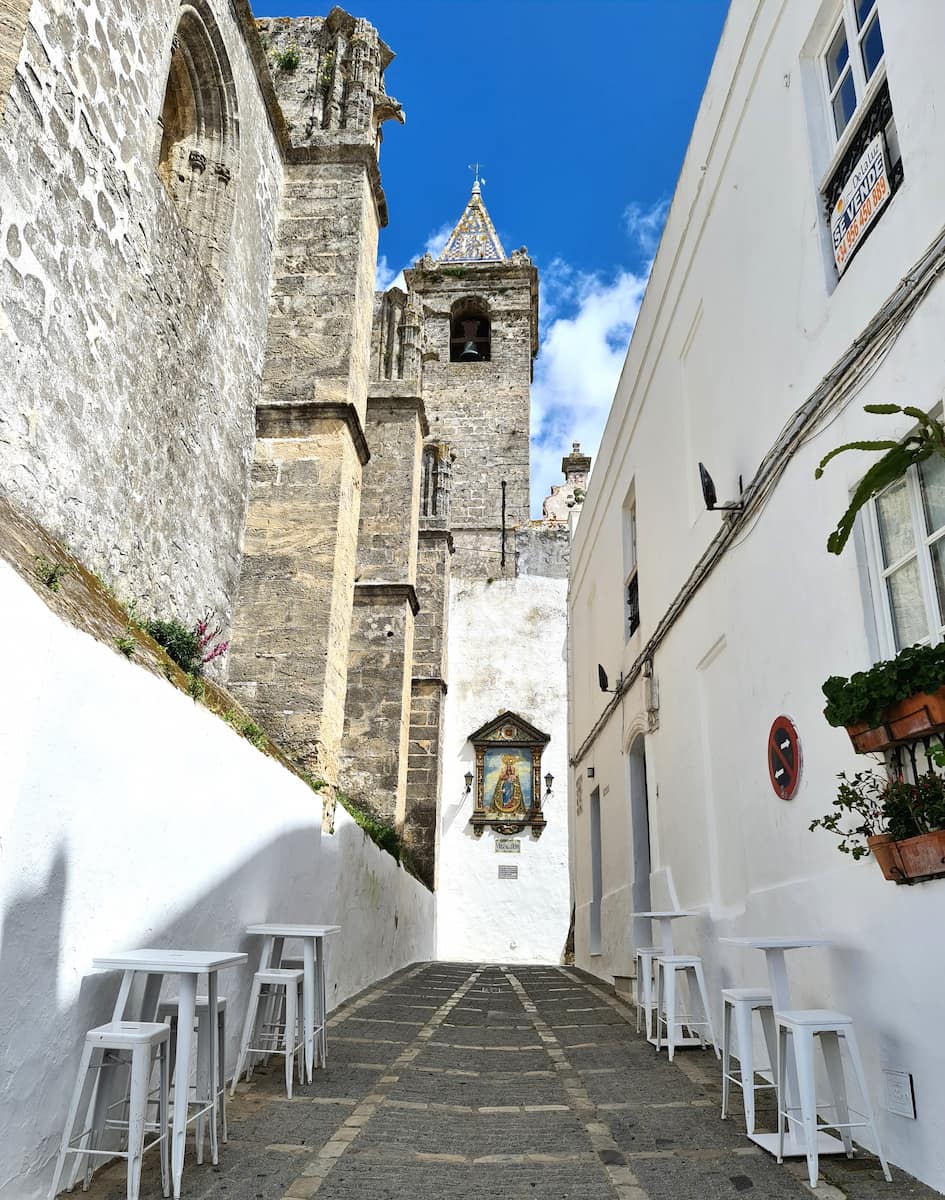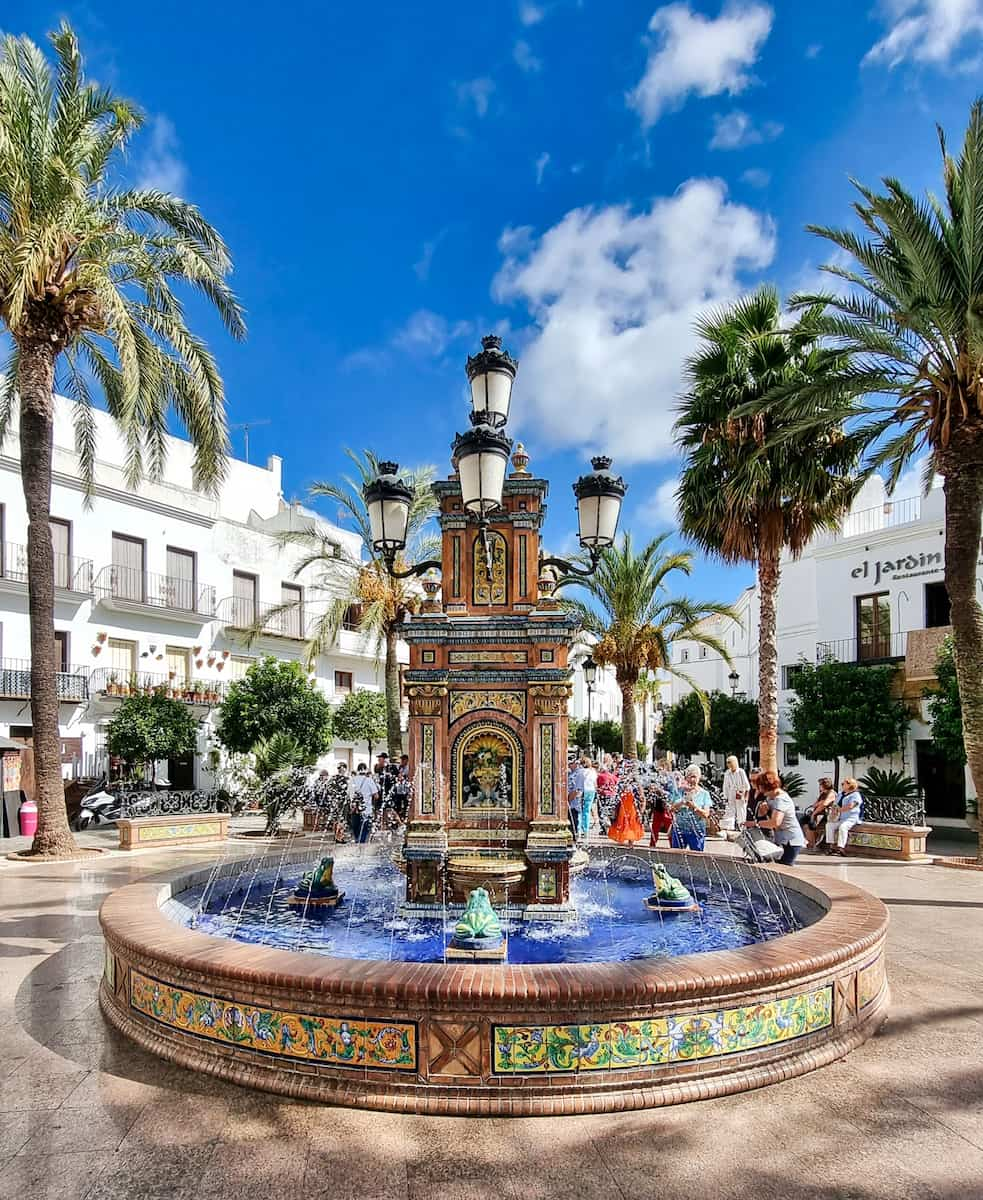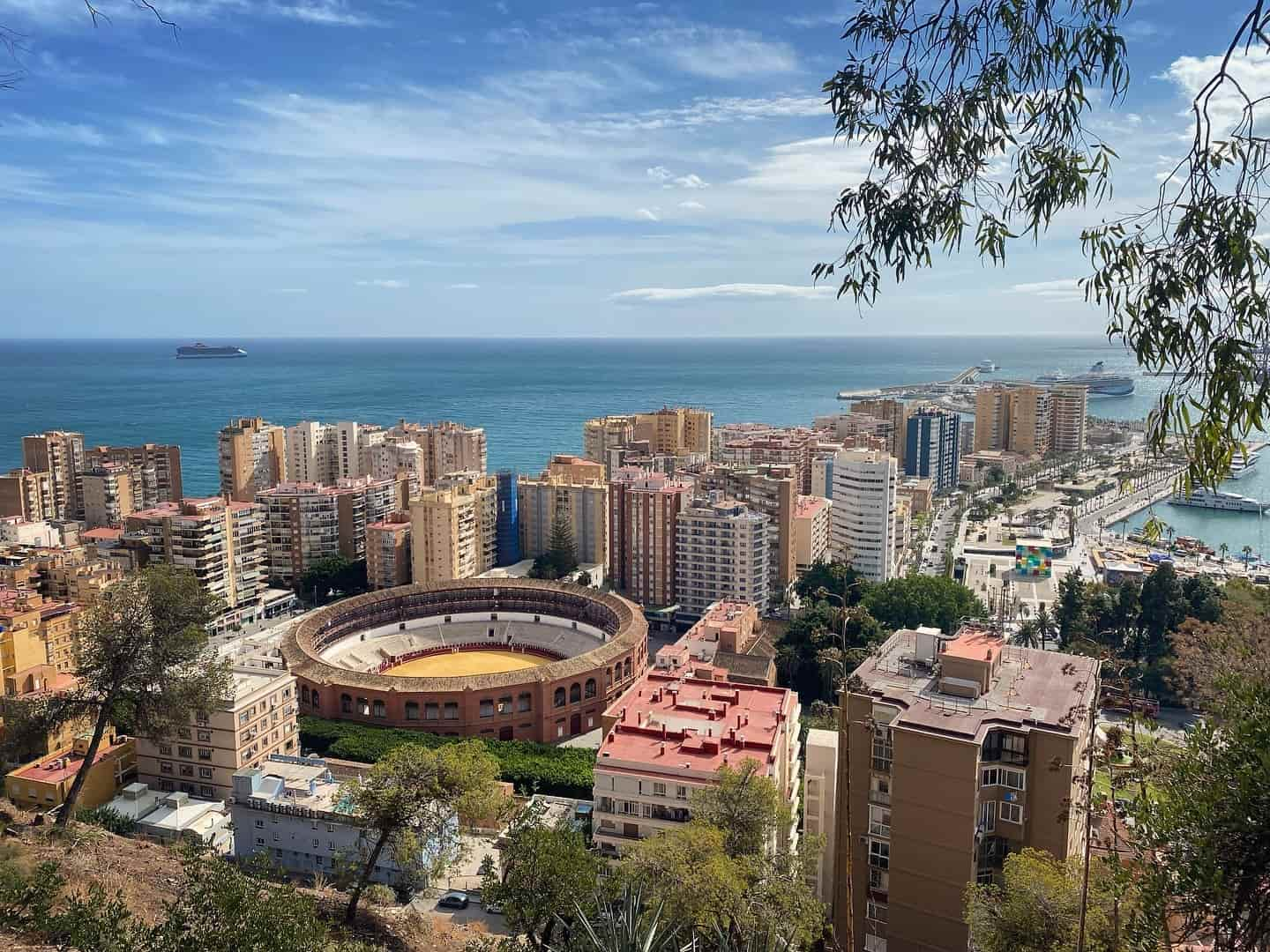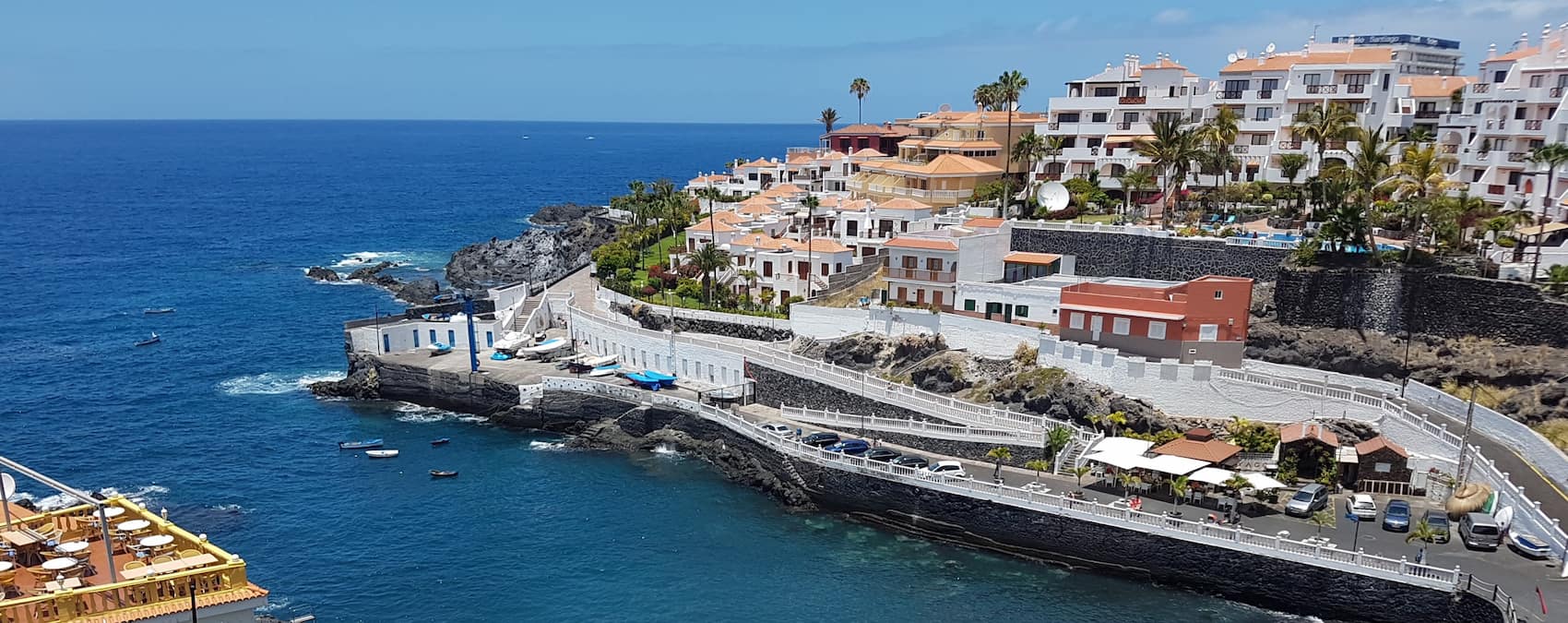Tarifa sits at the very tip of Spain where two seas meet and Africa feels close enough to touch. This small coastal town has become famous worldwide for its incredible winds that bring kitesurfers from every corner of Europe, but there’s so much more to discover beyond the best beaches.
Whether you’re planning a fun day trip or staying longer to explore, this guide will show you exactly what makes Tarifa special. I’ve spent countless hours wandering through its narrow white streets of the old town, watching the sunset from different beaches, and even taking that famous ferry ride to Morocco for lunch.
🏠 Best Hotels in Tarifa
- 💎 Luxury Hotel: Kook Tarifa
- ✨ 5-Star: Event Tarifa by QHotels - Adults Recommended
- 🏨 4-Star: La Residencia Puerto Hotel & Spa
- 🛏 3-Star: Hotel Tarifa Lances
- 💸 Cheap: Room Tarifa
- 🏢 Apartament: Apartamento con Terraza
- 👨👩👧👦 For Families: Cortijo el Pozuelo
- 🏩 For Couples: La Casa de la Favorita
💁 Best Guided Tours
- Guided Snorkeling Activity on the Island of Tarifa from $57 (⭐4.8/5)
- Horseback Riding in Tarifa - 2 Hours from $111 (⭐5.0/5)
- Private Kitesurfing Lessons from $162 (⭐4.9/5)
- Private Kitesurfing Lessons Adapted to Every Level from $218 (⭐4.8/5)
- Tarifa Orca, Whale and Dolphin Watching Boat Experience from €35 (⭐4.7/5)
- Tarifa Sailboat Tour with Snorkelling, Tapas & Drinks from €45 (⭐4.6/5)
Best Things To Do in Tarifa, Spain
1. Playa de Los Lances
Wind Sports Paradise. I’ve spent countless mornings watching kitesurfers launch from Playa de Los Lances, and the energy here is infectious. This 10-kilometer stretch of golden sand faces the Atlantic Ocean and catches the famous Levante wind that makes Tarifa the kitesurfing capital of Europe.
Kite Schools and Lessons. Several professional kite schools operate directly on the beach. I recommend booking a beginner lesson for €60-80 (around $65-85 USD) for a 3-hour session including equipment. Advanced riders can rent gear for €35-45 per day.
Beach Facilities. The northern section near the town offers chiringuitos (beach bars) serving fresh seafood and cold drinks. Parking costs €3-5 per day, but I’ve found free spots about 500 meters inland. The southern areas are wilder with fewer facilities but better wind conditions.
Swimming Conditions. The Atlantic waters here can be rough with strong currents. I always check the colored flag system before entering the water. Red flags are common during windy days when kitesurfers dominate the waves.
| Activity | Price (EUR) | Price (USD) |
|---|---|---|
| Kitesurf Lesson (3h) | €60-80 | $65-85 |
| Equipment Rental | €35-45 | $38-48 |
| Beach Parking | €3-5 | $3-5 |
2. Guzmán el Bueno Castle (Castillo de Guzman el Bueno)
Medieval Fortress. This 10th-century castle dominates Tarifa’s skyline and offers the best panoramic views in town. I climbed the defensive walls and could see both the Mediterranean Sea and Atlantic Ocean meeting at the Strait of Gibraltar, with Morocco’s coastline clearly visible on clear days.
Historical Significance. The castle tells the story of Alonso Pérez de Guzmán, who chose honor over his son’s life during the 1294 siege. Inside, I explored the interpretation center showcasing Moorish and Christian history through interactive displays and artifacts from archaeological excavations.
Practical Visit Information. Entry costs €2 for adults (around $2.15 USD) and includes access to all towers and ramparts. The castle opens Tuesday-Sunday from 10:00-18:00, closed Mondays except holidays. I suggest visiting mid-morning to avoid tour groups.
Photography Spots. The Torre de Guzmán offers 360-degree views perfect for capturing Tarifa’s unique position where two seas meet. The ancient stone walls and Moorish architectural details provide excellent foreground elements for wide-angle shots.
Nearby Attractions. After exploring the castle, I walked through the cobbled streets in Tarifa old town, stopping at Plaza de Santa Maria and the nearby Puerta de Jerez, one of the original city gates in the medieval defensive wall.
| Visitor Info | Details |
|---|---|
| Adult Entry | €2 ($2.15) |
| Opening Hours | 10:00-18:00 (Tue-Sun) |
| Best Time | Mid-morning |
| Duration | 45-60 minutes |
3. Old Town and La Calzada
Historic Streets. Tarifa’s old town is one of the most picturesque old quarters in southern Spain, enclosed by medieval walls dating back to the 13th century. I wandered through narrow cobbled streets lined with whitewashed buildings, discovering hidden plazas and traditional tapas bars that locals frequent.
La Calzada Experience. This bustling pedestrian street becomes the heart of Tarifa’s nightlife after beach days. I found excellent restaurants in Tarifa serving fresh bluefin tuna and local specialties. The street connects the old town of Tarifa to the port area seamlessly.
Religious Heritage. The Iglesia de San Mateo stands as one of Tarifa’s most important historical monuments. This Gothic church showcases the town’s Christian heritage and offers a peaceful retreat from the coastal winds that define this seaside town.
Shopping and Dining. Bars in Tarifa along La Calzada offer everything from traditional Andalusian tapas to modern fusion cuisine. I particularly enjoyed the mix of surf culture and Spanish tradition that makes Tarifa unique among coastal towns.
⭐ Best Activities
- Private Photo Session with a Local Photographer in Tarifa: Capture your Tarifa memories with a professional photo session in the best spots around town and the coast.
4. Kitesurf, Windsurf, or Surf Lesson
Wind Sports Capital. Tarifa is also one of the most popular destinations in Europe for wind sports, thanks to the Levante and Poniente winds that blow across the Strait of Gibraltar. I watched professionals and beginners sharing the same waters where the Atlantic Ocean and the Mediterranean Sea meet.
Professional Schools. Several certified schools operate along the coast, offering lessons from €60-80 for beginners. The instructors I met were multilingual and experienced in teaching all skill levels. Equipment rental costs around €35-45 per day for those with experience.
Best Conditions. The area north of Tarifa, particularly around Valdevaqueros, provides ideal conditions for learning. I discovered that morning sessions often have calmer winds perfect for beginners, while afternoons bring stronger conditions for advanced riders.
Safety First. Good travel insurance is essential when participating in water sports. Most schools provide safety equipment and briefings, but the Atlantic waters can be unpredictable, especially during peak wind seasons.
| Service | Price (EUR) | Price (USD) |
|---|---|---|
| Beginner Lesson (3h) | €60-80 | $65-85 |
| Equipment Rental | €35-45 | $38-48 |
| Advanced Course (5 days) | €280-350 | $300-375 |
⭐ Best Tours
- Tarifa E-Foiling Lesson with Instructor: Try the latest water sport craze with an e-foiling lesson—glide above the waves and enjoy a unique view of Tarifa’s coastline.
- Tarifa Kitesurfing Experience: Learn to kitesurf or improve your technique with a certified instructor on one of the world’s top windsurfing beaches.
5. Turmares Dolphin and Whale Watching
Marine Wildlife. Whale watching in Tarifa offers some of Europe’s best opportunities to see pilot whales, sperm whales, and various dolphin species. I joined a tour that departed from the port of Tarifa and crossed into the Strait of Gibraltar’s deep waters.
Tour Options. Several operators offer trips ranging from €25-35 for adults, with departures multiple times daily during peak season. The best time to visit Tarifa for whale watching is between April and October when marine activity peaks.
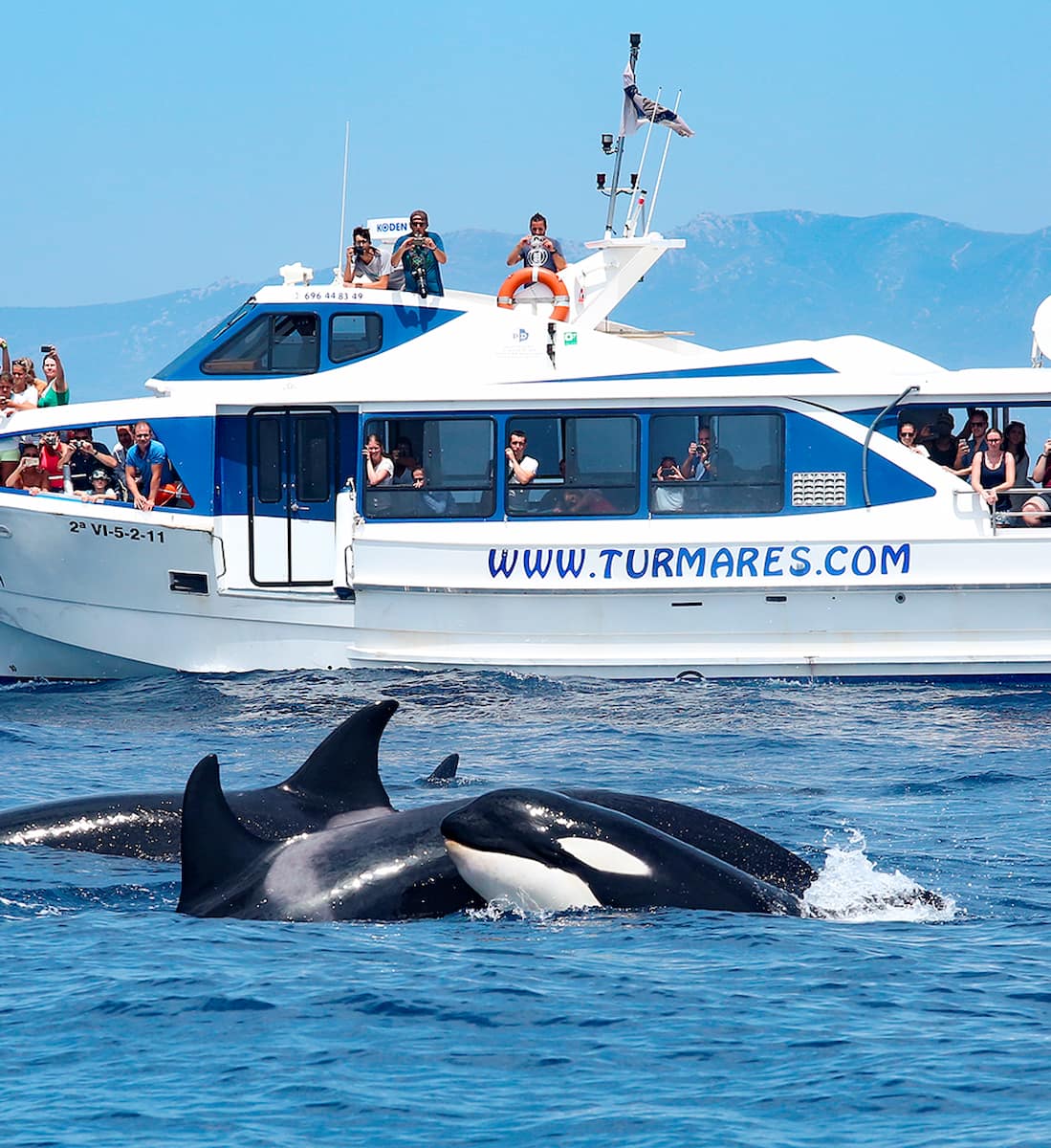
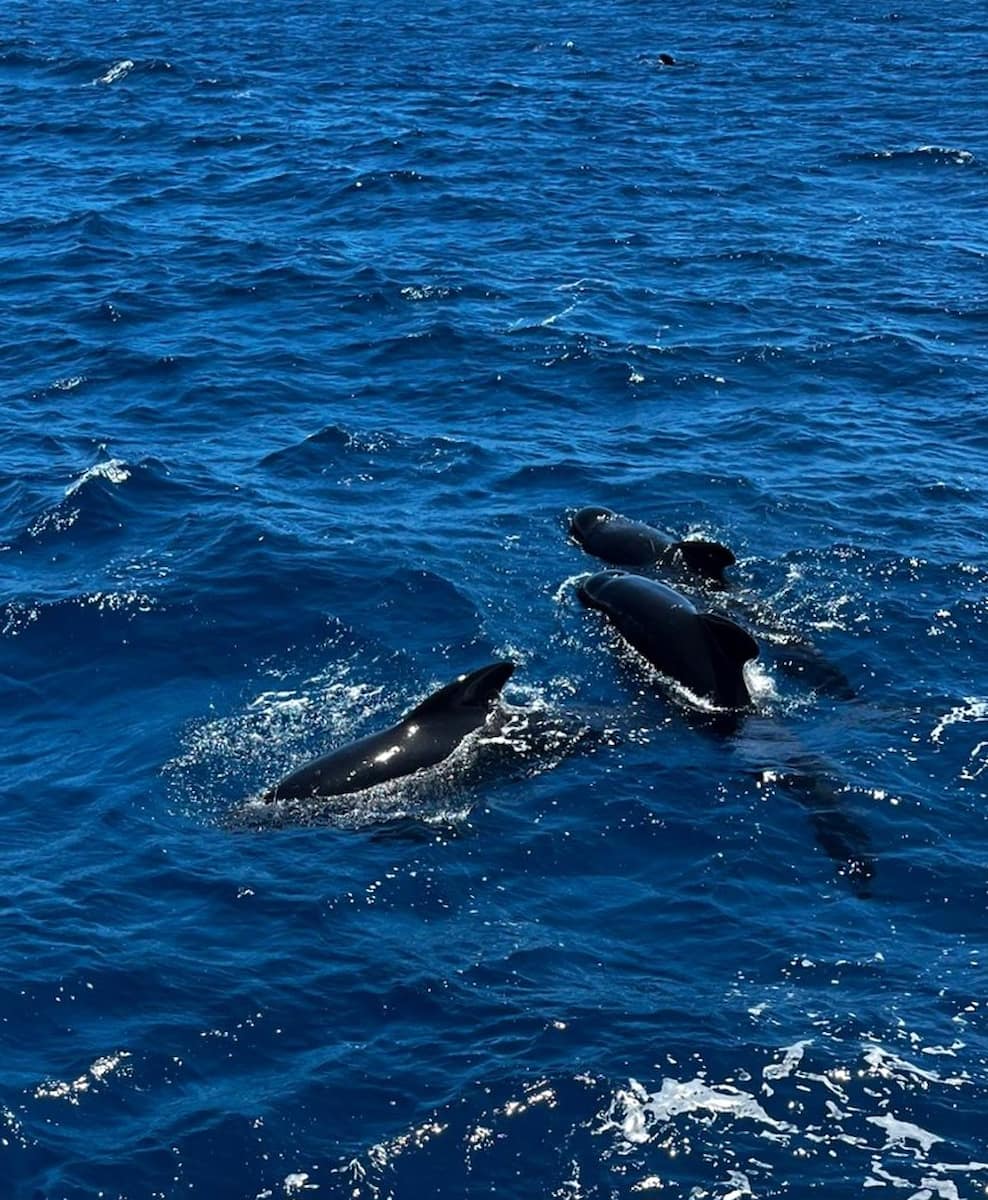
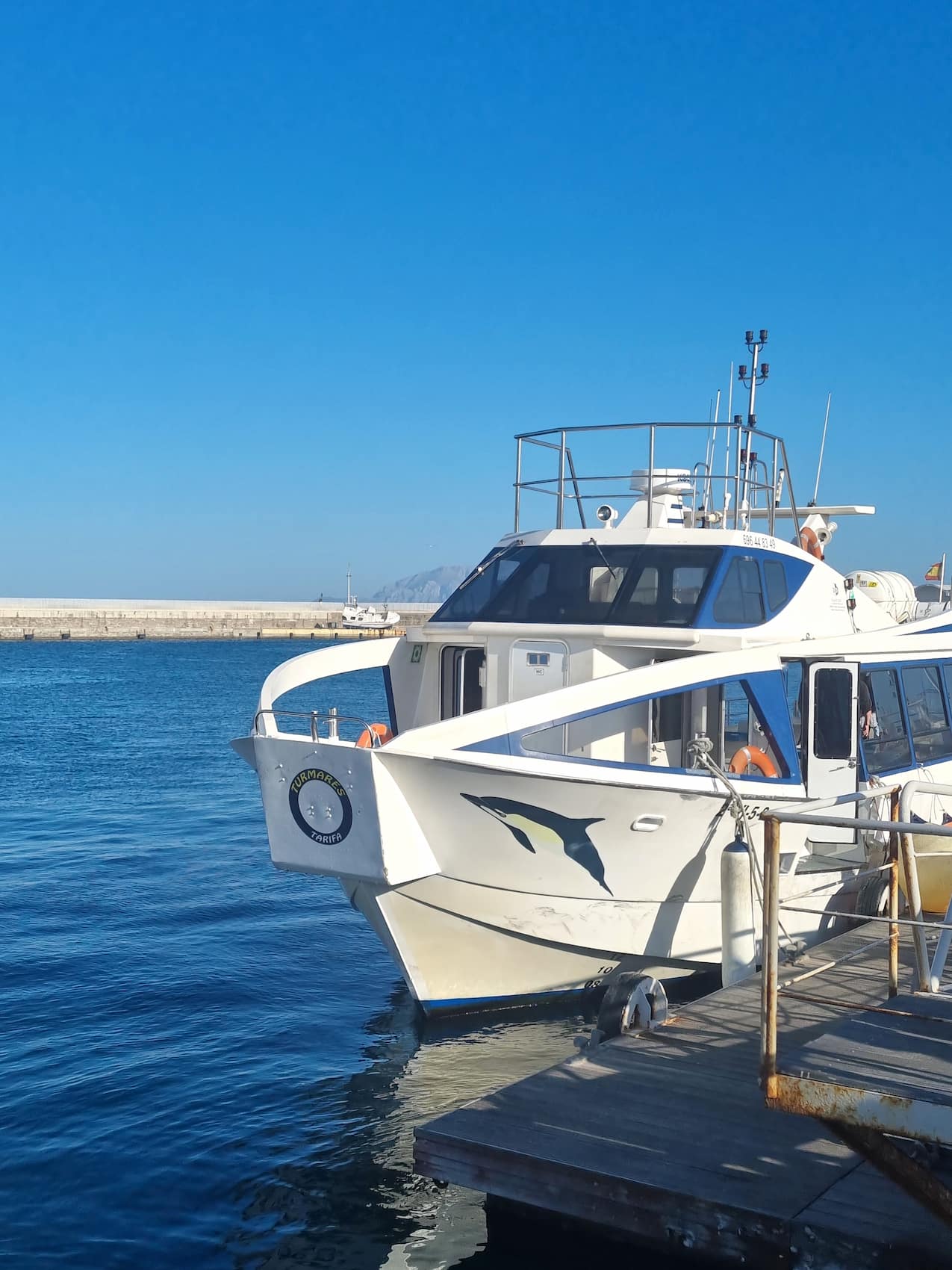
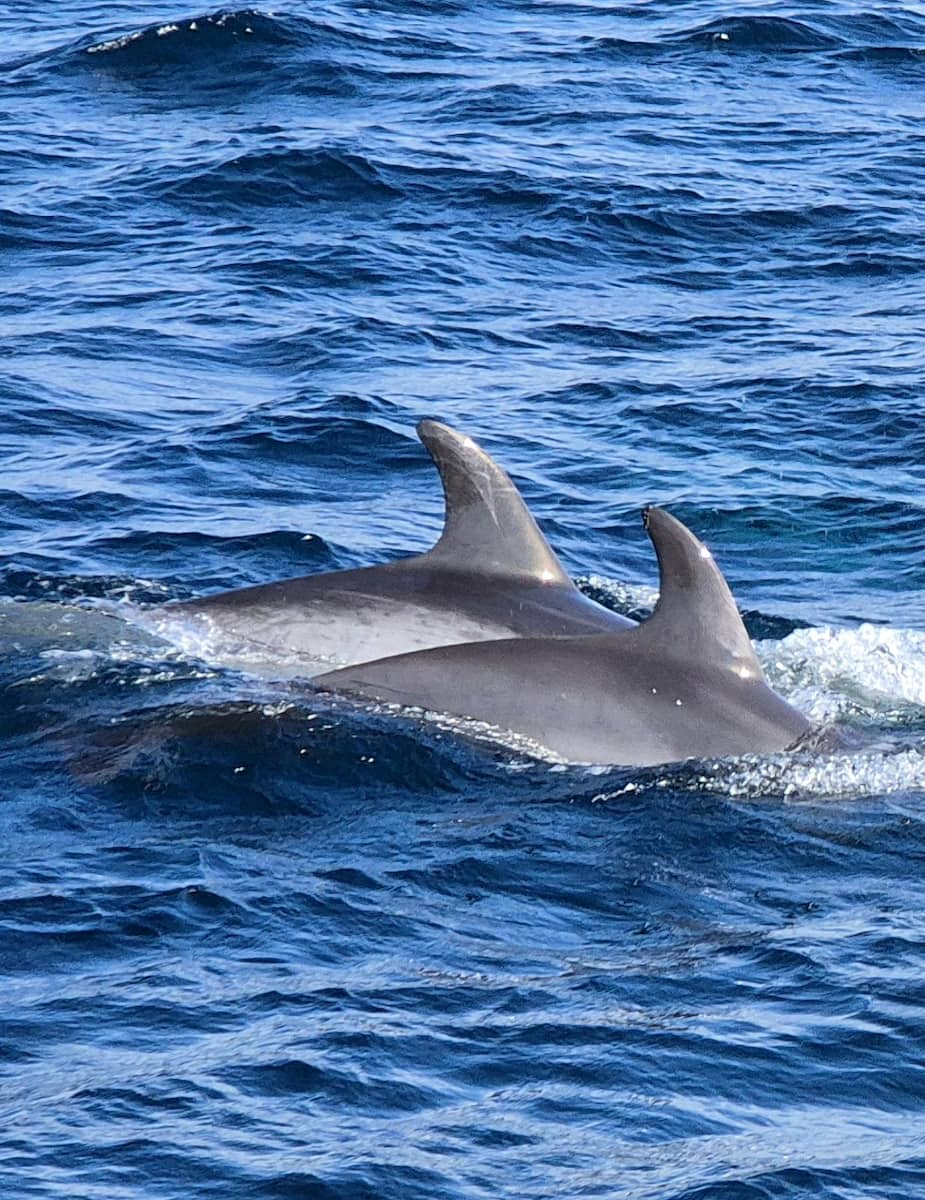
What to Expect. My 2.5-hour trip included sightings of striped dolphins and pilot whales. The guides provided educational commentary about migration patterns and conservation efforts. Success rates are around 95% for dolphin sightings and 70% for whales.
Practical Tips. I recommend booking morning departures when seas are typically calmer. Bring sunscreen, a hat, and motion sickness medication if you’re prone to seasickness. Most tours include light refreshments and professional photography services.
⭐ Best Tours
- Tarifa Orca, Whale and Dolphin Watching Boat Experience: Join a boat tour in the Strait of Gibraltar for a chance to spot orcas, dolphins, and whales—one of Tarifa’s most famous wildlife experiences.
- Tarifa Whale & Dolphin Watching in the Strait of Gibraltar: Set sail from Tarifa for a guided tour to see dolphins and whales in their natural habitat, guided by marine experts.
6. Valdevaqueros Beach
Kitesurfing Capital. Playa de Valdevaqueros stretches 10km of golden sand and ranks as one of Europe’s premier kitesurfing destinations. I watched hundreds of colorful kites dancing in the afternoon winds while the Levante and Poniente create perfect conditions for water sports enthusiasts.
Beach Bar Culture. The Hurricane Hotel area buzzes with surf culture and beach bars offering fresh seafood and cocktails. I discovered chiringuitos like Tumbao and Valdevaqueros Beach Bar where the bohemian atmosphere rivals Bali’s beach scene, complete with live music and international crowds.
Punta Paloma Dune. The massive sand dune at the beach’s end provides spectacular panoramic views after a challenging climb. From the top, I could see the entire coastline, pine forests, and the Strait of Gibraltar stretching toward Africa’s mountains.
Wind Sports and Swimming. The beach has designated zones for kitesurfing, windsurfing, and swimming. Even beginners can safely learn water sports here, with several professional schools offering lessons. The sheltered bay protects novice surfers while providing thrilling conditions for experts.
| Beach Services | Price (EUR) | Price (USD) |
|---|---|---|
| Parking | €3-5 | $3-5 |
| Kitesurf Lesson | €60-80 | $65-85 |
| Equipment Rental | €35-45 | $38-48 |
| Beach Bar Meal | €15-25 | $16-27 |
⭐ Best Activities
- Kitesurf Supervision in Tarifa: Already know the basics? Get expert kitesurf supervision on Tarifa’s famous windy beaches. Improve your skills and enjoy the thrill of the Atlantic Ocean and the Mediterranean Sea meeting.
7. Mirador del Estrecho
Spectacular Panorama. Located 300 meters above sea level and 6km from Tarifa town via the N-340 road, Mirador provides breathtaking views across the Strait of Gibraltar. I could clearly see the Spanish city of Ceuta, Jebel Musa mountain, and the Moroccan port of Tanger-Med on clear days.
Strategic Location. This viewpoint sits within the Natural Park boundaries, offering uninterrupted vistas of both the rugged Cadiz coast and African shores. The distance between Tarifa and the North African coast measures only 30 kilometers, making Morocco appear remarkably close from this elevated position.


Bird Migration Hotspot. The mirador serves as an exceptional bird watching location during spring and autumn migrations. I witnessed thousands of raptors, storks, and other species crossing between continents – 60% of Europe’s raptor population passes through this corridor annually.
Photography and Planning. This location provides some of the most dramatic landscape photography opportunities in the province of Cadiz. I recommend allowing 1-2 hours for the visit, combining it with hiking trails in the surrounding natural park for a complete day trip experience.
| Viewpoint Details | Information |
|---|---|
| Elevation | 300 meters above sea level |
| Distance from Tarifa | 6km via N-340 |
| Entry Fee | Free |
| Best Viewing Times | Clear weather days |
8. Castillo de Santa Catalina
Modern Military Architecture. Built in 1931 in Renaissance style, this observation tower overlooks both the Mediterranean Sea and Atlantic Ocean from Santa Catalina Hill. Despite its castle appearance, it was designed as a semaphore station for maritime communications, though the optical telegraph was never actually installed.
Strategic Location. The castle provides panoramic views of Playa Chica, the causeway to Isla de las Palomas, and Playa de los Lances. I climbed to the observation tower and could see the entire coastline stretching toward Gibraltar, making it one of our favorite photography spots in Tarifa.
Historical Layers. The hill originally housed a 16th-century hermitage dedicated to Santa Catalina de Siena, later converted to a gunpowder store in 1771. During the War of Independence, British forces demolished the hermitage and built artillery fortifications, including bunkers still visible today.
Current Status. The castle is currently closed to public access after restoration work was halted in 2006 due to legal issues. However, the exterior views and surrounding bunker network remain accessible for exploration, offering insights into Tarifa’s military history.
9. Bird Watching on the Migration Route
Europe’s Bird Bottleneck. Tarifa is located at the narrowest point between Europe and Africa, creating a natural funnel for over 200 bird species during migration. I witnessed massive flocks of raptors, storks, and smaller birds gathering before crossing the 14-kilometer strait to Morocco.
Peak Migration Periods. The best time for bird watching is March-April for spring migration and August-October for autumn passage. During peak days, I counted thousands of honey buzzards, black kites, and white storks circling above the coast, waiting for favorable wind conditions.
Top Viewing Locations. Mirador del Estrecho offers the most spectacular raptor watching, while Isla de las Palomas provides excellent seabird observation. The Ornithological Observatory of Cazalla, run by Fundación Migres, features research facilities and expert guides for serious birders.
Species Diversity. Common sightings include griffon vultures, booted eagles, marsh harriers, and various warbler species. I was particularly impressed by the autumn concentrations of juvenile griffon vultures, sometimes exceeding 1,000 individuals in single flocks.
| Birding Services | Price (EUR) | Price (USD) |
|---|---|---|
| Self-guided (free sites) | €0 | $0 |
| Guided tour (half-day) | €45-65 | $48-70 |
| CIMA exhibition center | €3 | $3.25 |
Things to Do in Tarifa with Kids
1. Playa Chica
Family-Friendly Waters. Playa Chica sits in a protected cove just 5 minutes walk from Tarifa old town, offering calm Mediterranean waters perfect for children. Unlike the Atlantic beaches with strong currents, this small bay provides safe swimming conditions even when the famous Tarifa winds are blowing.
Beach Facilities. The beach features clean restrooms, showers, and several chiringuitos serving fresh seafood and cold drinks. I found the Café Central beach bar particularly family-friendly, with reasonable prices and a children’s menu featuring simple pasta dishes and fresh fish for €8-12.
Activities for Kids. The shallow waters are ideal for snorkeling, with colorful fish visible near the rocky areas. I watched children building sandcastles while parents relaxed under rented umbrellas (€8-10 per day). The beach also offers pedal boat rentals for €15 per hour.
Nearby Attractions. After beach time, families can explore the adjacent marina where fishing boats dock daily with fresh catches. The short walk back to town passes through picturesque streets perfect for ice cream stops and souvenir shopping.
| Family Services | Price (EUR) | Price (USD) |
|---|---|---|
| Umbrella rental | €8-10 | $8.50-10.80 |
| Pedal boat (1 hour) | €15 | $16.20 |
| Kids meal | €8-12 | $8.60-13 |
⭐ Best Activities
- Tarifa Sailboat Tour with Snorkelling, Tapas & Drinks: Cruise along the Costa de la Luz, snorkel in clear waters, and enjoy Andalusian tapas and drinks on board—a relaxing and scenic way to see Tarifa’s coast.
2. Horseback Riding Tours
Beach and Mountain Rides. Several stables around Tarifa offer guided horseback riding suitable for children aged 6 and above. I joined a family tour with Aventura Ecuestre that combined beach riding along Playa de los Lances with gentle trails through cork oak forests in the surrounding hills.
Professional Instruction. All tours include safety helmets and basic riding instruction for beginners. The guides I met were patient with nervous children, starting with calm horses and short 30-minute introductory sessions before progressing to longer 1-2 hour adventures through varied terrain.
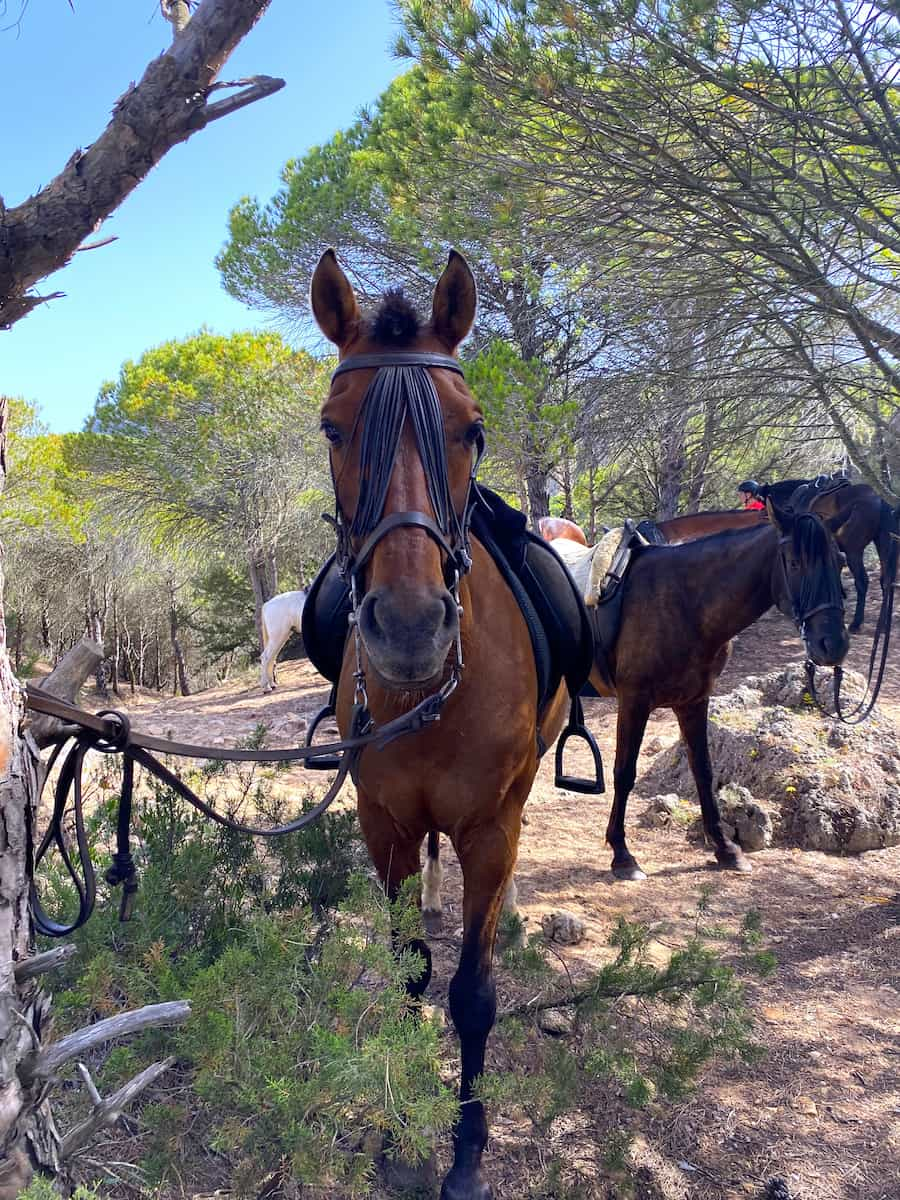
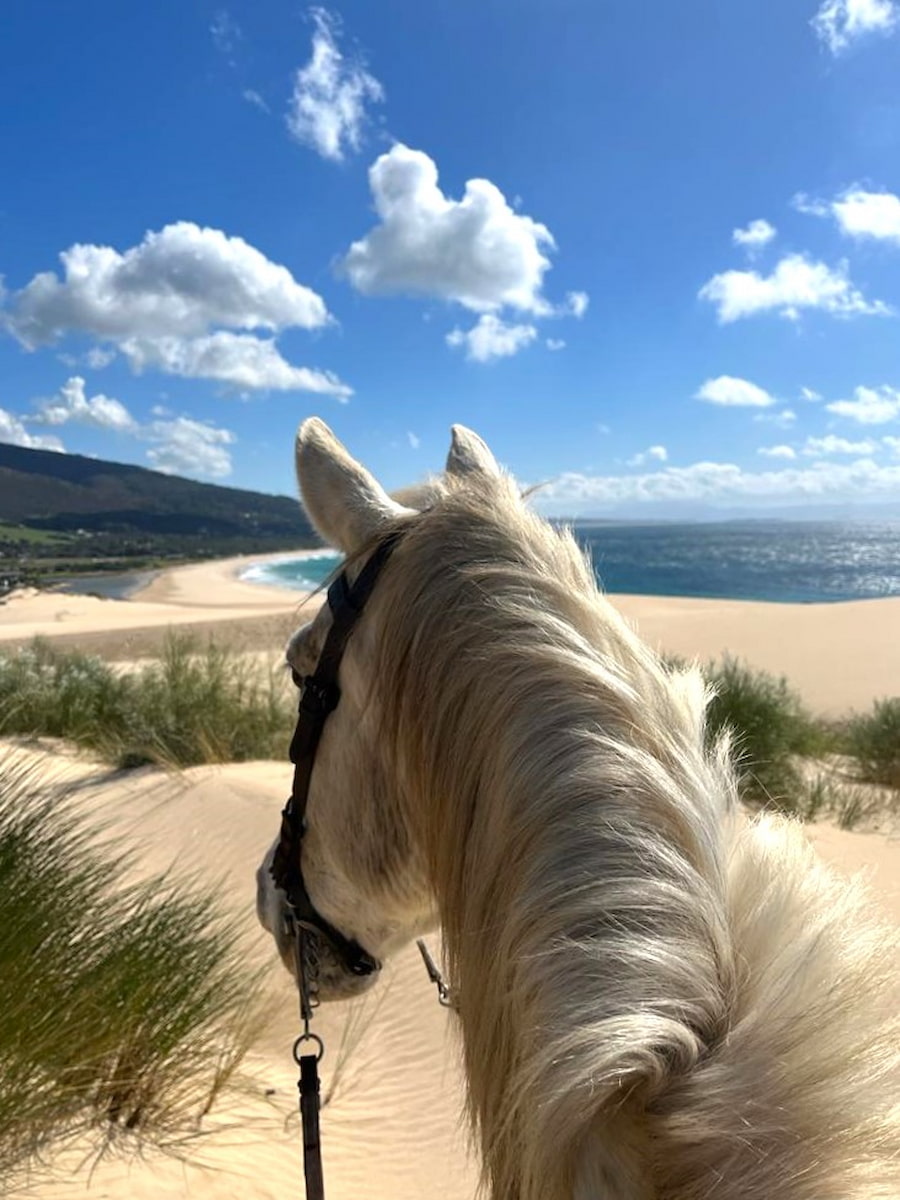

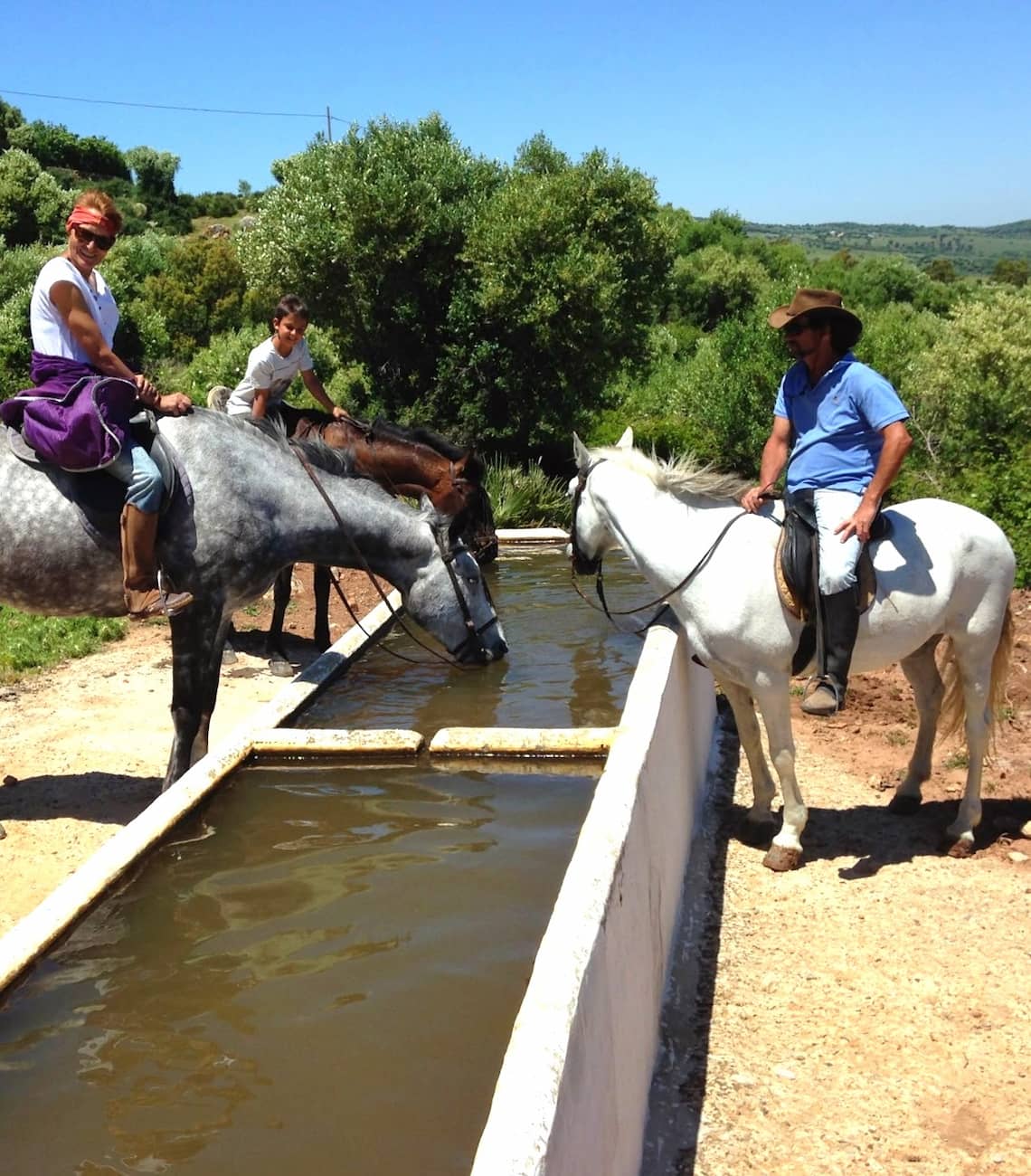
Scenic Routes. The most popular family route follows the coastline toward Punta Paloma, offering stunning views of the Strait of Gibraltar and Morocco. Children especially enjoyed spotting wild birds and learning about local flora from knowledgeable guides who speak multiple languages.
Age and Safety Requirements. Most operators accept children from age 6 with adult supervision, though some offer pony rides for younger kids. All participants must wear closed-toe shoes and long pants. I recommend booking morning tours when temperatures are cooler and horses are more energetic.
| Riding Options | Price (EUR) | Price (USD) | Duration |
|---|---|---|---|
| Pony ride (kids under 6) | €20 | $21.60 | 15 minutes |
| Beach ride (beginner) | €35-45 | $38-48 | 1 hour |
| Mountain trail | €45-55 | $48-59 | 1.5-2 hours |
⭐ Best Activities
- Horseback Riding in Tarifa - 2 Hours: Experience the coast of Spain on horseback. Ride along the beach or through pine forests, guided by professionals. Suitable for all skill levels and a memorable way to see the southernmost point of Europe.
3. Interpretation Centre at Baelo Claudia
Modern Museum Experience. The interpretation centre at Baelo Claudia opened in 2007 and provides an excellent introduction to Roman life before exploring the archaeological site. I watched children engage with interactive displays showing how Romans made garum fish sauce and used ancient tools in their daily lives.
Educational Exhibits. The museum features two floors with marble sculptures, amphoras, and everyday Roman town objects like lead pipes and fishing tools. The upper floor displays a detailed model of Baelo Claudia during Emperor Claudius’s reign, helping kids visualize how the ancient city looked 2,000 years ago.
Family-Friendly Features. The centre includes vending machines for cold drinks, clean restrooms, and air conditioning – essential during hot Andalusian summers. Children particularly enjoyed the “Piece of the Month” display near the entrance, which rotates different artifacts from the excavations.
Visiting Tarifa Tips. Arrive before noon to avoid crowds and secure parking, as the car park fills quickly during peak season. The site offers little shade, so bring hats and water bottles. Combined with the beach at Bolonia, this makes an excellent educational day trip from Tarifa.
| Visitor Information | Price (EUR) | Price (USD) |
|---|---|---|
| EU Citizens | Free (ID required) | Free |
| Non-EU Citizens | €1.50 | $1.60 |
| Guided Family Tour | €8-12 | $8.60-13 |
| Parking | Free | Free |
Free Things to Do in Tarifa
1. Punta de Tarifa (Southernmost Point of Europe)
Southernmost Point of Europe. Punta de Tarifa is the southernmost point of continental Europe, where the Atlantic Ocean and Mediterranean Sea converge. I walked along the causeway connecting this former island to mainland Spain, feeling the powerful winds that make Tarifa famous worldwide.
Historical Significance. The island takes its name from Tarif ibn Malik, who began the Islamic conquest of Hispania here in 711. I explored Phoenician tombs carved into rock and remnants of military installations that operated until 2001, adding historical depth to this geographical landmark.

Lighthouse and Views. The 19th-century lighthouse, built using a 16th-century beacon tower, stands as the first lighthouse constructed in the Strait of Gibraltar. From here, I could clearly see the Moroccan coastline just 14 kilometers away, making it feel like I could almost touch Africa.
Geological Features. The island showcases two distinct rock types – siliceous sandstone forming rocky crests and fossilized oyster beds used historically in construction. I noticed old quarry sites where stones were extracted for building Guzmán el Bueno Castle and other structures in Tarifa.
2. Parque Natural del Estrecho
Protected Natural Area. Parque Natural del Estrecho covers 19,000 hectares around Tarifa and offers some of southern Spain’s most spectacular hiking trails. I explored cork oak forests, Mediterranean scrubland, and coastal paths with stunning views across the Strait of Gibraltar toward Morocco and Tangier.
Trail Options. The park features routes for all fitness levels, from easy 3.7-mile walks to challenging 9.3-mile mountain hikes. I recommend the Sierra San Bartolomé circular trail for 360-degree views spanning from Tarifa to Morocco, though it requires good hiking boots and plenty of water.
Bird Watching Paradise. Over 300 million birds migrate through this area annually, making it one of Europe’s premier birding destinations. During spring and autumn migrations, I spotted eagles, vultures, and storks crossing between Europe and Africa – truly one of the best things to experience around Tarifa.
Practical Information. The park entrance is free, located 6km from Tarifa via the N-340 road. I always carry extra water, sun protection, and sturdy footwear when exploring these trails. The visitor center provides detailed maps and current trail conditions.
| Hiking Service | Price (EUR) | Price (USD) |
|---|---|---|
| Self-guided (free) | €0 | $0 |
| Guided tour (3-4h) | €35-45 | $38-48 |
| Private travel guide | €80-120 | $85-130 |
⭐ Best Activities
- Baptism of Diving in the Natural Park of the Strait: Try diving in Tarifa for the first time in the protected waters of Parque Natural. See marine life and learn the basics with a certified instructor—no previous experience needed.
3. Muralla Urbana & Puerta de Jerez
Medieval Defensive Walls. The Muralla Urbana dates back to the 13th century during Sancho IV’s reign, protecting Tarifa’s old town from Muslim raids and pirate attacks. I walked along these ancient walls and discovered sections where you can peer into local courtyards, creating an intimate connection with daily life in this charming coastal town.
Puerta de Jerez Gateway. This iconic gate features three consecutive arches – one ogival sandstone arch, followed by two horseshoe arches typical of Moorish architecture. The gateway houses “El Cristo de Los Vientos” altarpiece by local artist Guillermo Pérez Villalta, installed during the 2000 restoration.
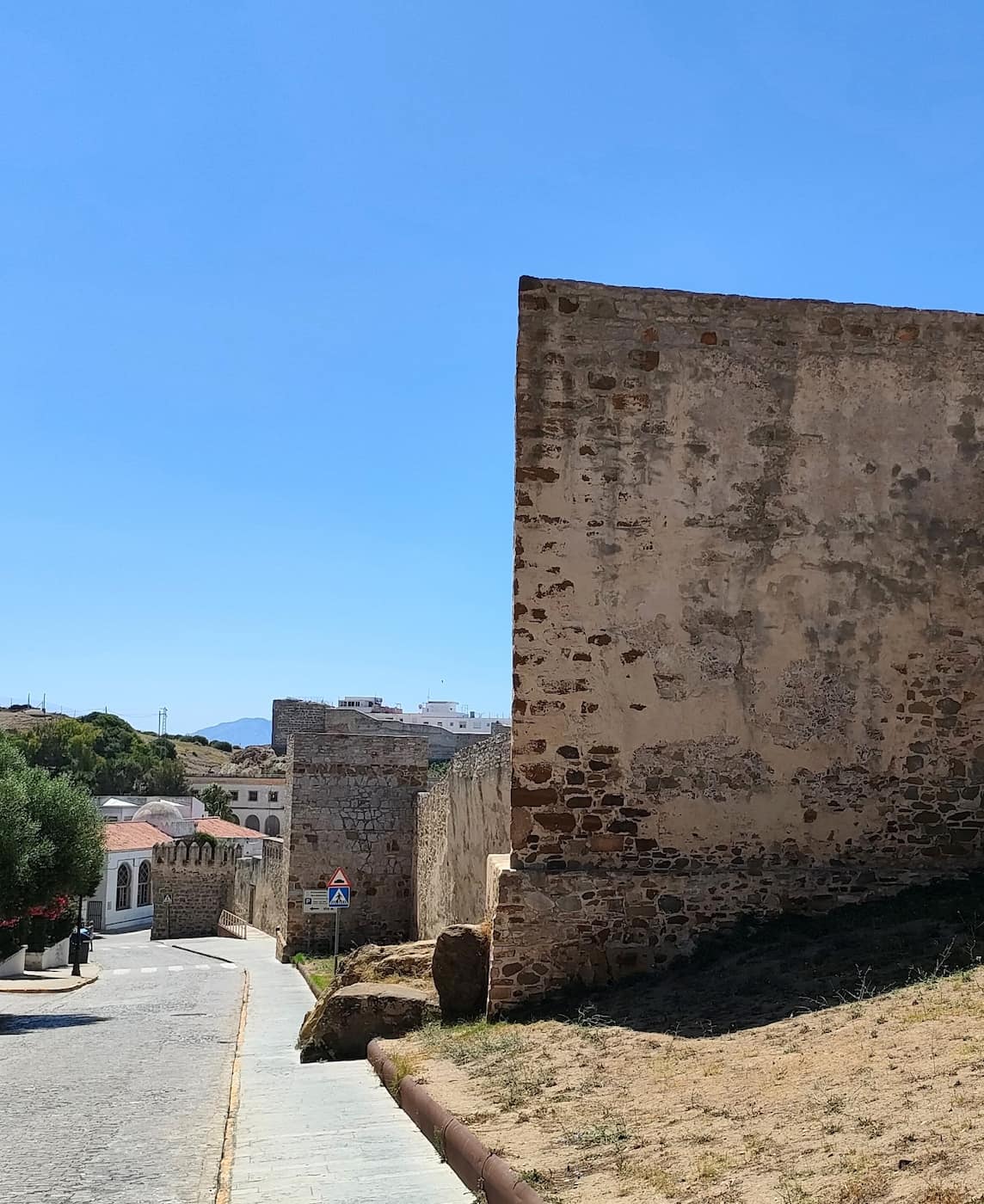
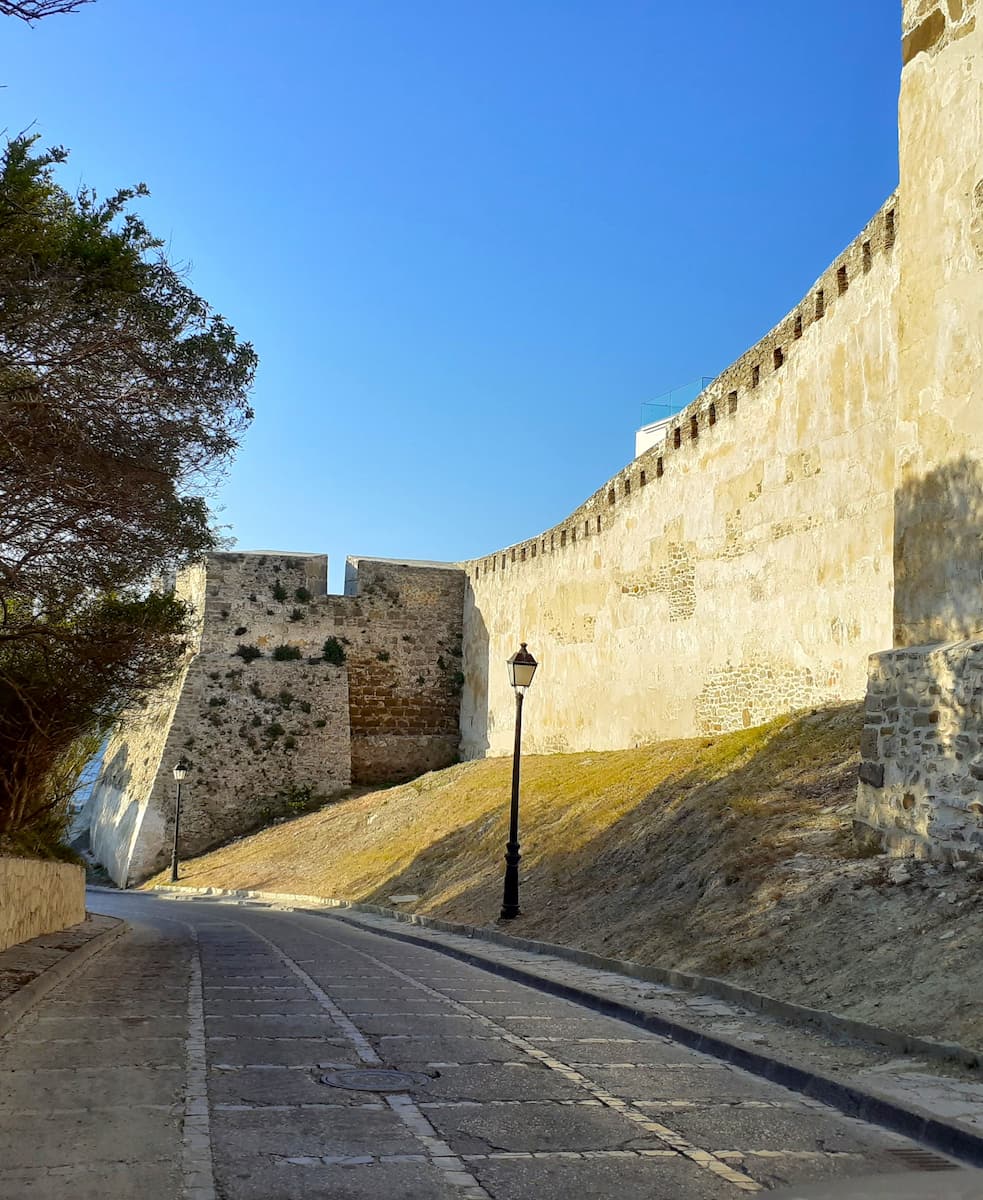
Walking Experience. The complete wall circuit takes about 45 minutes, offering views across the Strait of Gibraltar toward Morocco. I recommend starting at Puerta de Jerez and following the defensive perimeter clockwise to appreciate the blend of Islamic and Christian architectural influences.
Castle of Tarifa Entry. Entry to both the walls and Guzmán el Bueno Castle costs €5 total (around $5.40 USD), making this one of southern Spain’s best historical value experiences. The walls are accessible Tuesday-Sunday from 10:00-18:00, closed Mondays except holidays.
| Entry Options | Price (EUR) | Price (USD) |
|---|---|---|
| Walls Only | €1 | $1.08 |
| Castle + Walls | €5 | $5.40 |
| Free (exterior viewing) | €0 | $0 |
Seasonal Activities
Christmas in Tarifa
Festive Atmosphere. Christmas in Tarifa transforms the old town with twinkling lights adorning Plaza de Santa María and narrow whitewashed streets. I strolled through the illuminated historic center while enjoying traditional hot chocolate and pestiños, the essential Andalusian Christmas sweets that locals prepare during these dates.
Christmas Market and Events. The Christmas market operates in Plaza de San Hiscio, featuring handmade nativity figures, local cheeses, wines, and traditional decorations. The live nativity scene in mid-December draws crowds to the historic center, where locals recreate biblical scenes in an authentic setting.
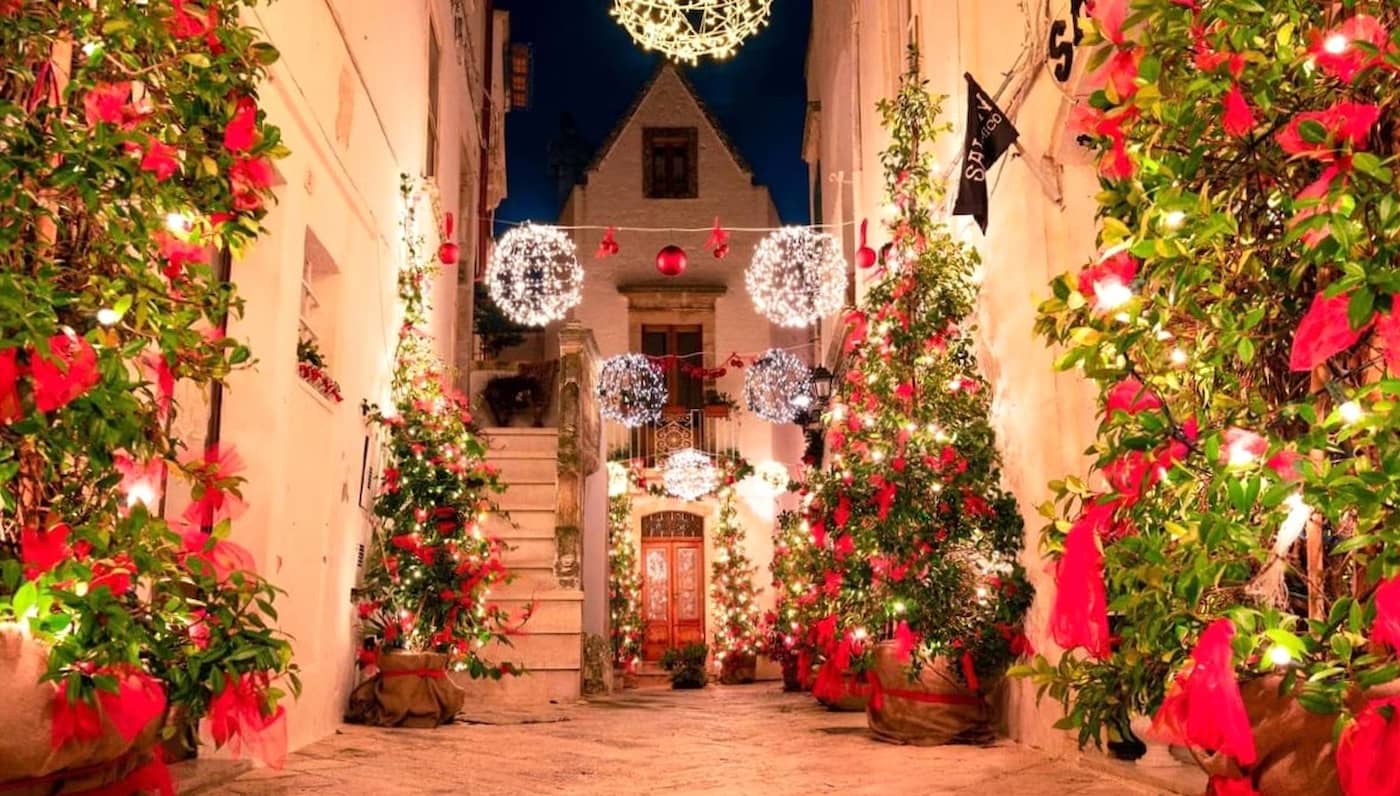
Holiday Gastronomy. Local restaurants serve special Christmas menus featuring stuffed turkey and minced meat soup, perfect for cooler December days. I discovered that many establishments offer holiday versions of traditional dishes incorporating fresh seafood from the nearby Atlantic waters.
Outdoor Activities. Despite winter weather, Tarifa’s mild climate allows hiking in Parque Natural del Estrecho and whale watching excursions in the Strait of Gibraltar. The town remains active with water sports enthusiasts, though appropriate cold-weather gear is essential for kitesurfing and windsurfing.
San Silvestre Race. The year-end fun run on December 31st welcomes both adults and children, with many participants wearing festive costumes. This family-friendly event creates a celebratory atmosphere as locals gather to exercise and welcome the new year together.
Summer Festivals and Events
Real Feria de Tarifa. The main summer festival takes place during the first week of September, featuring traditional Andalusian celebrations with flamenco performances, horse parades, and fairground attractions. I experienced the authentic atmosphere where locals dress in traditional costumes and dance sevillanas until dawn.
Virgin del Carmen Festival. This maritime celebration on July 16th honors the patron saint of fishermen with processions from the port area. The Velada de la Virgen del Carmen features concerts at Paseo de la Alameda, including performances by local groups like “La Huella” comparsa and invited artists.
Musical Programming. Summer events include concerts by “La Banda del Pelícano” and flamenco performances by artists like “Gitana Blanca” at the Alameda stage. The programming emphasizes local talent while attracting visitors to this charming coastal town during peak tourist season.
Port Activities. The fishing port hosts special morning activities during the Carmen festival, celebrating Tarifa’s maritime heritage. Local fishermen participate in traditional boat blessings, creating an authentic connection between the town’s seafaring culture and religious traditions.
Family Entertainment. Children’s theater shows and afternoon festivities at 20:00 hours complement the adult programming. The festival atmosphere extends throughout the old town, with tapas bars and restaurants offering special menus featuring fresh bluefin tuna and local specialties.
Spring Blooms in Natural Parks
Wildflower Season. March through May brings spectacular wildflower displays in Parque Natural del Estrecho, with coarse green grass carpeted by colorful blooms. I discovered romulea and other spring flowers that have evolved survival strategies for this coastal environment’s challenging conditions.
Migration Spectacle. Spring migration from March to April offers incredible bird watching opportunities as flocks return from Africa to Europe. The peak crossing periods bring thousands of raptors, storks, and smaller species through the Strait of Gibraltar’s natural bottleneck.
Punta Paloma Ecosystem. The protected sand dunes west of Tarifa support surprising plant diversity, with many species producing flowers in early spring. This fragile ecosystem, protected under Natura 2000 directives, showcases unique adaptations to the harsh coastal environment.
Photography Opportunities. The Rio de Valle estuary attracts wading birds during migration periods, creating excellent wildlife photography conditions. The combination of wildflowers, migrating birds, and dramatic coastal scenery makes spring ideal for nature enthusiasts visiting this area.
Hiking Conditions. Cooler spring temperatures provide perfect conditions for exploring Los Alcornocales Natural Park trails. The cork oak forests come alive with bird activity and blooming vegetation, offering comfortable hiking weather before summer heat arrives.
Autumn Foliage Walks
Cork Oak Forests. October through November transforms Parque Natural de los Alcornocales with autumn colors as cork trees and Mediterranean vegetation change from green to golden hues. I hiked through these ancient forests, enjoying the peaceful atmosphere and cooler temperatures after summer’s intense heat.
Migration Season. Autumn brings the most spectacular bird migration period from late August through October, when millions of birds gather before crossing to Africa. The Ornithological Observatory of Cazalla and Mirador provide excellent vantage points for witnessing this natural phenomenon.

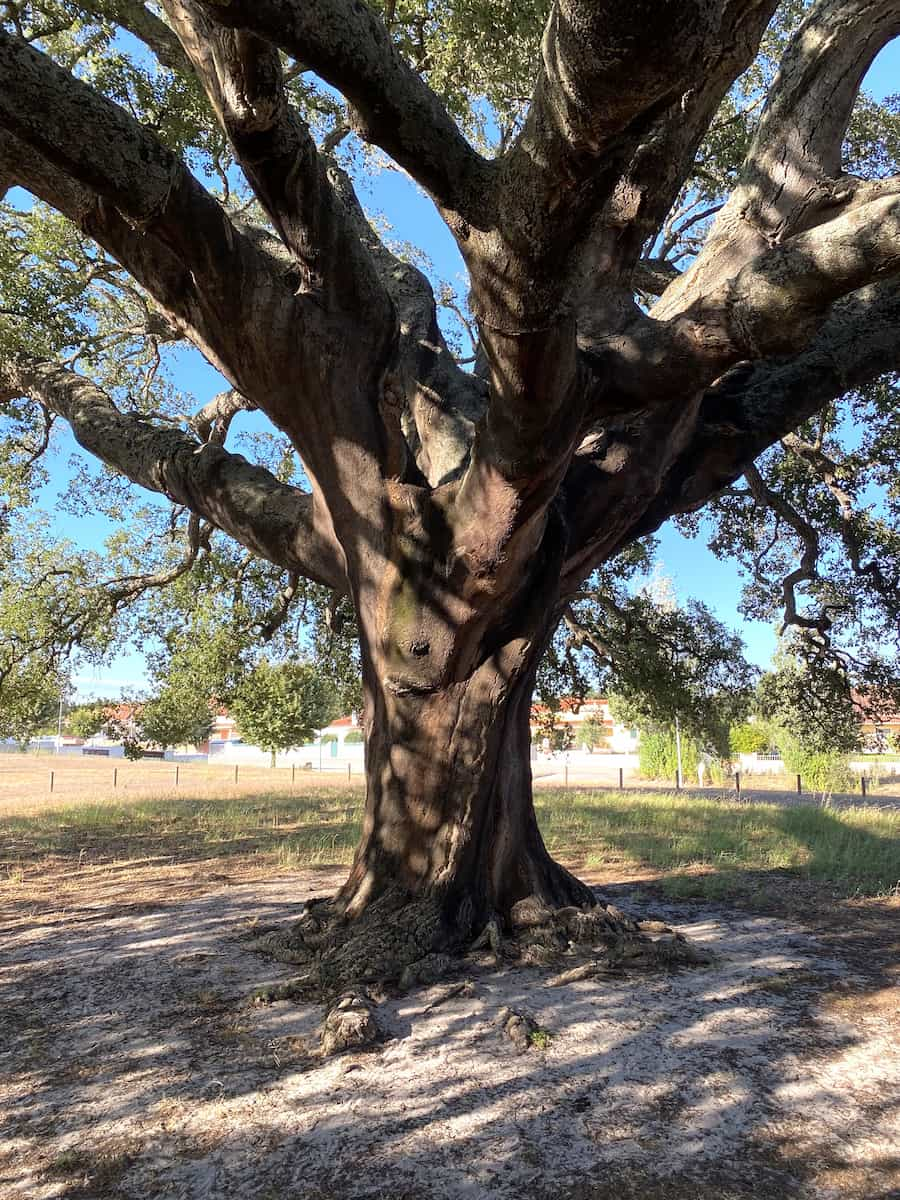
Reduced Crowds. Autumn offers ideal conditions for exploring Tarifa’s natural areas without summer crowds. I found hiking trails less busy and accommodation prices lower, making this season perfect for budget-conscious travelers seeking authentic experiences in southern Spain.
Weather Advantages. Cooler autumn weather makes outdoor activities more comfortable while maintaining excellent conditions for water sports. The famous Tarifa winds continue providing ideal kitesurfing and windsurfing conditions without summer’s scorching temperatures.
Extended Seasons. Whale watching continues through autumn months, with resident pilot whales, dolphins, and occasional larger species still active in the Strait of Gibraltar. The combination of bird migration and marine wildlife makes autumn particularly rewarding for nature enthusiasts.
| Seasonal Activity | Best Months | Price Range (EUR) | Price Range (USD) |
|---|---|---|---|
| Christmas Market | December | Free-€15 | Free-$16 |
| Summer Festivals | July-September | Free-€25 | Free-$27 |
| Spring Bird Watching | March-May | €35-65 | $38-70 |
| Autumn Hiking | October-November | Free-€45 | Free-$48 |
Day Trips from Tarifa
1. Tangier, Morocco (Ferry from Tarifa Port)
Africa in One Hour. The ferry crossing from Tarifa to Tangier takes just one hour across the Strait of Gibraltar, making Morocco easily accessible for day trips. I boarded the fast ferry at Port de Tarifa, operated by companies like Baleària and Africa Morocco Link, with departures running throughout the day.
Ferry Logistics. Round-trip tickets cost €40-45 for foot passengers, while bringing a car costs around €543. The ferries arrive at Port de Tanger Ville, located 15 minutes from Tangier’s historic center. I recommend booking advance tickets during peak season as vehicle spaces sell out quickly.
Tangier Experience. Once you arrive in Tangier, the medina’s bustling souks and traditional architecture provide an authentic Moroccan experience. I explored the Kasbah Museum, Cape Spartel lighthouse, and the famous Cave of Hercules during my visit, sampling tagine and mint tea at local restaurants.
Tour Options. Several companies offer complete packages from Tarifa including ferry transport, guided tours, and traditional Moroccan lunch. Private luxury tours cost €215-266 per person and include door-to-door transportation, WiFi-equipped vehicles, and professional guides speaking multiple languages.
| Ferry Service | Price (EUR) | Price (USD) | Duration |
|---|---|---|---|
| Foot passenger | €40-45 | $43-48 | 1 hour |
| Car + driver | €543 | $585 | 1 hour |
| Guided day tour | €65-85 | $70-91 | Full day |
| Private luxury tour | €215-266 | $231-286 | Full day |
⭐ Best Tours
- Day Trip to Tangier from Tarifa/Algeciras: Take a private, full-day tour from Tarifa to Tangier. Includes ferry, a guided tour of the Medina, camel ride, Moroccan lunch, and transport—perfect for a whirlwind Morocco experience.
- Tangier Private Tour: Discover Tangier’s highlights with a private guide. Visit the Kasbah, Hercules Cave, and enjoy a camel ride. Pickup from the ferry terminal makes this a smooth day trip from Spain.
2. Baelo Claudia Roman Ruins (Bolonia)
Ancient Roman City. Located 20 kilometers from Tarifa near Bolonia Beach, Baelo Claudia showcases remarkably preserved ruins from the 2nd century BC. I explored the forum, basilica, temples, and amphitheater while learning about this important Roman fishing settlement that specialized in garum fish sauce production.
Interpretation Centre. The modern museum opened in 2007 provides excellent context before visiting the archaeological site. Interactive displays show Roman daily life, fishing techniques, and artifact collections including marble sculptures and amphoras. Entry is free for EU citizens with ID, while non-EU visitors pay €1.50.
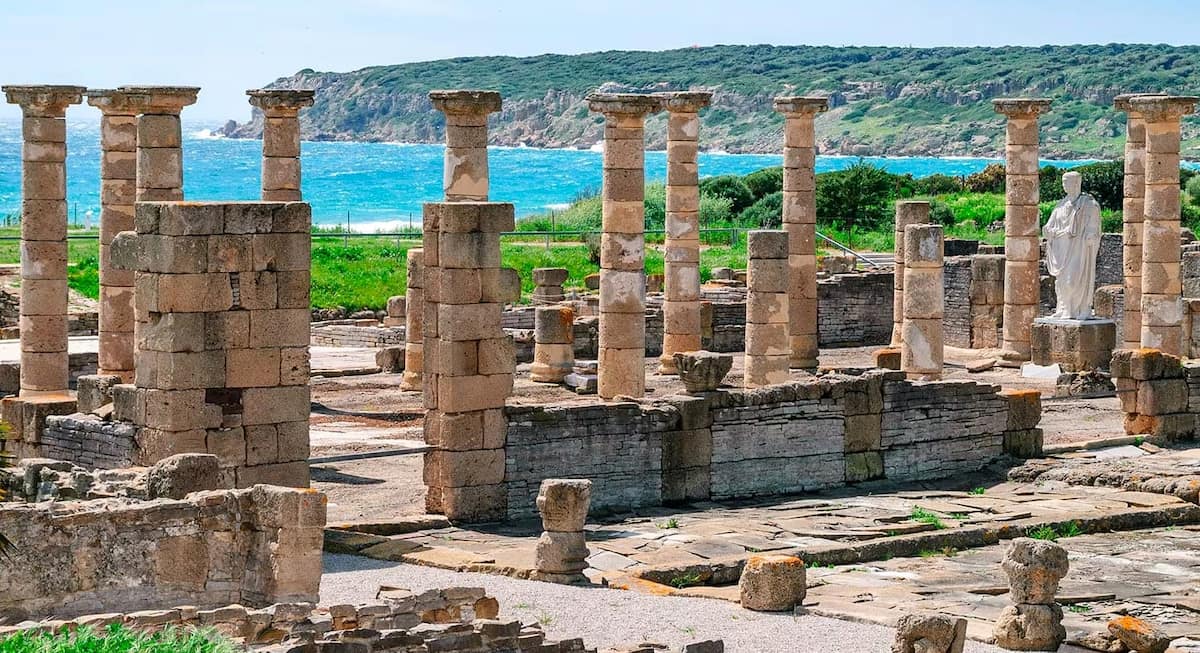
Bolonia Beach Combination. The ruins sit directly beside Bolonia Beach, featuring a spectacular 30-meter sand dune classified as a natural monument in 2001. I climbed the dune for panoramic views across the Strait of Gibraltar toward Morocco, then relaxed on one of Andalusia’s most beautiful beaches.
Natural Features. The beach extends 4 kilometers and features natural pools at the eastern end, accessible during low tide. Local cows often graze on the beach in the morning, creating charming photo opportunities. Chiringuitos like Sirocco and Sunset Loco Beach serve fresh seafood with views of the ancient ruins.
| Visitor Information | Price (EUR) | Price (USD) |
|---|---|---|
| EU Citizens | Free (ID required) | Free |
| Non-EU Citizens | €1.50 | $1.60 |
| Guided tours | €8-12 | $8.60-13 |
| Beach lunch | €15-25 | $16-27 |
⭐ Best Activities
- Baelo Claudia and Tarifa Day Tour from Seville: Explore the Roman ruins of Baelo Claudia and the coastal charm of Tarifa on this guided tour from Seville. Learn about ancient history and enjoy time at one of Spain’s most famous towns.
- Guided Snorkeling Activity on the Island of Tarifa: Discover Tarifa’s underwater world with a guided snorkeling adventure around Isla de las Palomas. Perfect for families and beginners, this tour includes all equipment and expert guidance in crystal-clear waters.
3. Gibraltar
British Territory in Spain. Gibraltar sits just 45 minutes drive from Tarifa via the A-7 highway, offering a unique blend of British culture and Mediterranean lifestyle. I crossed the famous airport runway on foot to enter this British Overseas Territory, where red telephone boxes and fish-and-chips shops coexist with Spanish architecture.
Rock of Gibraltar Experience. The Upper Rock Nature Reserve features the famous Barbary macaques, the only wild monkey population in Europe. I took the cable car to the top for €19 (around $20.50 USD) and explored St. Michael’s Cave, the Great Siege Tunnels, and enjoyed panoramic views across the Strait of Gibraltar to Morocco.
Duty-Free Shopping. Main Street offers excellent duty-free shopping for electronics, perfumes, and alcohol. I found significant savings on branded goods compared to Spanish prices, making Gibraltar popular with day-trippers from the Costa del Sol and southern Spain in general.
Border Considerations. Bring your passport as Gibraltar maintains border controls despite being part of the EU customs union. Parking in La Línea (Spanish side) costs €3-5 per day, then walk across the border. I recommend avoiding peak hours when queues can extend significantly.
| Gibraltar Services | Price (GBP/EUR) | Price (USD) |
|---|---|---|
| Cable car return | £19/€19 | $20.50 |
| Nature Reserve | £15/€15 | $16.20 |
| Parking (La Línea) | €3-5 | $3.25-5.40 |
| Border crossing | Free | Free |
4. White Villages (Vejer de la Frontera)
Hilltop Pueblo Blanco. Vejer de la Frontera perches dramatically on a hilltop 25 kilometers from Tarifa, representing one of Andalusia’s most beautiful white villages. I explored narrow cobbled streets lined with whitewashed houses adorned with colorful flower pots, discovering hidden plazas and traditional tapas bars.
Moorish Heritage. The village retains strong Islamic architectural influences from its 8th-century origins, including horseshoe arches and intricate tile work. The old mosque site now houses the Divino Salvador Church, while ancient walls and gates preserve the medieval layout that earned Vejer recognition as a Historic-Artistic Monument.
Local Gastronomy. Traditional restaurants serve excellent Andalusian cuisine featuring local specialties like retinto beef and fresh seafood from nearby Barbate. I dined at Casa Varo and El Jardín del Califa, both offering authentic regional dishes with prices ranging €15-25 for complete meals.
Artisan Shopping. The village features numerous craft shops selling handmade ceramics, leather goods, and textiles. Local artisans work in traditional techniques passed down through generations, creating unique souvenirs that reflect Vejer’s cultural heritage and artistic traditions.
5. Cadiz
Ancient Coastal City. Cadiz, located 100 kilometers from Tarifa via the A-48 highway, claims to be Western Europe’s oldest continuously inhabited city, founded by Phoenicians around 1100 BC. I explored the historic peninsula surrounded by Atlantic waters, discovering layers of Roman, Moorish, and Spanish colonial history.
Cathedral and Historic Center. The baroque Cathedral de Cadiz dominates the skyline with its distinctive golden dome visible from the sea. I climbed the Poniente Tower for €6 (around $6.50 USD) to enjoy panoramic views across the bay and historic quarter, including the colorful houses of La Viña neighborhood.
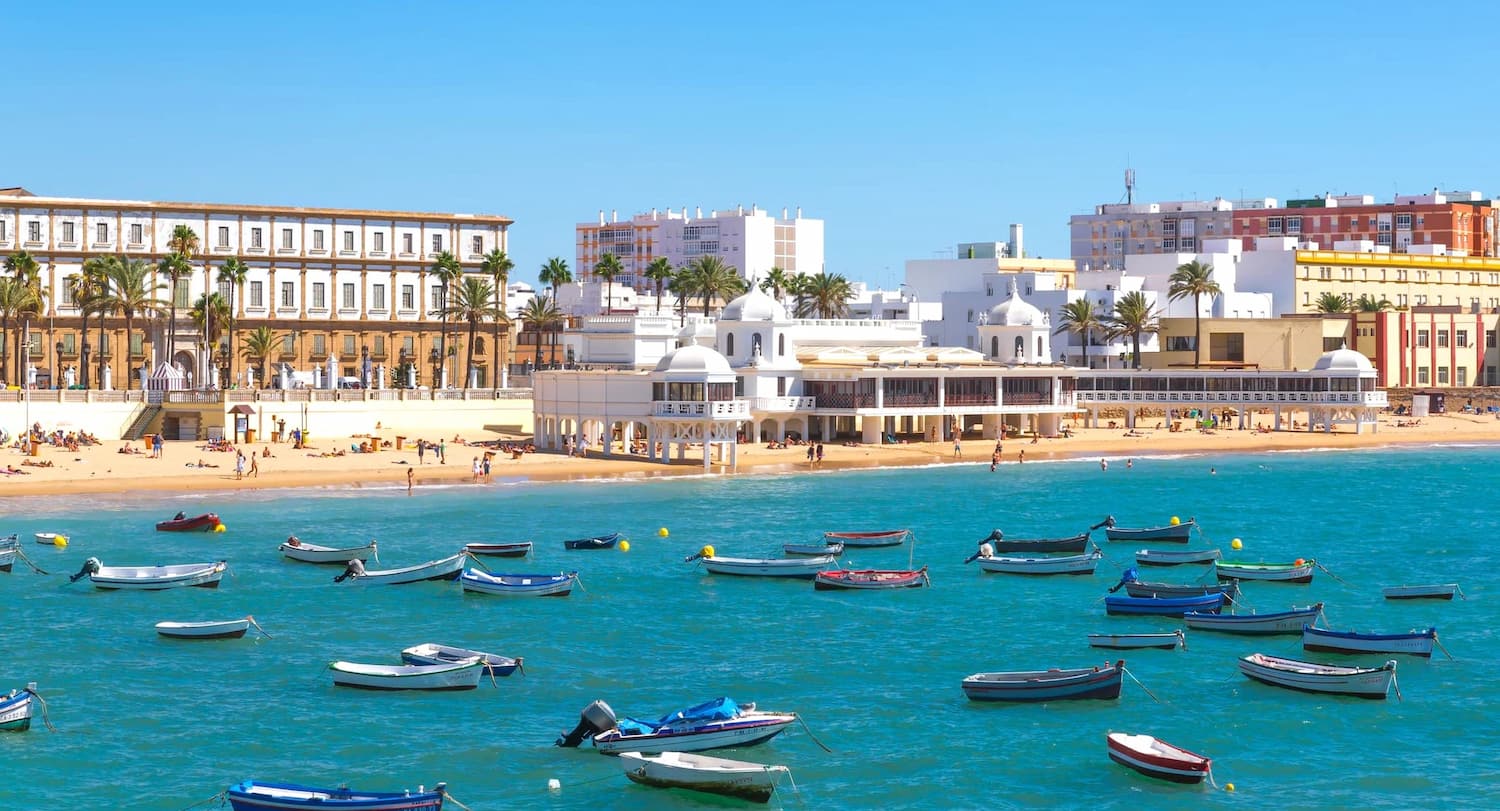
Carnival Capital. Cadiz hosts Spain’s most famous carnival celebration in February-March, rivaling Rio de Janeiro’s festivities. The city transforms with elaborate costumes, satirical performances, and street parties that attract visitors from across Europe. Even outside carnival season, the festive atmosphere permeates local culture.
Beaches and Promenades. La Caleta sits between two historic castles in the city center, while Playa de la Victoria extends for several kilometers along the modern district. I enjoyed walking the seafront promenade, stopping at chiringuitos for fresh fried fish and cold beer.
| Cadiz Attractions | Price (EUR) | Price (USD) |
|---|---|---|
| Cathedral + Tower | €6 | $6.50 |
| Museo de Cadiz | €1.50 | $1.60 |
| Torre Tavira | €7 | $7.55 |
| Parking (city center) | €1.20/hour | $1.30/hour |
⭐ Best Activities
- Whale and Dolphin Watching : Join a full-day trip from Seville to Tarifa for whale and dolphin watching in the Strait of Gibraltar. Includes transfers, boat tour, and expert marine guides.
FAQ
Is Tarifa, Spain worth visiting?
Absolutely. Tarifa is one of southern Spain’s most unique destinations, famous for its wild beaches, vibrant old town, and the spot where the Atlantic Ocean meets the Mediterranean Sea.
How to spend a day in Tarifa?
Start with breakfast in a local café, then explore the old town and Puerta de Jerez. Visit Guzmán el Bueno Castle for history and views. Head to Playa de Los Lances for a walk or to watch kitesurfers. Have lunch at a chiringuito (beach bar), then stroll to Isla de las Palomas—the southernmost point of Europe.
What is Tarifa famous for?
Tarifa is best known as the wind capital of Europe, attracting kitesurfers and windsurfers from around the world.
Why is Tarifa so expensive?
Prices in Tarifa are high mainly due to its popularity with international tourists, limited accommodation (especially in summer), and its status as a top destination for water sports. Rental costs and hotel prices can double or triple in high season.
How safe is Tarifa?
Tarifa is considered very safe. It’s a small, close-knit community where violent crime is rare. Standard travel precautions apply—watch your belongings in crowded places, especially in summer.
What is the best time to visit Tarifa?
The best time to visit Tarifa is in late spring (April, May, June) and early autumn (September, October). During these months, you’ll enjoy warm but comfortable weather, plenty of wind for kitesurfing, fewer crowds, and more affordable accommodation.
